How To Choose The
Best Packing Cubes for Travel
From compression packing cubes to ultralight and budget, we’re here to help.
- 01. Introduction
- 02. Our Picks
- 03. Considerations
- 04. Ultralight
- 05. Compression
- 06. Budget
- 07. Specialist
Packing cubes are used to compartmentalize your items and organize your pack.
We’ve teamed up with CabinZero to give away a selection of top travel gear! Check it out →
Best Packing Cubes
Click to learn more about some of our favorites packing cubes below.
- Eagle Creek Pack-It Isolate Packing Cubes (best value)
- Amazon Basics Packing Cube Set (best budget)
- Peak Design Packing Cubes (best compression)
- Hyperlite Mountain Gear Pods (best ultralight)
Editor’s Note
October 14, 2025: We reduced our list of Our Picks to dial in the best selections.
January 14, 2025: We updated Our Picks to include a budget option and refined descriptions of each packing cube type to be more concise.
What Will This Guide Help You With?
When you open your bag, do you prefer a neatly organized system that’s easy to navigate or a jumbled mess of creased clothing? If you’re the former, great! We’ll get along just fine, and you’re definitely in the right place. Everyone on the Pack Hacker team loves the extra organization and convenience packing cubes have to offer. We find that it’s much easier to keep our clothing from getting messed up and wrinkled in our travel backpack, even when we stuff it full. And, if you’re the latter, don’t click away just yet! We have tried and tested packing cubes—from all different companies and for every type of traveler—so we’re sure we have the best option for you.
And if you’re still thinking packing cubes are a waste of time, we should mention that these nifty things make packing and unpacking easier. Whether you’re an ultra-minimalist, an “I need absolutely everything for any situation” packer, or something in-between—being able to just swap a few bags in and out of your pack is a dream.
What Will This Guide Help You With?
This guide will cover different types of slings and explain how to choose the best one for your needs. Each section illustrates the following information to help you narrow them down:
- Our Picks: In this section, you’ll see picks across different styles and use cases: ultralight cubes, high-compression models, solid all-rounders, budget options, and more specialized choices. We highlight the materials, durability, opening design, and real-world usability so you can compare which cube best matches your travel habits.
- Considerations: Here, we cover the elements you should weigh when choosing packing cubes. It covers zipper quality and design (types of openings, number of zippers), handles, internal/external pockets or dividers, choice of materials, and how the cube fits into your packing system.
- Ultralight: This section explores ultra-minimal packing cubes. We explain what makes a cube “ultralight” and discuss the trade-offs, helping you decide if ultralight cubes are the best pick for you.
- Compression: These are packing cubes with an extra zipper or system that allows you to reduce their volume after packing. In this section, we explain why compression cubes are useful and the materials, durability, and stress factors that make or break a good compression cube.
- Budget: This section makes a case for lower-cost packing cubes. We’ll cover what trade-offs to expect and detail when a budget cube truly makes sense.
- Specialist: In this section, we discuss packing cubes designed for niche use cases. Whether they’re weather-resistant or waterproof cubes, padded cubes for delicate items, cubes tailored to specific luggage systems, or cubes with hybrid features, the goal is to help you match a cube to your specific gear and conditions.
Some of our favorite packing cubes to kick off your search.
We’ve teamed up with CabinZero to give away a selection of top travel gear! Check it out →
Best Packing Cubes
Click to learn more about some of our favorites packing cubes below.
- Eagle Creek Pack-It Isolate Packing Cubes (best value)
- Amazon Basics Packing Cube Set (best budget)
- Peak Design Packing Cubes (best compression)
- Hyperlite Mountain Gear Pods (best ultralight)
Editor’s Note
October 14, 2025: We reduced our list of Our Picks to dial in the best selections.
January 14, 2025: We updated Our Picks to include a budget option and refined descriptions of each packing cube type to be more concise.
What Will This Guide Help You With?
When you open your bag, do you prefer a neatly organized system that’s easy to navigate or a jumbled mess of creased clothing? If you’re the former, great! We’ll get along just fine, and you’re definitely in the right place. Everyone on the Pack Hacker team loves the extra organization and convenience packing cubes have to offer. We find that it’s much easier to keep our clothing from getting messed up and wrinkled in our travel backpack, even when we stuff it full. And, if you’re the latter, don’t click away just yet! We have tried and tested packing cubes—from all different companies and for every type of traveler—so we’re sure we have the best option for you.
And if you’re still thinking packing cubes are a waste of time, we should mention that these nifty things make packing and unpacking easier. Whether you’re an ultra-minimalist, an “I need absolutely everything for any situation” packer, or something in-between—being able to just swap a few bags in and out of your pack is a dream.
What Will This Guide Help You With?
This guide will cover different types of slings and explain how to choose the best one for your needs. Each section illustrates the following information to help you narrow them down:
- Our Picks: In this section, you’ll see picks across different styles and use cases: ultralight cubes, high-compression models, solid all-rounders, budget options, and more specialized choices. We highlight the materials, durability, opening design, and real-world usability so you can compare which cube best matches your travel habits.
- Considerations: Here, we cover the elements you should weigh when choosing packing cubes. It covers zipper quality and design (types of openings, number of zippers), handles, internal/external pockets or dividers, choice of materials, and how the cube fits into your packing system.
- Ultralight: This section explores ultra-minimal packing cubes. We explain what makes a cube “ultralight” and discuss the trade-offs, helping you decide if ultralight cubes are the best pick for you.
- Compression: These are packing cubes with an extra zipper or system that allows you to reduce their volume after packing. In this section, we explain why compression cubes are useful and the materials, durability, and stress factors that make or break a good compression cube.
- Budget: This section makes a case for lower-cost packing cubes. We’ll cover what trade-offs to expect and detail when a budget cube truly makes sense.
- Specialist: In this section, we discuss packing cubes designed for niche use cases. Whether they’re weather-resistant or waterproof cubes, padded cubes for delicate items, cubes tailored to specific luggage systems, or cubes with hybrid features, the goal is to help you match a cube to your specific gear and conditions.
Best Value Packing Cube
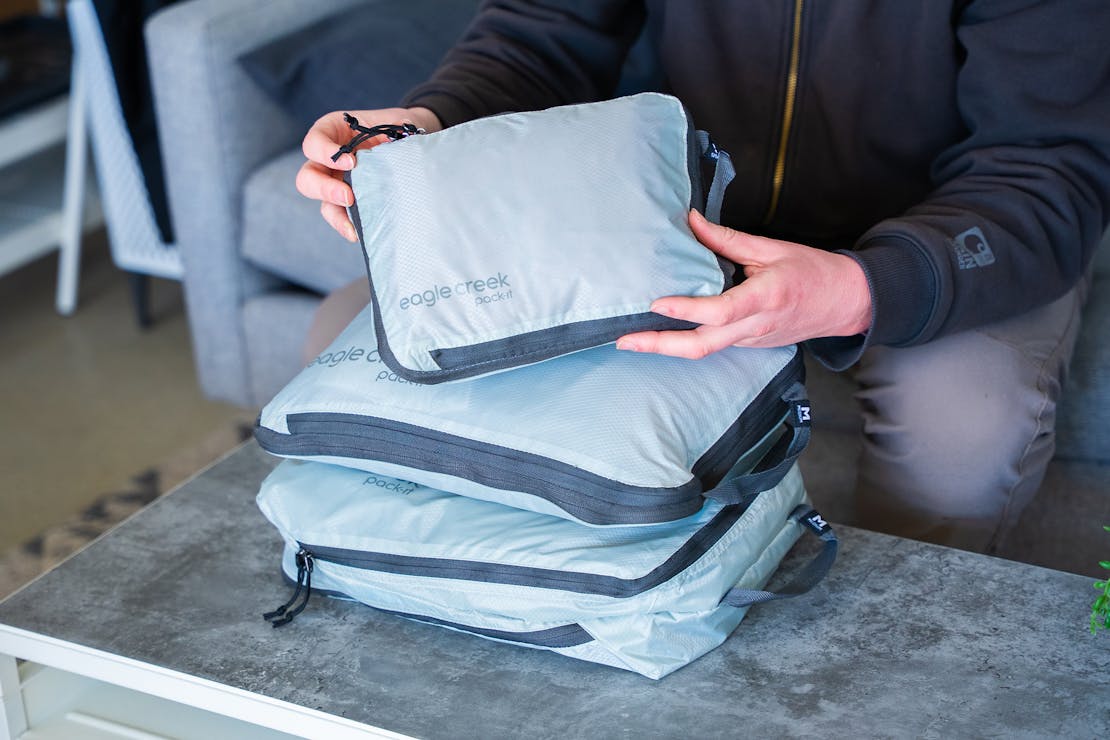
When you’re looking for a lightweight, no-frills option to get the job done, the Eagle Creek Pack-It Isolate packing cubes are a great choice. In fact, we can confidently say that the “Isolate” packing cubes are our favorites in the Eagle Creek Line. The Isolates are lightweight and come in various sizes, from x-small to a laundry bag. There’s even a rolltop shoe pouch, so you can get whatever functionality you want in a matching set. We do like how all of them have tags with a letter indicating their size (S for small and so on) because it helps you differentiate between them and remember what size you’ve got if you want to stock up on more.
You can also choose to get them in either “cube” or “sac” shape. Cubes are, obviously, shaped like a cube, while the sacs are flatter (think of an oversized pencil case). They include a wide range of sizes and colors to suit any load-out, and their angled zippers create a small tub shape, which is easy for packing because you simply set everything inside. We find the medium slim best for rolling up button-up shirts to keep them wrinkle free, for example, and can fit even our warmest puffer jacket inside the small compression cube. Whichever size and shape you choose, they’re made with a washable and water-resistant polyester ripstop, which feels a bit slippery but, on the other hand, slides in and out of your bag pretty easily. The Zoom zippers have paracord zipper pulls that are easy to grip, which is good when you’re pulling hard to squeeze the compression cubes closed.
Why We Like It
- Eagle Creek has a great lifetime warranty that we’ve put to the test
- The angled zippers create an easy-to-pack tub shape
What You Should Know
- The compression cubes aren’t very easy to zip when packed tightly
- The rolltop shoe sack isn’t airtight
Best Budget Packing Cube
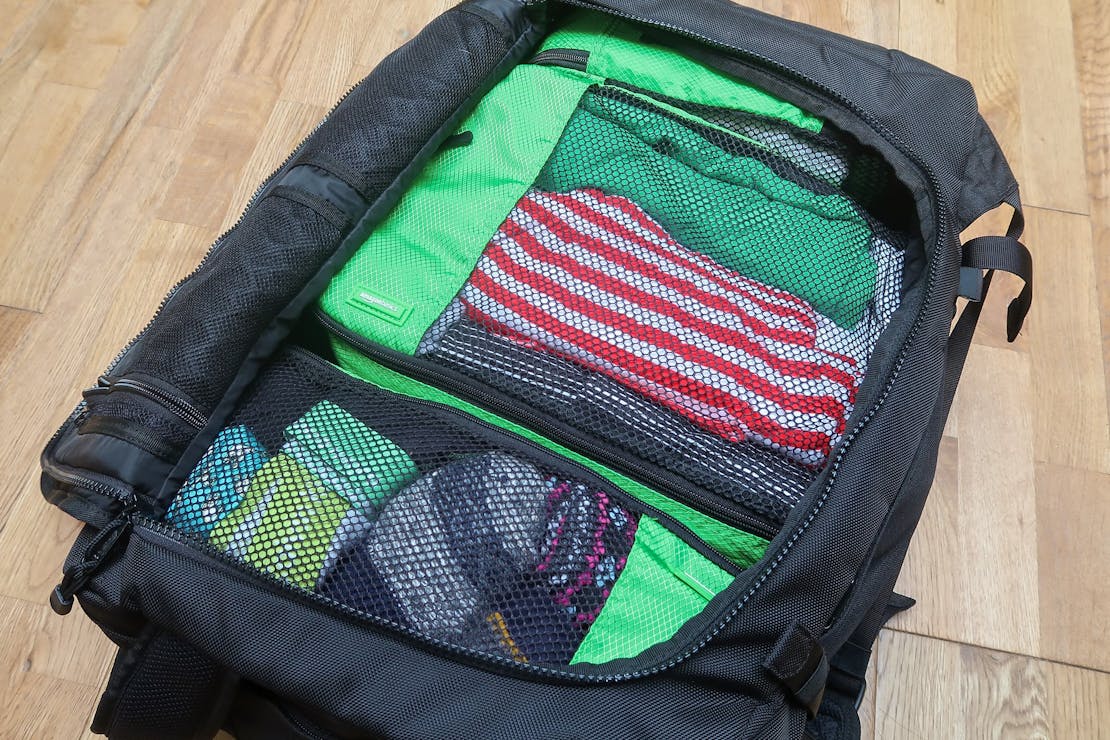
These cubes are as basic as it gets, though that’s not necessarily a bad thing. Instead of relying on durable materials and reliable hardware, these cubes keep it simple and come in at a budget price ideal for those who aren’t quite sold on packing cubes just yet. Choose between different sizes or get a multipack with a combination of them all, and select your favorite color, from neutral tones to bright neons.
We’re not blown away by the cubes’ construction. However the polyester material and unbranded zippers have held up well after two years of travel in over twenty countries, so it’s safe to say that we can vouch for their longevity. Even so, if one cube happens to break, you won’t be clearing out your bank account to replace it.
Why We Like It
- Great starter cubes for those getting started on bag organization
- Have held up well after years of testing
What You Should Know
- Made with lackluster materials that don’t feel very premium
- Cannot buy individual cubes at the time of writing; you must by a pack of four
Best Compression Packing Cube
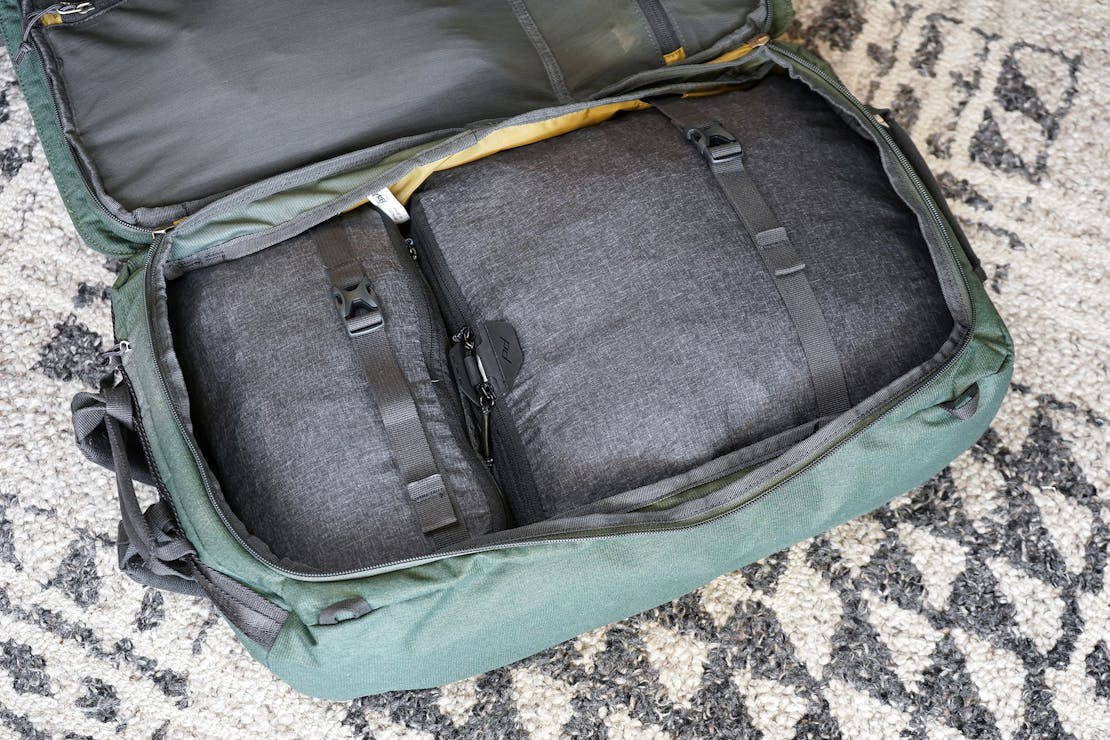
The Peak Design Packing Cubes are made to fit the Peak Design Travel Backpack, but we use them in plenty of other bags, as well. These are some of the best packing cubes when you need to get at your gear quickly because there’s a zipper on each side with a Hypalon tab in the middle. Instead of unzipping around the entire cube every time, pull the tab and peel back the lid to get to what’s inside—it doesn’t get much quicker than that. This can be hard on zippers, but these YKK models can take it and we’ve had no issues with them even thinking about failing after years of use. Opposite that big clamshell opening is a separate compartment to hold your dirty clothing, which works just as intended, and we like the ability to stuff our used gear in the backside when we’re through.
These cubes are also compressible, which we find really useful to save some space and cram in much more clothing without causing wrinkles. While it seems like you’re stressing the material, it’s a stretchy self-healing 70D nylon/polyester blend. We’re not 100% sure how it works, but we have accidentally punctured a small hole in the material and been amazed to see the fabric go back to normal, which is great when you’re half-way around the world and would rather spend cash on souvenirs than a new packing cube.
Why We Like It
- Clean and dirty pockets let us easily separate our clothing
- They’re easily compressible
What You Should Know
- Multiple zippers around the outside, so you’ll have to pay attention to which one you’re grabbing to open it
- There is only small, medium, and a shoe pouch at the time of writing, and we wish more sizes were available
Best Ultralight Packing Cube
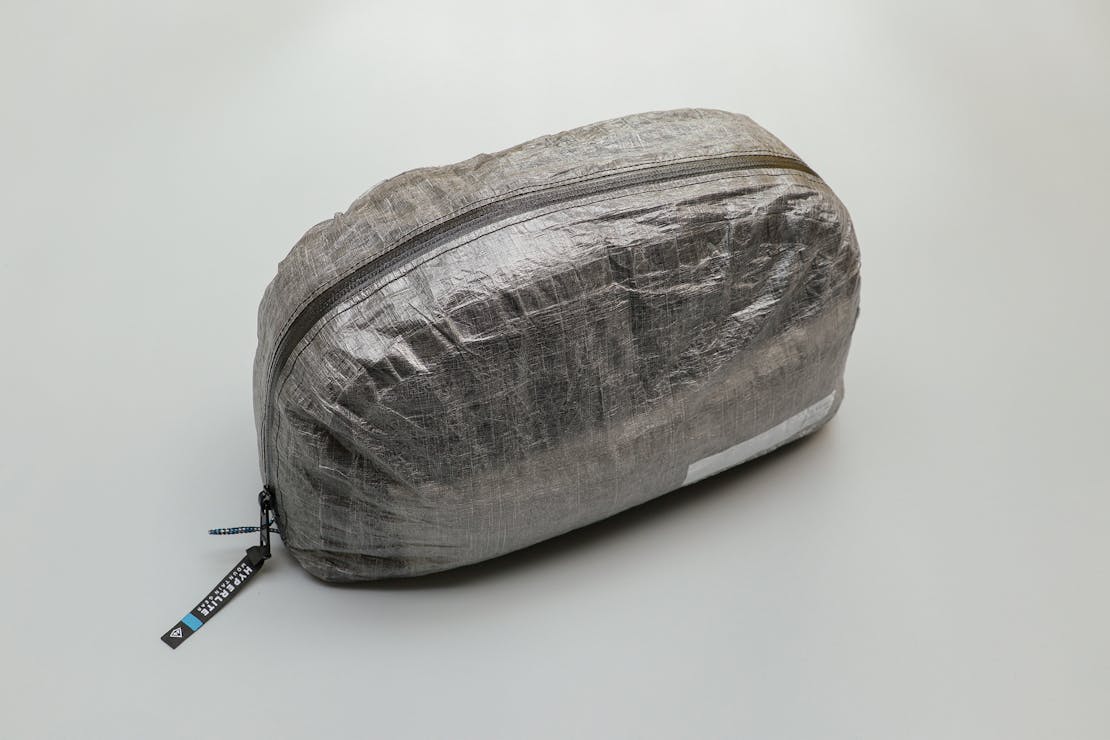
These cubes are the lightest of the light. They practically float when we toss an empty one in the air. They’re more outdoor-focused than others we’ve tested, but we think they’re some of the best packing cubes for travel to a city, as well. After all, it’s not like we’re carrying them around New York City on their own, and trekking from your hostel to Manhattan in the rain can mean that packing cubes in the Big Apple need to be just as durable as in Big Sur. While they may look like plastic bags, they’re way more innovative. The Dyneema fabric is water-resistant and allegedly stronger than Kevlar. If you don’t know what that is, it’s the material used in bullet-proof vests, so if they can stop a speeding bullet like Superman, we think they’ll keep our gear safe enough. However, they’re only available in gray, and the material is a bit crinkly without much stretch. It feels and sounds like an outdoor tarp, which is great for durability but not as much for aesthetics.
We like the Hyperlite logo because it has a big white space we use to label what’s inside since you can’t see if the pod is holding your tops, bottoms, or something else. There are four available sizes, and even the small ones can hold a surprising amount of gear, so there’s no need to overfill one when you can upgrade to a larger model for bulkier gear. In addition to the unique materials, it has a different type of opening than other packing cubes we’ve seen with a flat lid design. You sit it upright, unzip the mostly clamshell opening, and stack your stuff inside. We find that it’s helpful for fully using the interior space, whether you want to pack it full of clothing or other travel essentials.
Why We Like It
- The Dyneema fabric has a great strength-to-weight ratio, so they won’t add much weight to your pack
- We’re able to fit quite a lot of clothing inside one pod
What You Should Know
- They’re pretty crinkly and sound like a tarp blowing in the wind when you’re packing them
- Your gear will rest in several layers with their unique shape
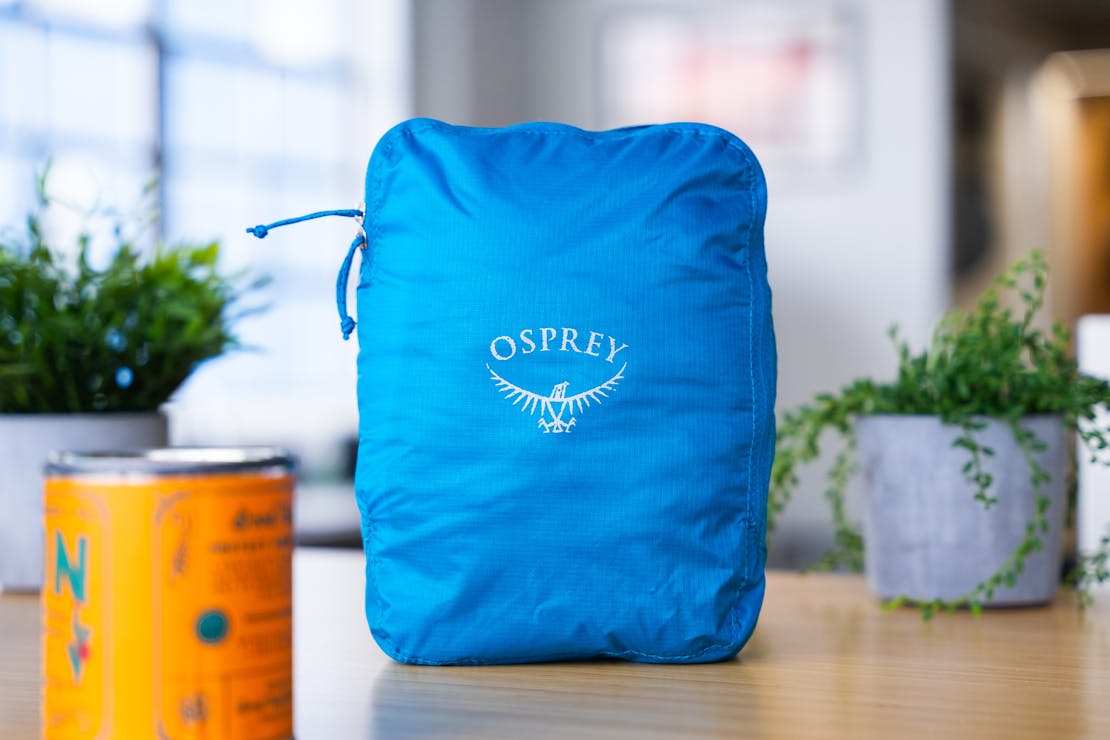
If you’re looking for a set of ultralight packing cubes that won’t break the bank, the Osprey Ultralight Packing Cube Set is a fantastic choice. The small, medium, and large sizes are ideal for one bag travel, the craftsmanship is superb, and we’ve been impressed with the bluesign® approved recycled 40D ripstop nylon material’s durability. They’re easy to pull out of your pack with top handles, and while they’re not compression cubes, we have managed to fit quite a lot inside and watch it compact down well. There are two zippers on each cube, so it’s easier to wedge them around corners to close the cubes, even if we overpack them just a bit. The J-zip opening, which extends further down one side than the other, makes them easy to pack with your gear. We tend to wedge clothing we plan to wear later in the trip in the closed-off corner to leave the outfits we want to grab first easily accessible. Plus, you can open them just a little to pull out one sock if you don’t want to dislodge everything just because you forgot and wore Crocs to the airport and don’t want your dogs to touch the dirty floor through security.
Depending on the size of your clothing, you can fit quite a few tees inside the medium; use the large for leggings, pants, and shorts; and fill the small with your socks, underwear, and swimsuit. We managed to fit a week’s worth of warm-weather gear inside with no issue, so we think that makes them the best packing cubes for travel on a budget airline. You can squeeze a lot of gear into a smaller space, saving you money on checked luggage.
Why We Like It
- Easy to zip them up, even with a lot of clothing inside
- Double zipper pulls let you open them at any point along the track
What You Should Know
- You can’t see what’s inside, so you’ll just have to remember where you put something
- The material is a little slick, making them a little hard to stack in your pack
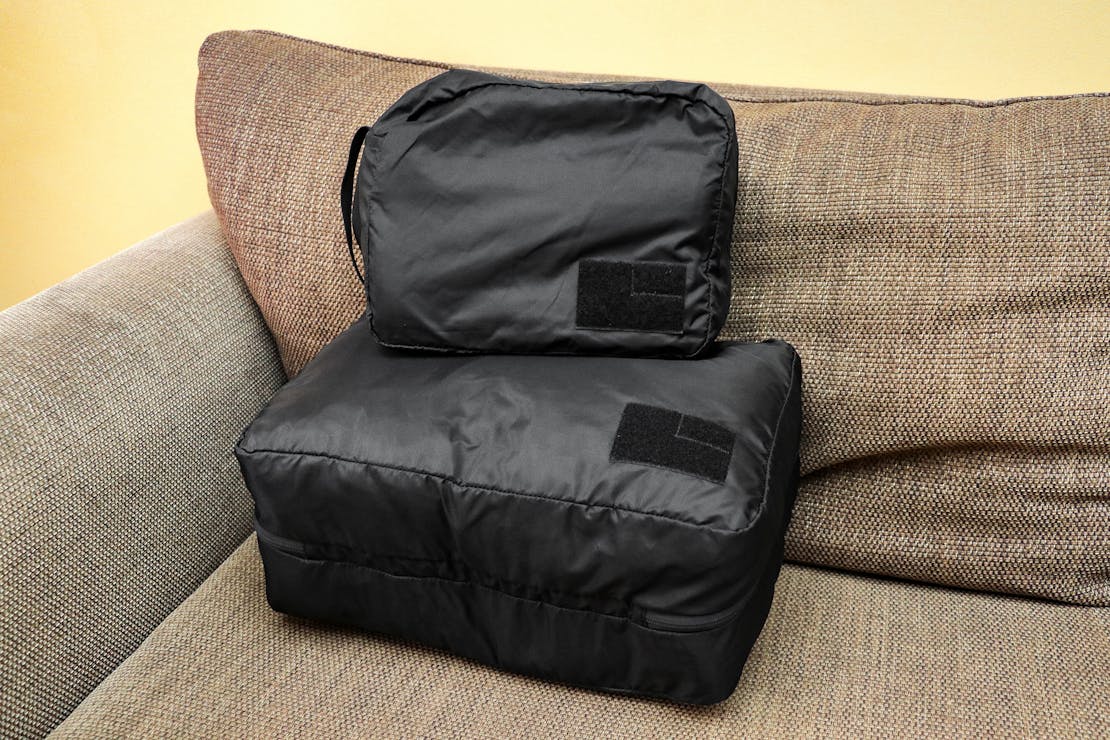
The GORUCK Packing Cubes are exactly what you would expect from GORUCK: durable, well-made, and as purpose-built as other GORUCK gear we’ve tested. They’re the best packing cubes for fans of the brand since they have a similar tactical aesthetic. They’re only available in black and have a hook-and-loop fastener patch in the bottom corner. You can leave it blank or personalize it with a Pack Hacker patch like we do, or you can get write-on patches to label what’s in each cube.
We find that the dual-sided interior helps us stay organized, and the mesh lets you see what’s going on inside. We like to pack tops on one side and bottoms on the other, or all our black clothing on one side and gray on the other. You can use them for clean and dirty clothing, too, but the mesh doesn’t stretch, so you can’t get one side to expand while the other shrinks. There are six zippers on each cube (two outside and two on each side of the interior), and they’re different colors: black on the exterior and red and gray inside. It’s nice to always know what zipper to grab, but the long cords on the pulls frequently stick out and interfere with zipping the cube back together. While it’s frustrating, it’s not a deal-breaker.
Why We Like It
- The double carry handles make them very easy to maneuver around
- They fit really well inside GORUCK packs
What You Should Know
- You can’t get them in any color other than black
- Available in 10L and 20L sizes, so they’re larger than you’d expect when fully packed
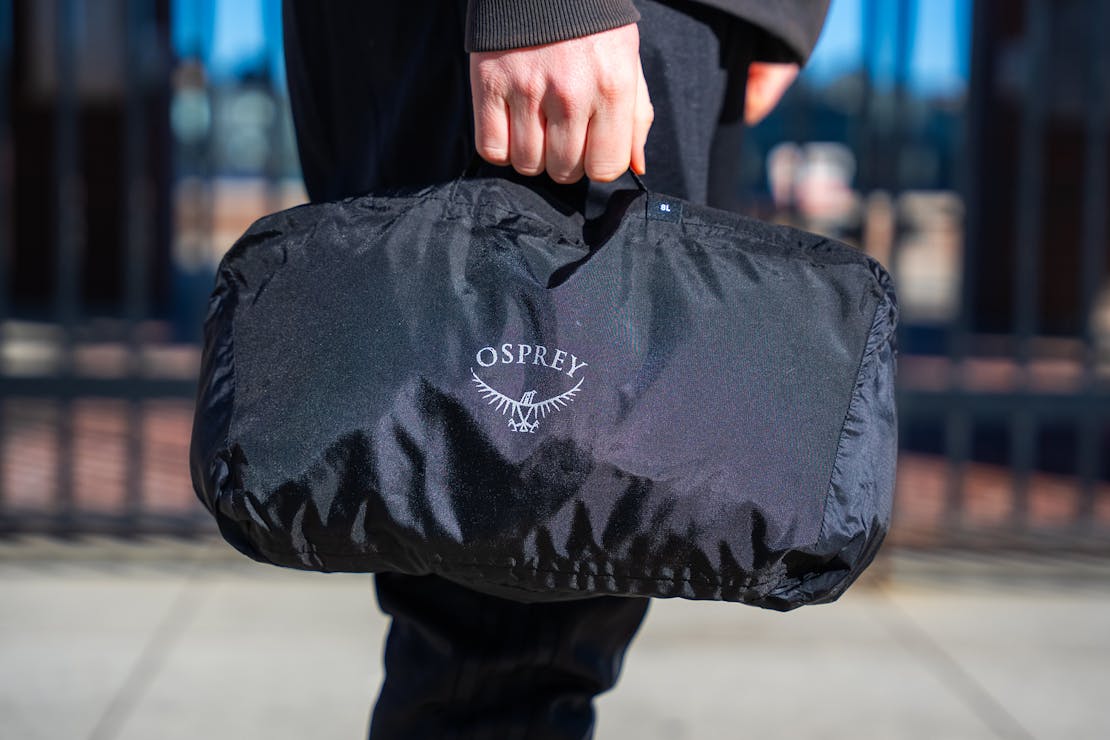
The Osprey StraightJacket Compression Sack is unique because it doesn’t feature a zipper. It’s essentially a stuff sack with two clips you can cinch down, making it incredibly versatile and the best zipperless packing cube we’ve tested. There are multiple sizes available, too, so you can get models that’ll work for summer clothing, winter jackets and pants, and even larger items like sleeping bags and blankets for camping.
Despite featuring incredibly lightweight materials, the fabric is durable, and the clips have held up well in testing. We’ve taken different variations of this packing cube on trips to New York City, Michigan’s Upper Peninsula, and Colorado, and it performed well in all three situations. NYC was an urban adventure filled with new food and photography, Colorado was a mixture of city and mountains with camping thrown in the mix, and Michigan’s Upper Peninsula was a road trip with camping and a stay at a remote cabin. The Osprey StraightJacket Compression Sack held clothing, tech gear, camera equipment, and camping gear without missing a beat.
Why We Like It
- It doesn’t have zippers, so it can’t damage your clothing as easily
- You get more compression than you’d expect from the clips
What You Should Know
- The larger sizes make it challenging to find clothing because of how expansive the compartment is
- They’re too wide for some smaller travel backpacks
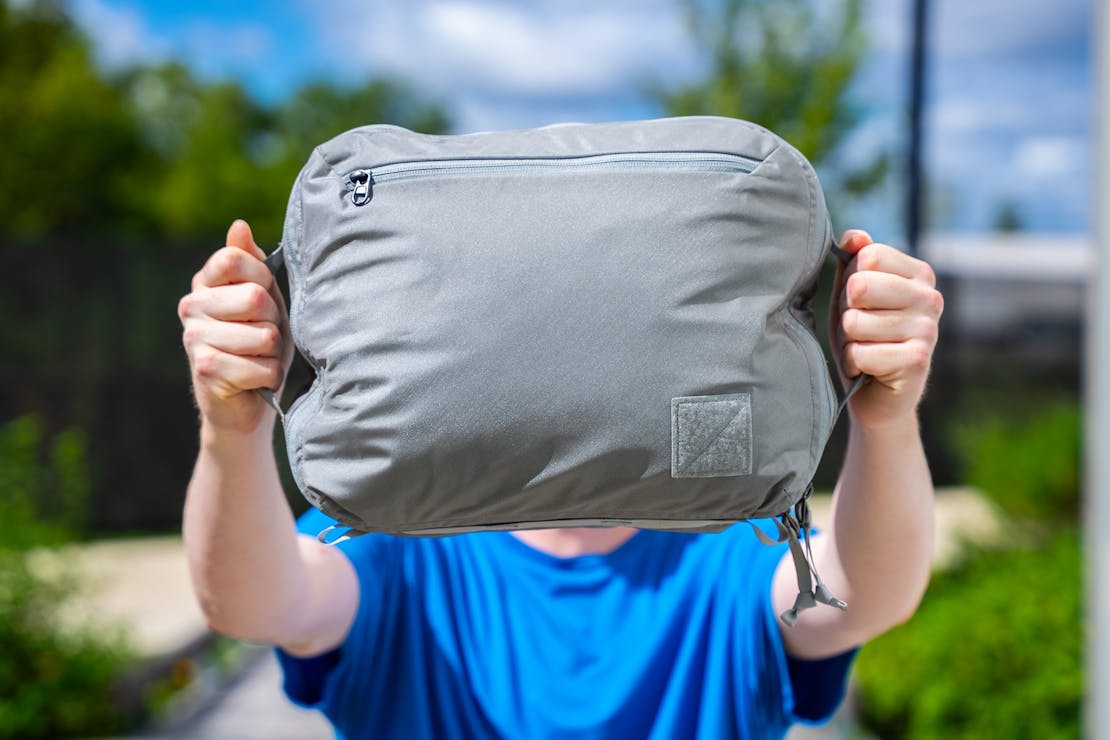
The EVERGOODS Transit Packing Cube 10L is unique for a few reasons. First, it utilizes thicker, more durable materials than we’re used to seeing from packing cubes. That’s not ideal for ultralight packers who count every ounce, but it’s beneficial if you’re concerned about durability and longevity. Plus, the weight difference between this and a standard cube is small in actuality, though the percent difference is a bit jarring at first glance.
Second, it has a collar inside, which goes over your clothing to make closing the zipper easier and adds some compression to the cube. It was a lot handier than we expected in testing, and we wish more brands used a design like this. It stops clothing from getting caught in the zipper, which is frustrating when trying to pack quickly.
The EVERGOODS Transit Packing Cube 10L isn’t an ultralight packer’s dream. Still, the durability and extra features, like the collar and a secondary compartment, are handy for the rest of us.
Why We Like It
- The materials and hardware are highly durable
- The collar in the main compartment makes closing the zipper easier
What You Should Know
- They’re some of the heavier packing cubes that we’ve tested
- There isn’t a ton of compression here
Others We Considered
The Patagonia Black Hole Cubes are highly durable, though a bit heavy for the task at hand. We dig the Aer Packing Cubes, which have stellar compression, but we were bummed to see the new version lose the laundry compartment. The Tortuga Compression Cube is lightweight, durable, and offers stellar compression. The Topo Designs Pack Bags are highly versatile and durable, and we’ve used them to stow everything from clothing to tech. Weight is an issue with the YETI Crossroads Packing Cubes, but they’re highly durable and easy to use.
Why Should You Trust Us?
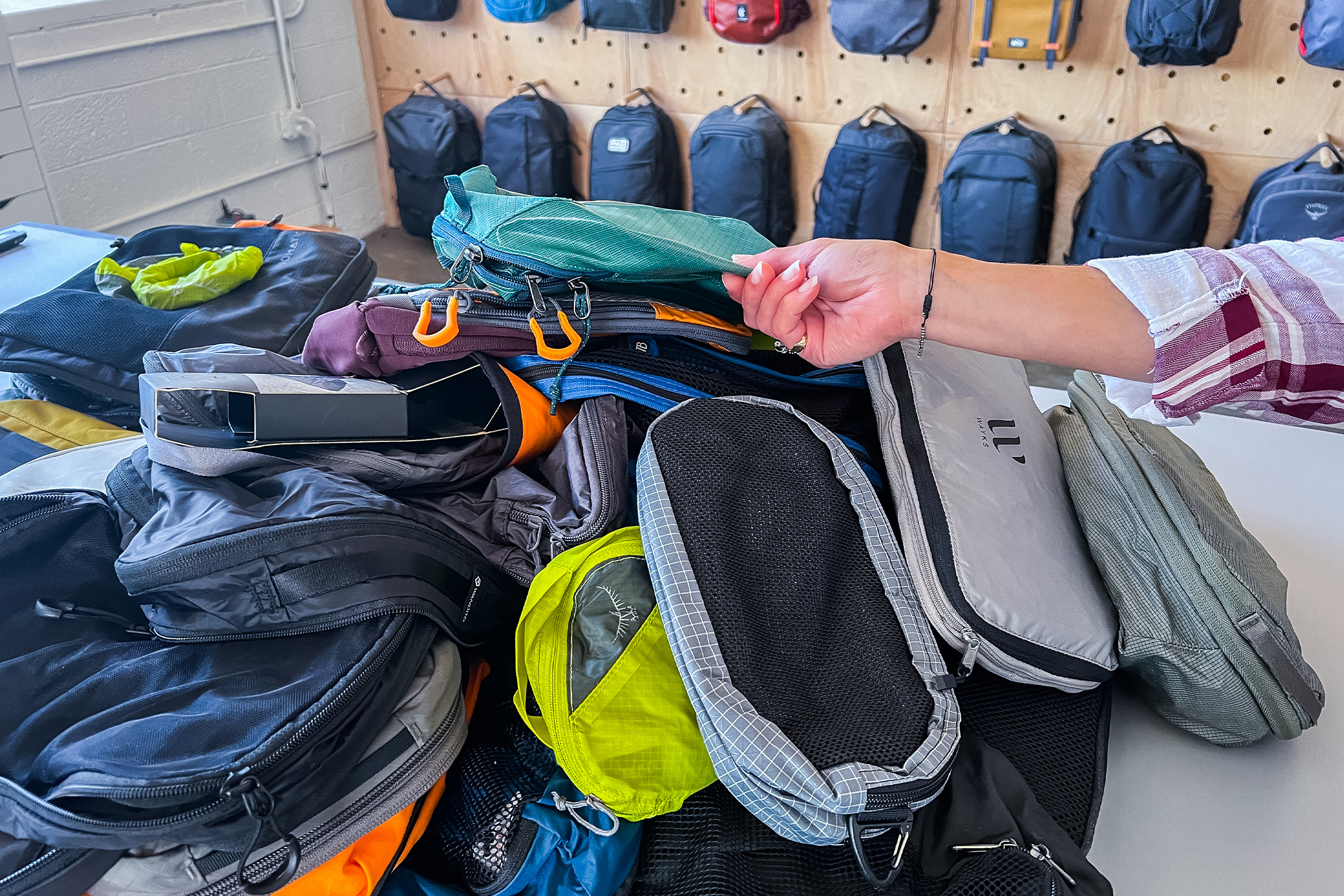
We’ve had our hands on nearly 100 packing cubes, so we know a thing or two about what to look for. We’ve tested all of the cubes we recommend for at least two weeks on countless trips and have been using some of them for years.
As we travel, we note how smooth the zippers are and whether or not the cubes are roomy enough to fit clothing in various sizes and thicknesses. While the best packing cubes for you will depend on your needs, we have the knowledge to narrow it down to the best options based on actual hands-on experience and testing.
Check out the video below for more details on the above cubes and to see some additional options.
Make sure you buy the best packing cube for you.
We’ve teamed up with CabinZero to give away a selection of top travel gear! Check it out →
What Will This Guide Help You With?
In this guide, we’ll be covering packing cubes for travel that include:
- Ultralight: These lightweight and minimalist packing cubes combine thinner fabrics that usually include a ripstop grid for durability and small but mighty zippers to keep everything together. These are the best packing cubes if you frequent low-cost airlines with lower weight limits for the bag you bring on board or if you’re carrying your travel backpack around for a long time.
- Compression: If you’re the type of traveler who brings bulkier gear like jeans, or you’re packing for colder weather and need to bring extra layers like hoodies and sweaters, compression cubes are the best packing cubes for you. While every cube compresses your gear to a certain extent, compression cubes take it to the next level with an extra zipper around the outside that minimizes the space inside the cube when you close it.
- Budget: You don’t need to spend a lot of money to get packing cubes that will still organize your gear well. Sure, you may have to forgo reliable zipper brands, fancy materials, and extra bells and whistles, but if worse comes to worst, your clothes will (likely) still fit in your travel backpack if the cubes break. They’re also great if you’re not a frequent traveler or don’t plan to use them very often.
- Specialist: Do you need a packing cube with extra padding to protect sensitive camera gear, weather-resistant cubes to keep your gear dry throughout rainy hikes, or a style that slots specifically into one travel backpack? There are cubes for nearly any specialty you can think of, and we’ve rounded up some of the most popular for you.
There are hundreds of packing cubes to choose from, and it can get pretty confusing if you’re new to the market. Every cube will offer different benefits at a wide range of price points, and some of them aren’t even cube-shaped! (Right?! Infuriating.)
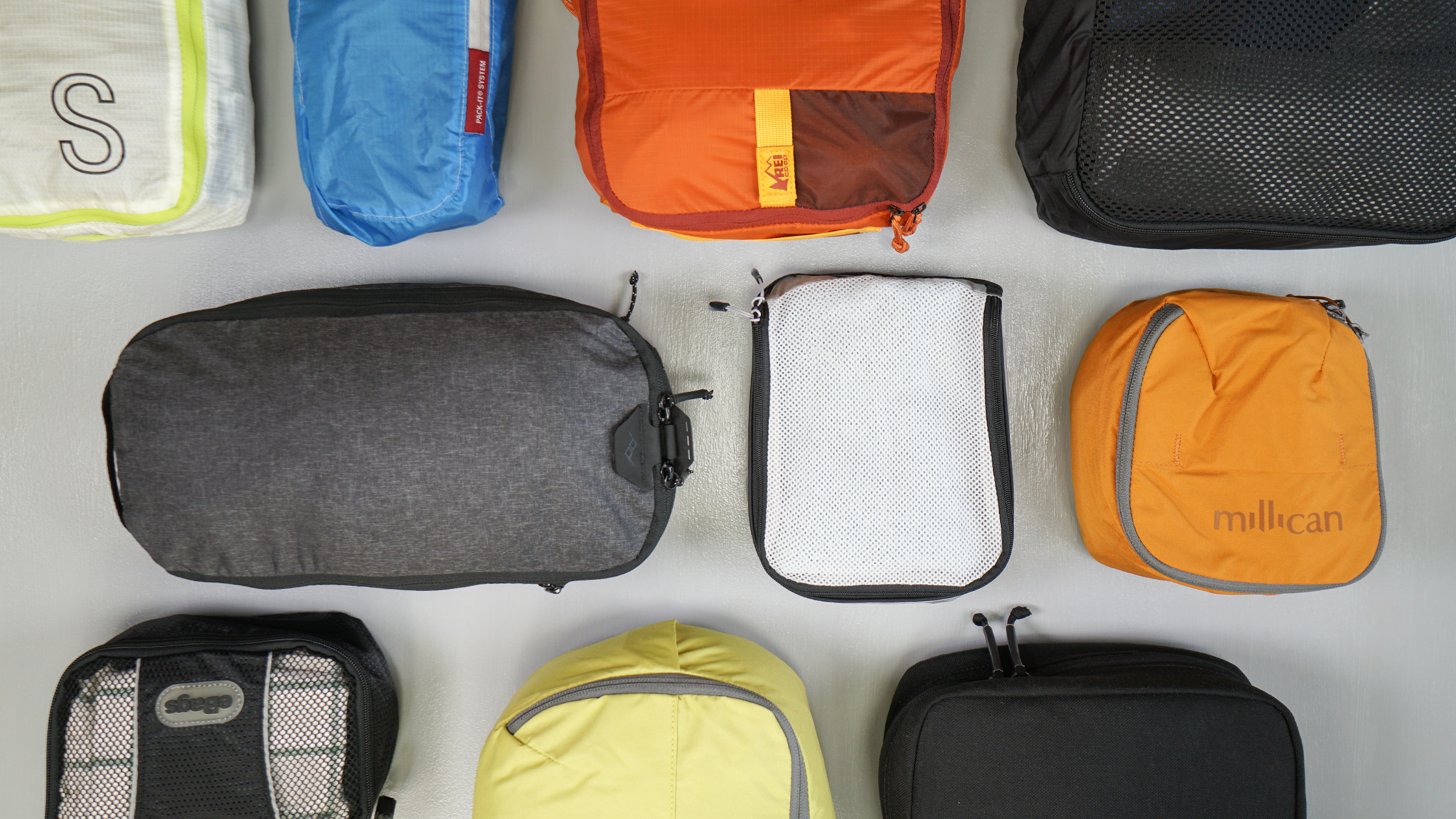
Fear not, because we’re here to help. In this guide, we break down each style and show you some of the best packing cubes (all tried and tested by us, of course). We’ll also give you the low-down on budget, materials, packability, and the best ways to actually use these things.
We’ll also be going in-depth on what considerations to make before you buy. What are the best packing cubes for your destination? Your budget? What size packing cubes do you need? Are you carrying around a humble laptop bag and just need an extra pair of clothes for the office, or a full-fledged 80L duffle bag? We’ve got you covered.
And we’ll end with the disclaimer that everyone is different. No, we’re not going into some rant about how you’re all amazing human beings just the way you are (even though you are). What we’re getting at is that the best packing cubes for you may be the worst packing cubes for someone else. It all depends on personal preference and use-case. But by the end of this guide, you’ll have all the knowledge you’ll need to pick the right packing cube for you.
How To Use Packing Cubes
If you haven’t caught on by now, a packing cube is simply a fabric pouch with a zippered opening. Using one is pretty straightforward—you just unzip the opening, put your clothes inside, zip it back up, and place the cube inside your pack. It’s not rocket science.
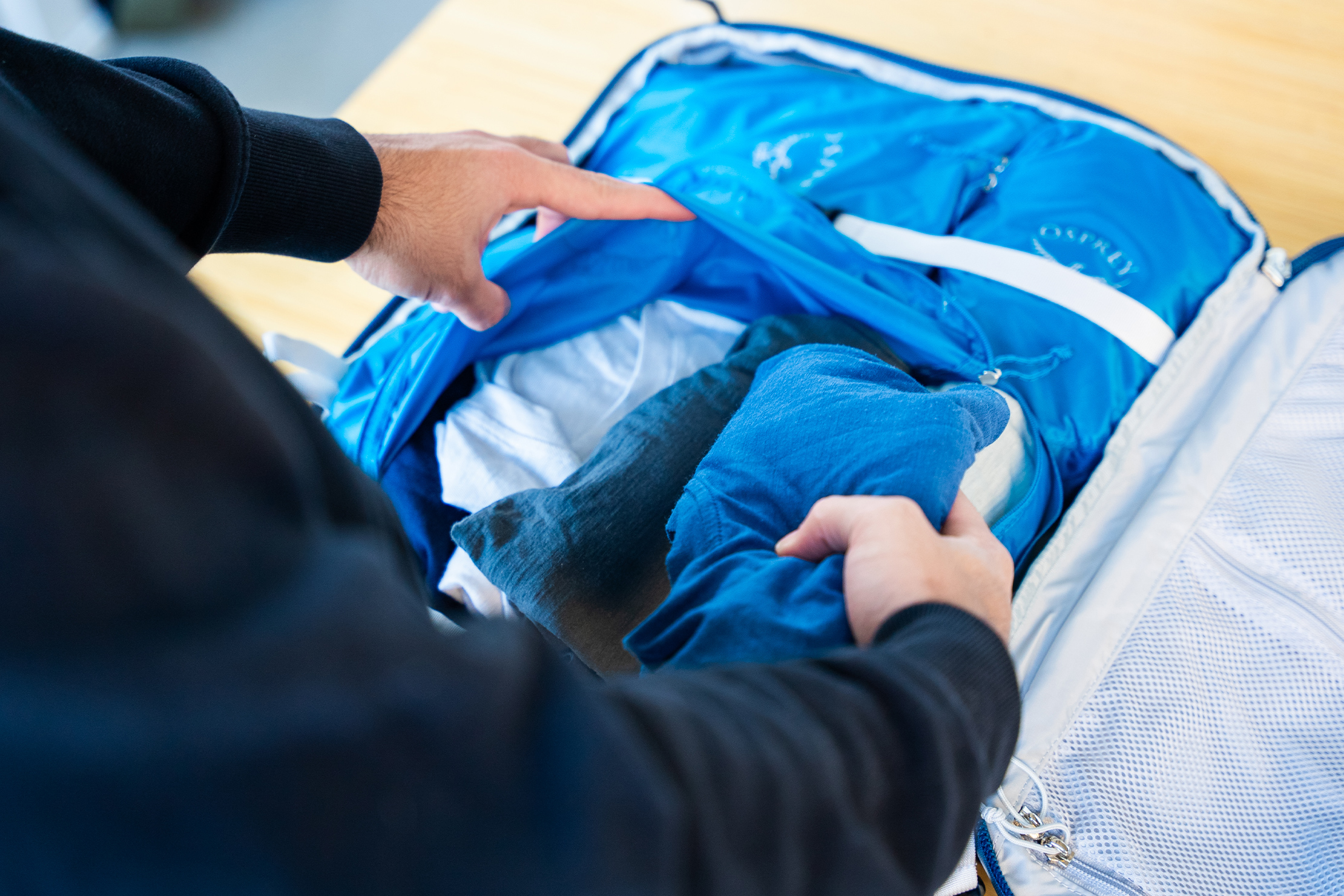
That said, figuring out the optimal method for using packing cubes for travel is a bit trickier. A typical example of how packing cubes can be used in the real world is to use a small cube for underwear, a medium cube for t-shirts and shorts, and a large cube for sweaters and pants. It can be that simple, but you can also get as creative as you’d like. For example, you can…
- Pack specific outfits in individual cubes. One cube could be for your gym wear, while another could hold a nicer outfit you’ll be wearing to a meeting.
- Pack climate-specific clothes in separate cubes. You could put all your warm weather gear in one cube and cold weather gear in another.
- Utilize a variety of sizes. You can choose to use eight small packing cubes, two large ones, or four medium ones. The combinations are almost limitless, but it’s really up to you. The only rule? They have to fit inside your luggage.
- Pick up different colored cubes. This will help quickly identify what stuff is where and help further organize your pack.
- Use a selection of different packing cube types. Depending on your use-case, you can choose to pick up a couple ultralight cubes, a large compression cube, and a padded packing cube. (More on that later.)
Things To Consider Before You Buy
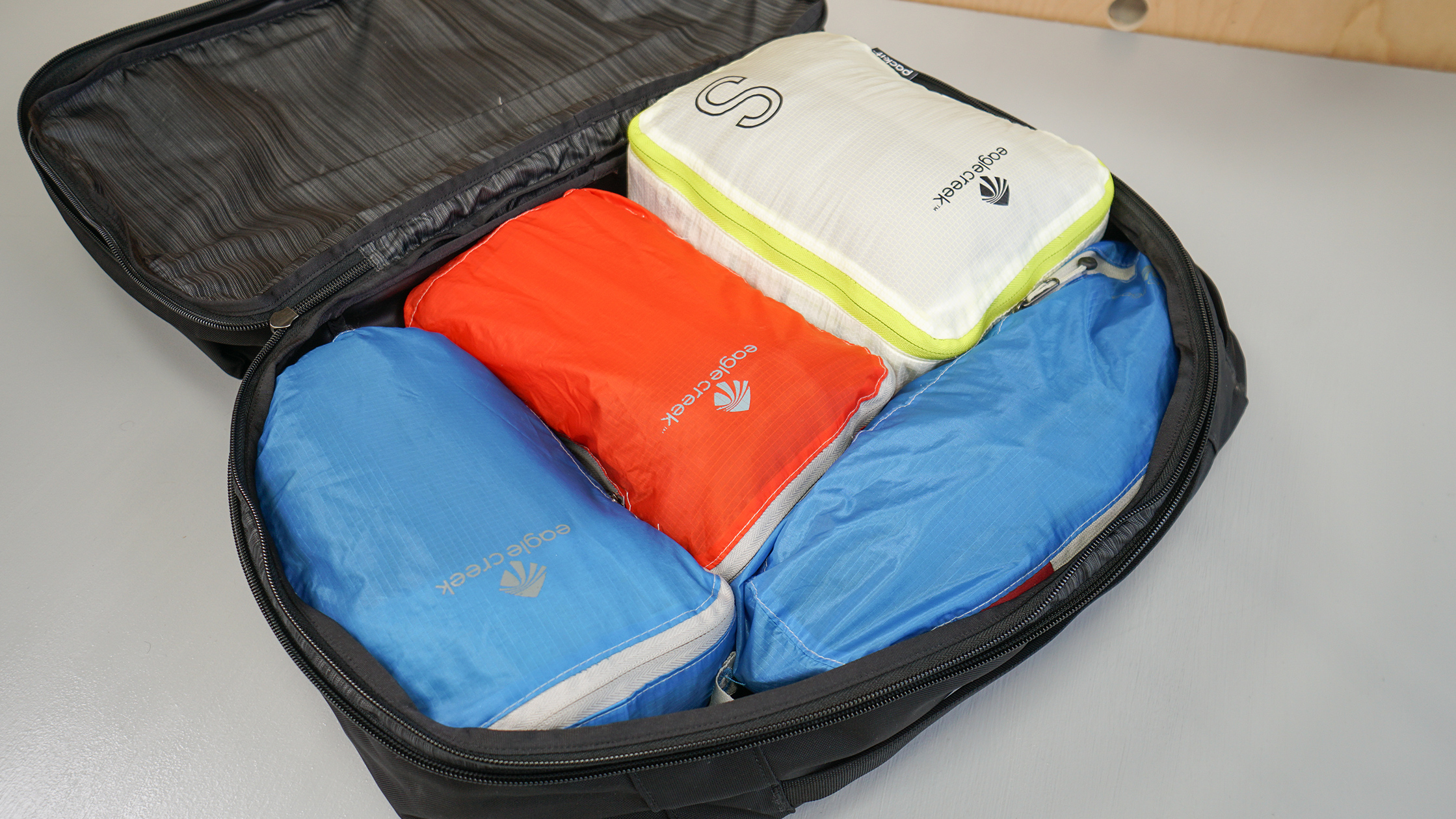
All travel backpacks and rolling carry on luggage intended for travel have a large main compartment for you to fill up. Some will take this to the extreme, like the GORUCK GR3 and Monos Carry-On (which are essentially large buckets), and some will offer a bit of internal organization, like the Tom Bihn Synapse 25 and Fjallraven Travel Pack. But regardless of what you’re lugging around, you’re going to need to figure out the best way to fill that main compartment.
This is where the best packing cubes come into play.
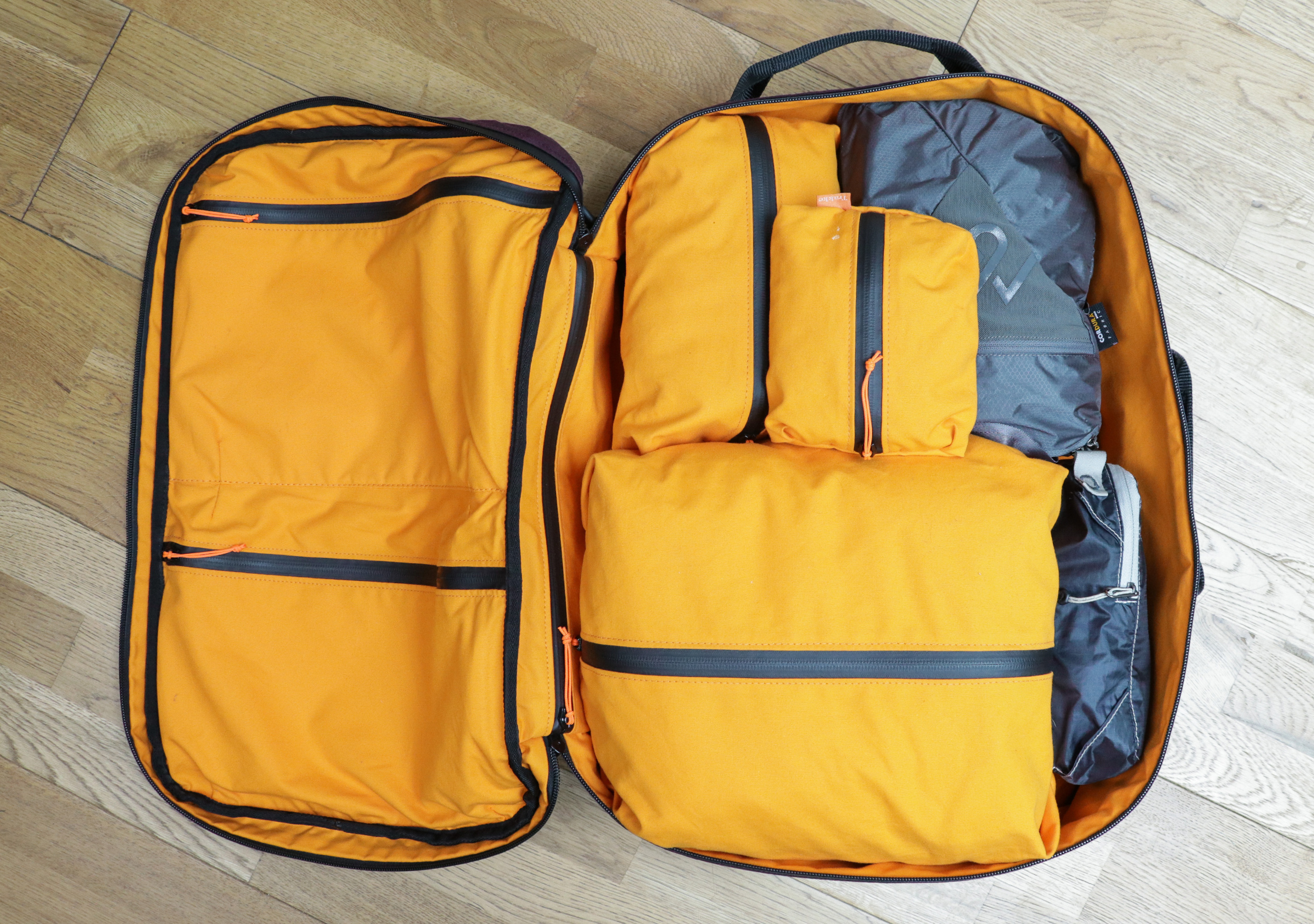
First and foremost, packing cubes for travel are used to organize the contents of your bag. But how you do that will depend on the type of packing cube you choose. There are a lot of options out there, but we have recommendations for the best packing cubes for any type of traveler. The best packing cubes for your travel backpack will differ from the option your friend wants to use in her rolling carry on luggage. And if you’re trying to fit a weekend’s worth of gear into a personal item bag that can fit under the seat in front of you, let us introduce you to compression cubes.
Learn more about why you should consider using packing cubes.
Zippers
Broken zippers will render your packing cube useless, so it’s essential to have one you can rely on. And though they may look alike, zippers can range in quality and durability dramatically. You may not think you need anything special, but zippers on packing cubes can take quite a beating when you’re yanking them shut after filling your cube to the brim.
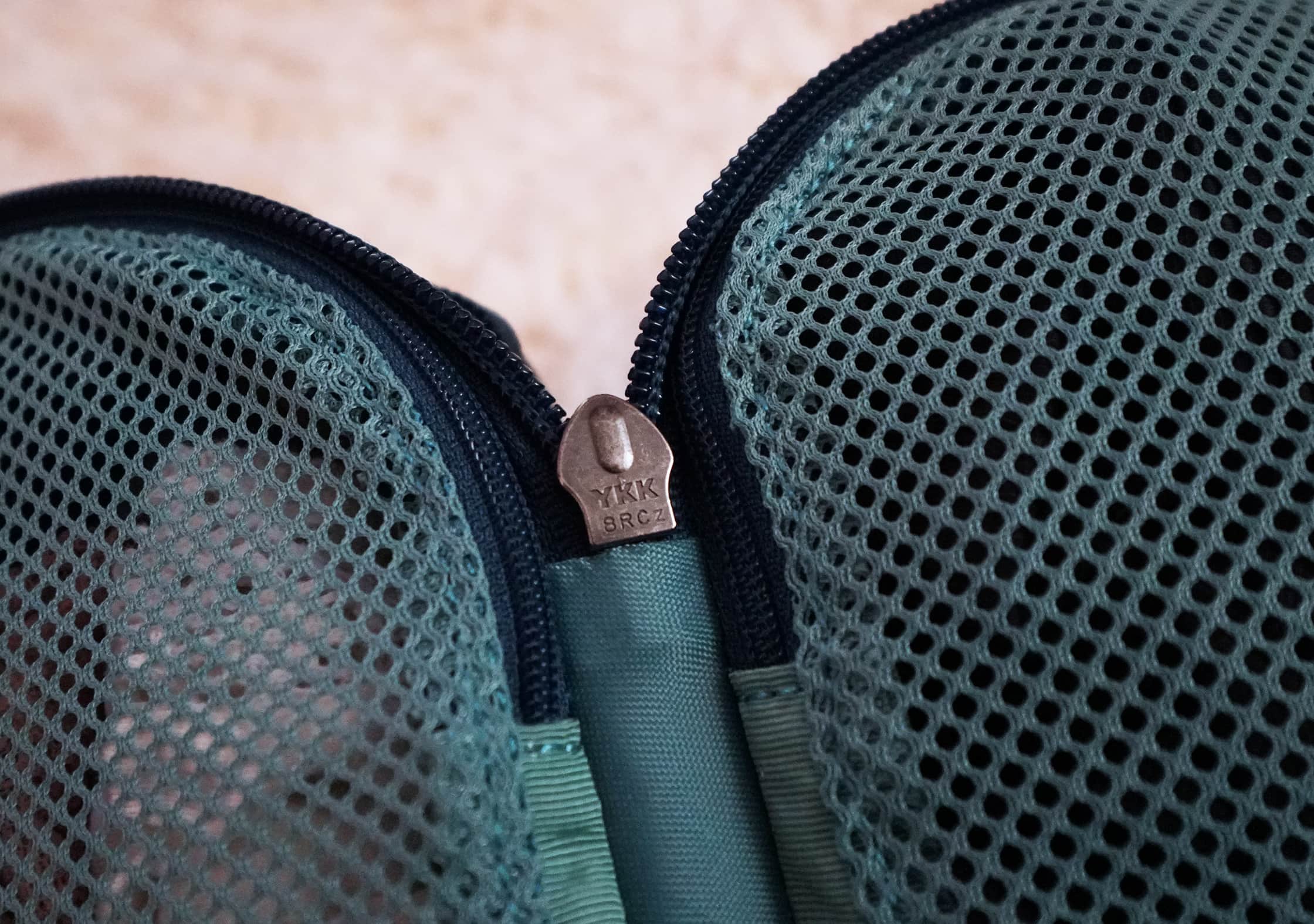
The first thing to consider is the brand—YKK, SBS, Zoom, and Riri are some of the biggest and most reputable. In our opinion, you can’t go wrong with Japanese manufacturer YKK. They are well-regarded in the industry for making quality gear and have performed remarkably well in testing, even after years of use. Popular brands such as Patagonia, Eagle Creek, and Osprey use them on just about all of their gear, which should say something.
While we believe YKK to be the best, the Chinese manufacturer SBS has become quite the juggernaut as of late. Overall, SBS zips have performed well for us in testing and we’ve never had one break, but they’re not as solid as we’d like them to be. You’ll typically find them on more budget-friendly cubes. The bottom line is, as long as your zippers are from a reputable brand, they should have you covered. But, we’d recommend opting for YKK when you can.
It’s also important to take the size of the zipper into account, which will range on a scale from one (small) to ten (large). Typically, zipper sizes on packing cubes will range from three to five. A number three will be perfectly fine, but we’d opt for a number five when possible for the added durability. Anything larger than a five may be a tad too cumbersome and simply isn’t necessary for most use-cases. That said, we’d strongly recommend staying clear from anything less than a number three for durability reasons.
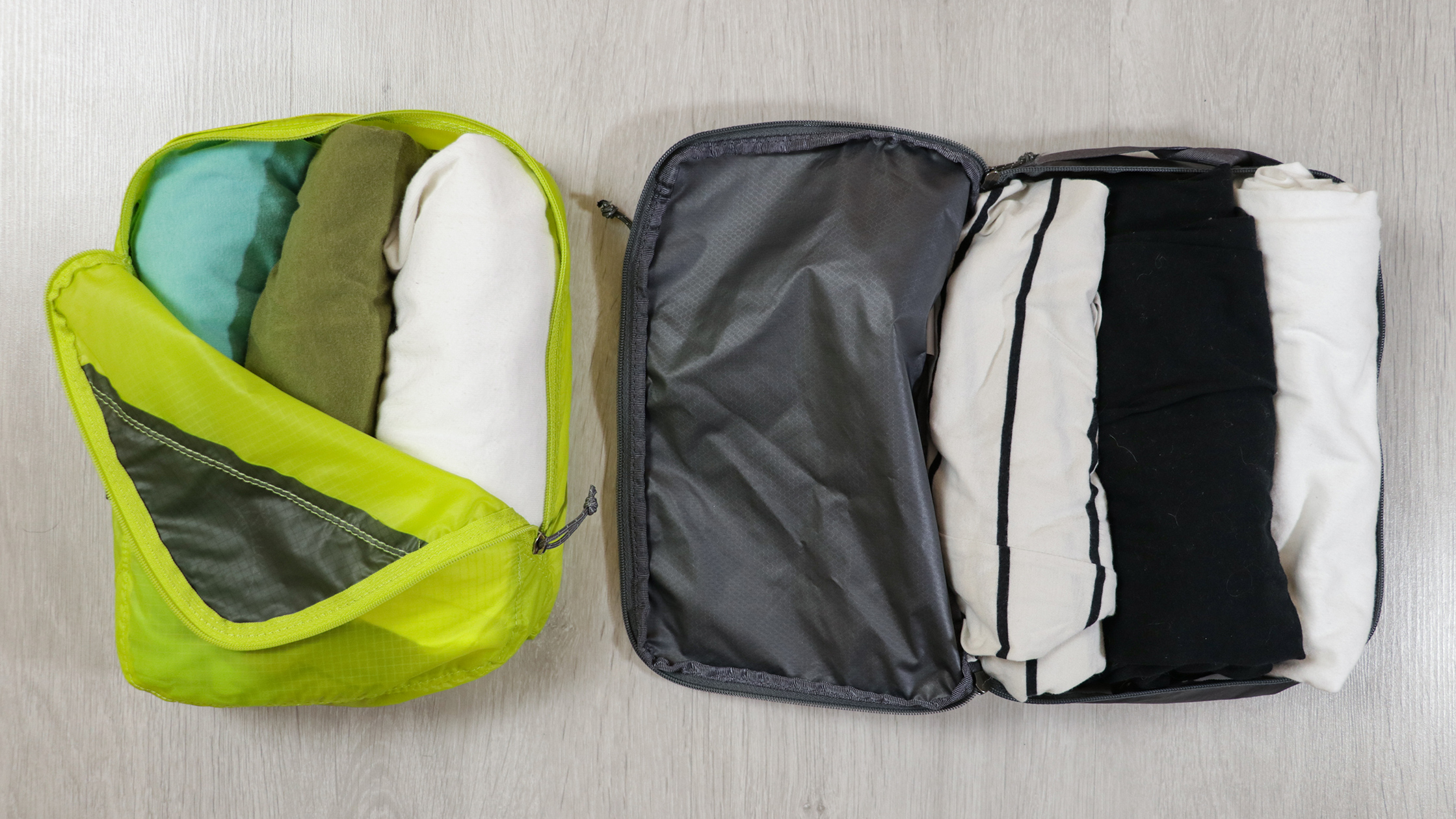
Something else to consider is where the zipper is located on the packing cube and how it opens. Generally, there are three options: a full clamshell-style that opens all the way, a half opening, and a straight opening.
A clamshell-style packing cube will give you direct access to the entire cube and enables you to place and position everything neatly, but we have found it can be tricky to zip up if you’re filling it to the brim. In contrast, a half opening style cube is a lot easier to cram a load of stuff into and zip up, though, if you want to pull something out, you’ll likely have to take everything else out too. Lastly, a straight opening is the easiest to open since you only have to pull in one direction; however, it also offers the smallest opening that requires a bit more effort to squeeze clothing into.
Each style has their merits, but we tend to think that since you can simply close the clamshell zipper halfway—to act as a half-opening, making it easier to stuff clothes inside—it takes the cake.
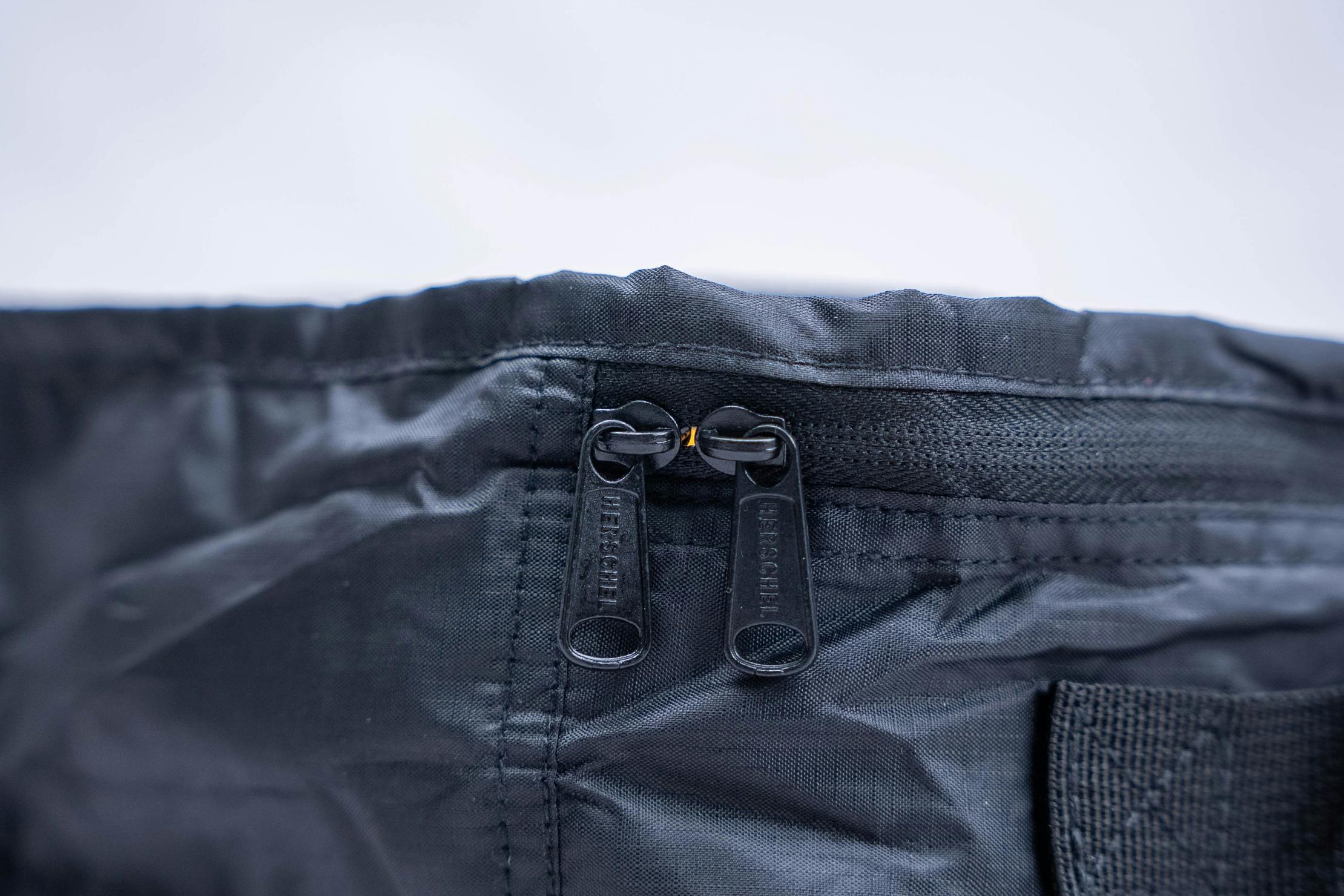
Additionally, keep an eye out for zipper pulls and how many zippers a packing cube has. If you fill your cube to the brim, a zipper pull can be helpful to grab hold of and pull shut, but it’s by no means necessary. You could also just attach your own if you wanted to. And if possible, we recommend opting for a packing cube with two zippers as opposed to one. This is because if one does break, your packing cube is still functional. We’ve also found that two zippers make opening and closing the cube a little bit easier, and you can open it from whichever side you’d like, which is great.
Finally, while zippers are a common sight among packing cubes, there are ones out there that feature none. For example, packing cubes like the Gravel Zipperless Packing Cubes opt for hook-and-loop fasteners in lieu of zippers. So if you’re the type who’s worried about zipper jams regardless of brand, know that there are packing cubes that omit them.
Handles
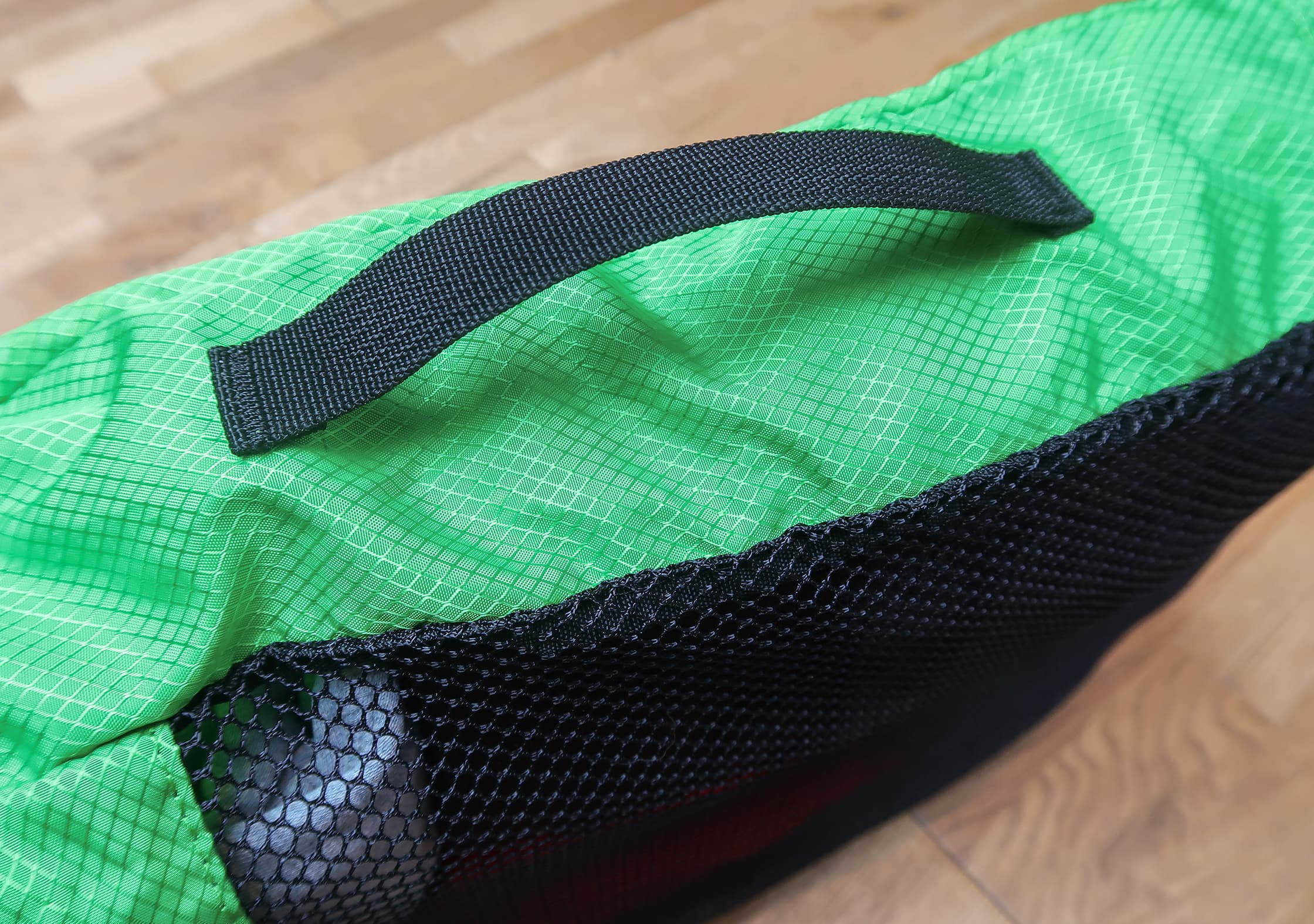
A handle is by no means a vital component on a packing cube—considering they’re designed to be placed inside a bag—but most manufacturers do include them. If done right, it’s a nice feature that can provide some useful benefits. However, they can also get in the way if they’re not implemented well.
Pointing out the obvious, a handle is helpful when grabbing hold of a packing cube. However, we’ve found that most of the time it’s easier to grab the whole cube with your hands. That being said, we have found a handle can be useful when lifting a cube out of a top-loading backpack, specifically. So if you’re rocking one of those, you may want to make sure your cube has one.
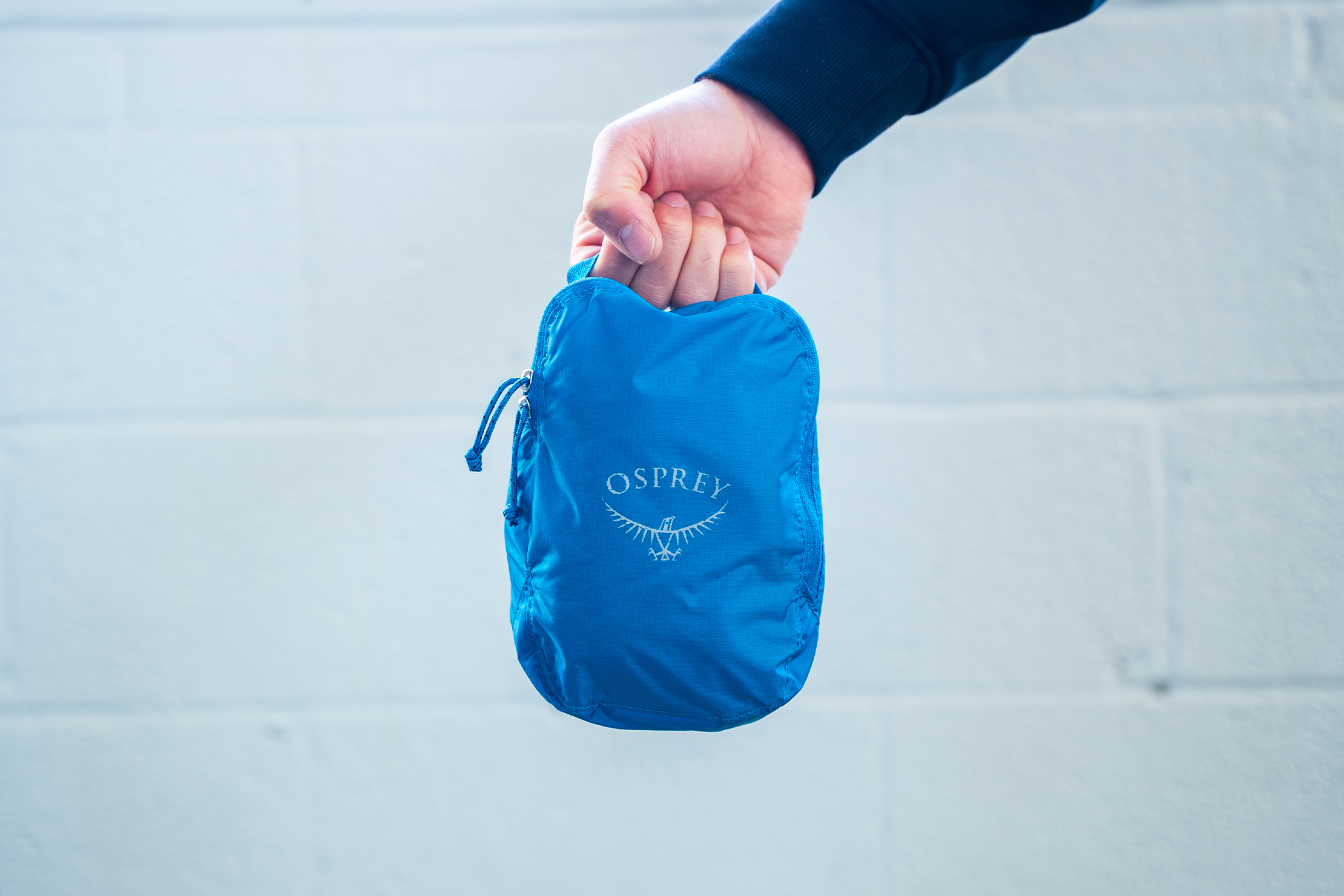
Other than being used to take your cube in and out of your pack, a handle can be utilized to carry your cube around, hang it up, or attach it to the outside of your bag with a carabiner clip. These aren’t things we find ourselves doing often, but it’s worth bringing up. It could help you out in a pinch.
In testing, we’ve found handles that sit close to the packing cube to be best, as they don’t get in the way when not in use. But remember that a handle isn’t essential, and certainly don’t discount the cubes that have opted not to include one.
Pockets & Compartments
The majority of packing cubes are just an empty cube, which is perfectly fine. However, some brands like to think outside the box, and they’ve brought some nifty ideas to the party.
Internal Organization: Some manufacturers will include a “clean and dirty” cube in their range. This is a packing cube that’s split into two compartments designed to keep your clean and dirty clothes separate, which is beneficial for obvious reasons—that is, unless you don’t see a problem with your stinky socks touching your clean t-shirt.
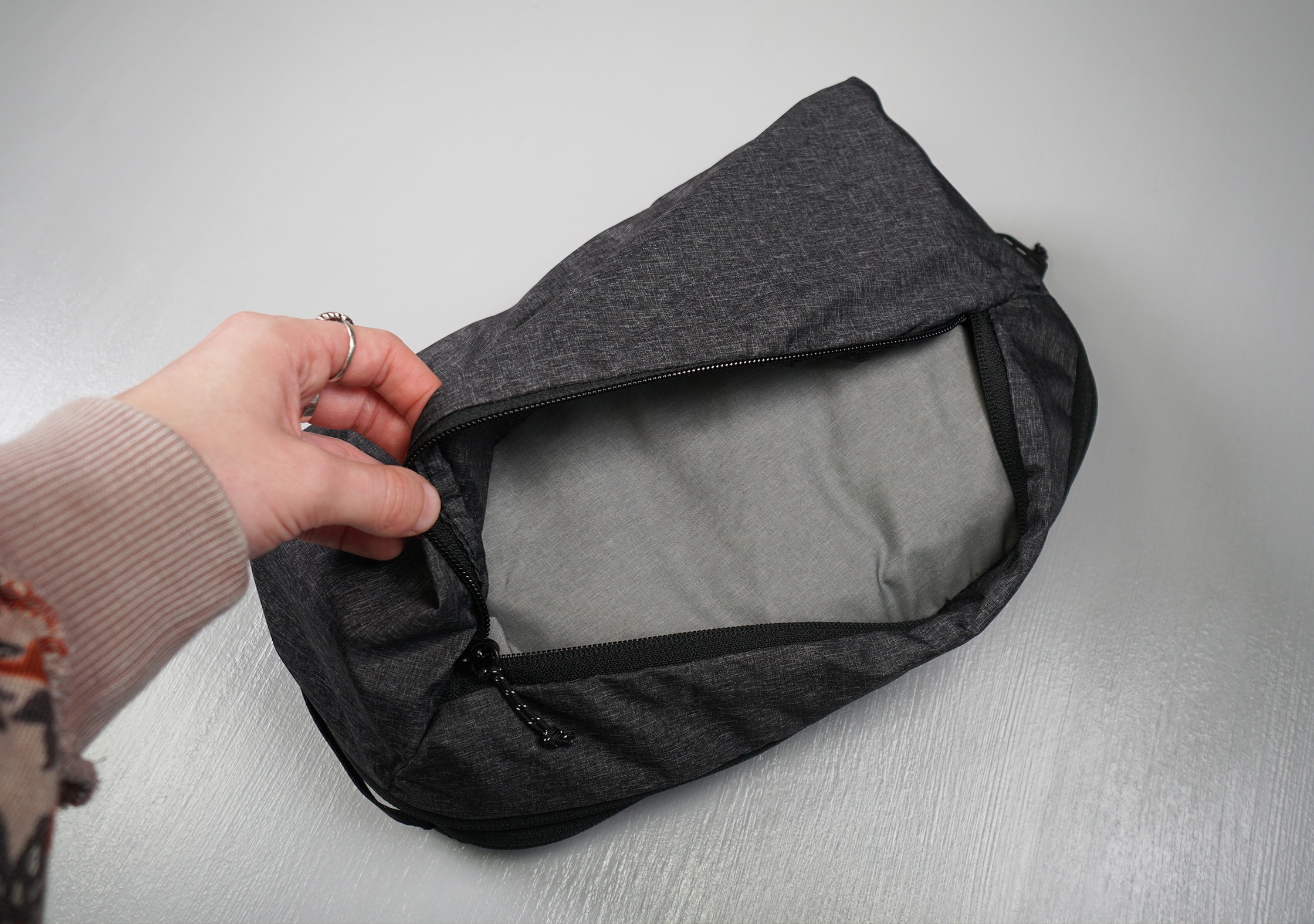
You don’t have to use these cubes specifically for this reason, though, and they can come in handy for additional organization. For instance, you can separate your t-shirts and shorts in one cube. Just keep in mind that they ultimately share capacity, so as you load up the second compartment, you’ll lose space in the first.
You probably won’t need every cube you own to split into two compartments, but picking up one to complement the rest of your set could be a nice touch.
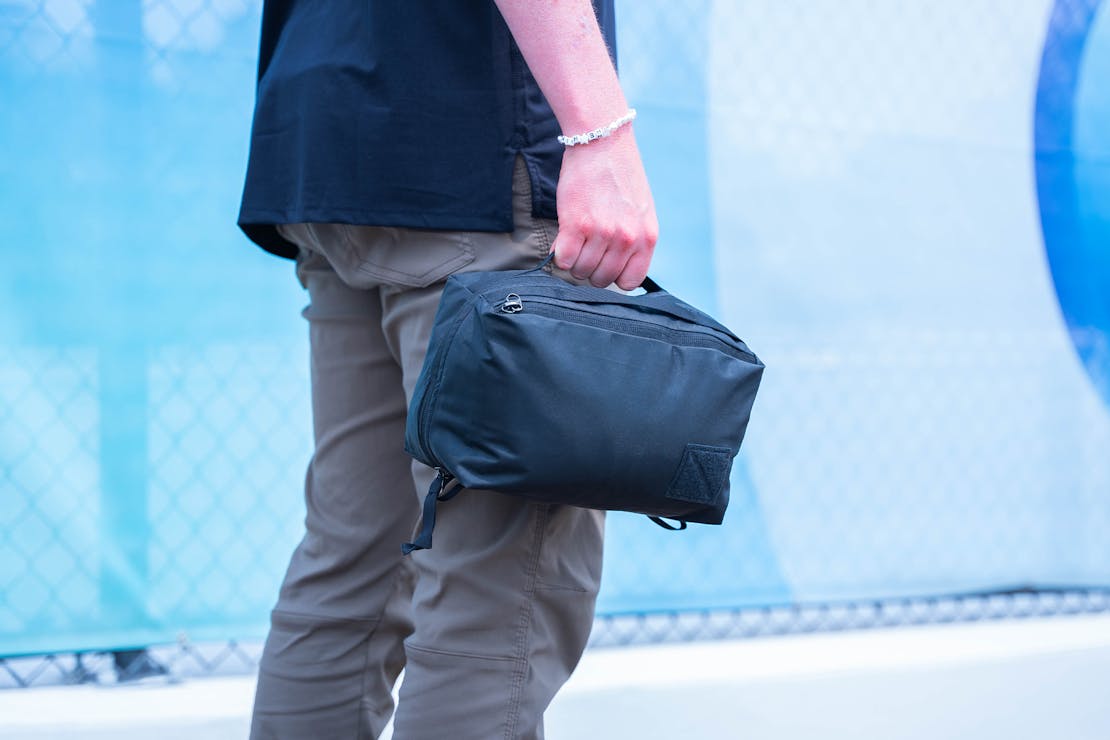
The EVERGOODS Transit Packing Cube 8L’s secondary pocket comes in handy when you have outfits with matching accessories. Maybe you’re traveling with a set of cufflinks, or different-colored bracelets for each of your tops. With a smaller pocket built into the packing cube, you won’t have to look far when you’re getting dressed in a hurry.
External Pockets: A quick-grab pocket on a one bag travel pack is a vital addition, and it’s the perfect place to store your passport, phone, and other essentials you need fast access to. So why not have one on a packing cube? Well, you don’t really need one, and you do lose the whole “quick-grab” factor since they’re packed away in your bag.
However, if you do come across a cube with one, don’t discount it straight away, as they can come in handy. You could use an external pocket on a packing cube to hold some cords or small tech accessories. Maybe you just want to be able to find your lucky underwear at a moment’s notice. Who knows. We don’t find these pockets terribly useful, but some might.
Destination
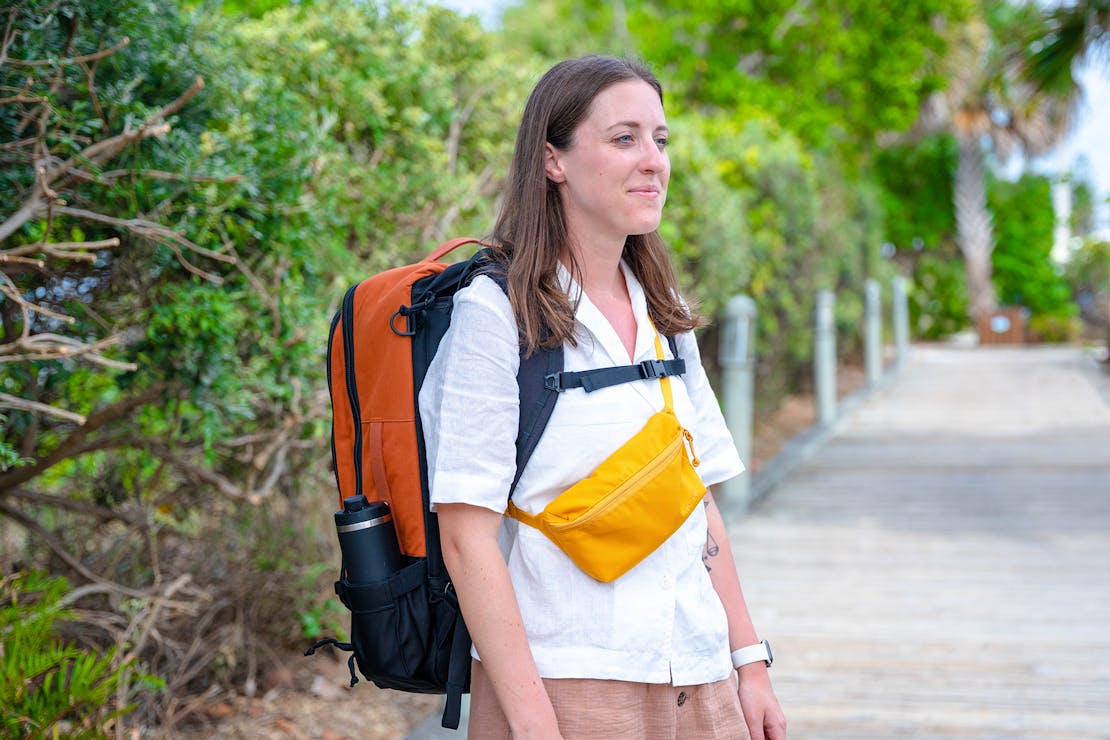
The world is a big place, and choosing the best packing cubes will depend on where you’re going and what you’re doing. Most packing cubes will be fine for most destinations, but there are some locations where certain styles of packing cubes will be a better choice.
If you plan on spending most of your time wandering along sandy beaches, then mesh packing cubes could be an issue. Sand really does get in everything, and the last thing you want is it mixed up among all your clothes.
If you’re traveling to a humid location, like SE Asia, breathable packing cubes are highly recommended. There are some high-tech materials available now, but simple mesh cubes will work too. These will help keep your clothes fresher for longer.
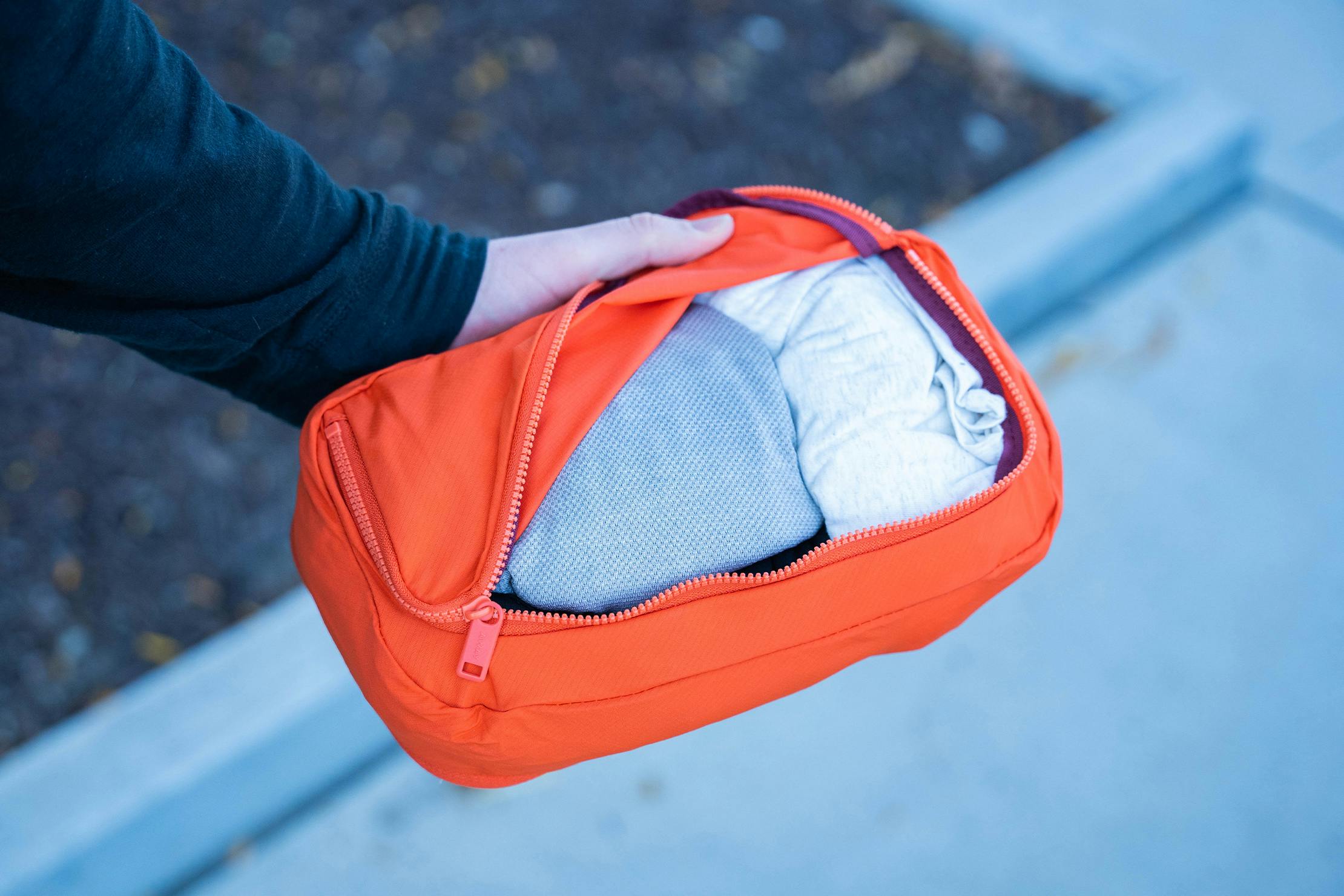
Finally, if you’re headed on a business trip, you’re not going to want any wrinkles. Cubes with a bit of structure are your best bet here, just make sure to neatly fold your clothes before placing them inside.
Color
We prefer packing cubes that contrast in color to the inside of your backpack. For instance, if your main compartment is black, try to source colorful cubes. And if your main compartment is a bright color, try to find black, gray, or darker colored packing cubes. This is by no means a necessity, but it can make finding and grabbing specific cubes from inside your pack a lot easier.
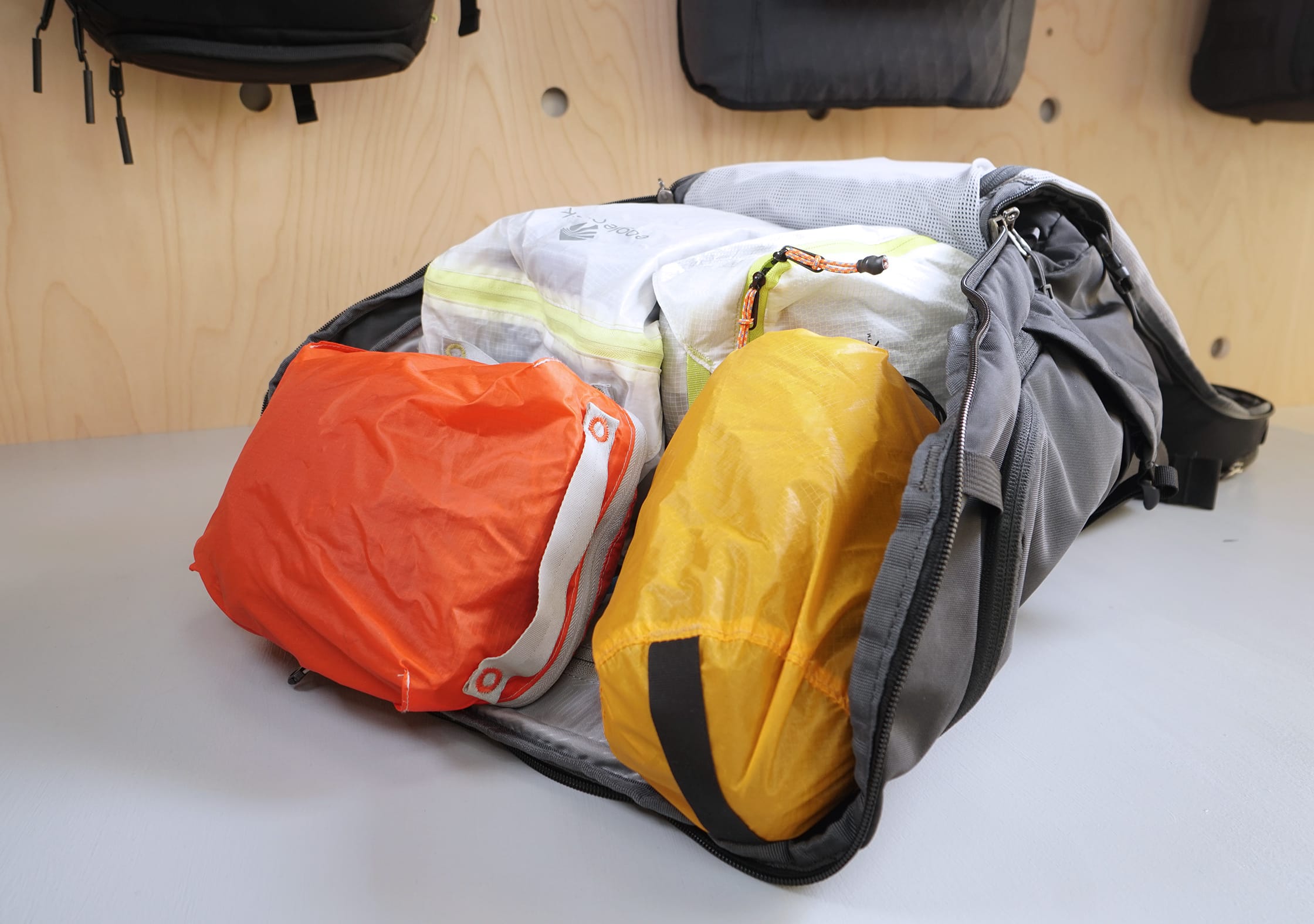
We’ve also found that having a selection of different colored cubes can help further organize your pack. For instance, you could put all of your warm weather gear inside a blue cube and your cold weather gear inside a red cube. However, most companies tend to sell sets of cubes that are all the same color, and it can be more expensive to purchase them individually in a range of colors.
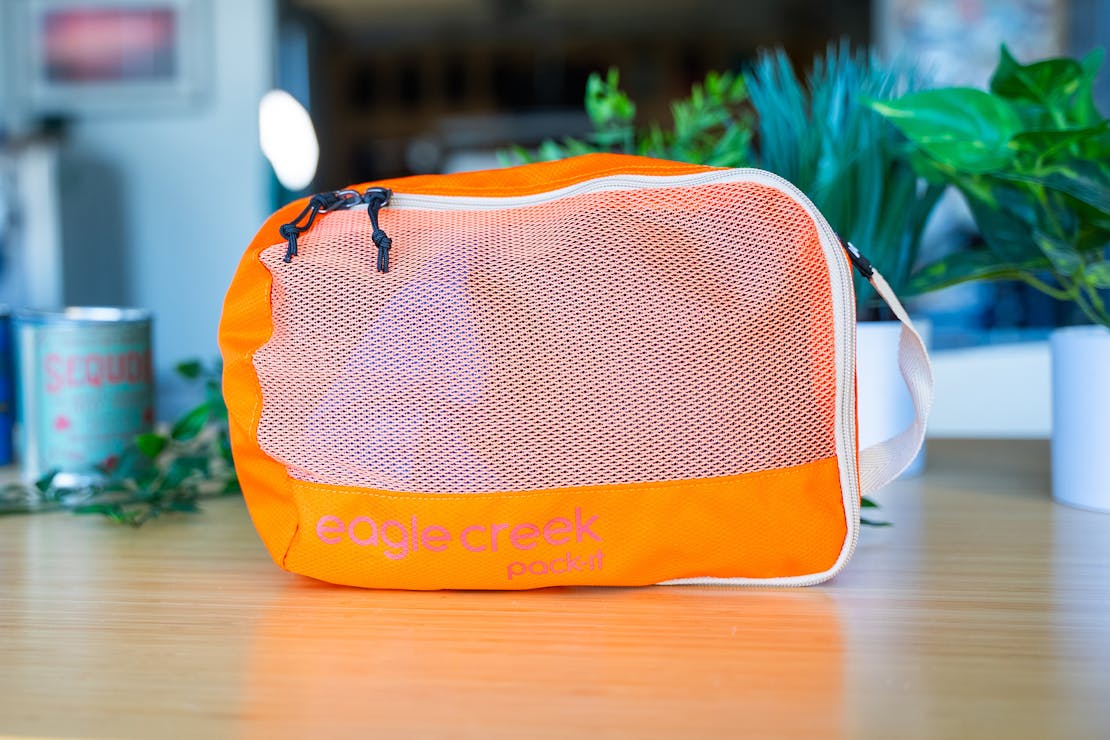
These cubes need no introduction to packing aficionados due to their excellent build quality and brand reputation. Light but durable, the 300-denier recycled polyester fabric is brightly colored with a handful of options so you can easily spot them. To top it off, the cubes’ front are see-through mesh, so you can even see what’s inside without having to open them.
Sizes
Packing cubes are available in a vast range of sizes, and you’ll want to consider how much gear you’re taking and what shape your pack is to find the right cubes for you. Most manufacturers will sell a set of their packing cubes that contains a small, medium, and large cube. Using the small for underwear, the medium for t-shirts and shorts, and large for sweaters and pants is a tried and tested method that has worked well for us. But we’d recommend laying all your gear out in front of you in different piles before choosing what size packing cubes to order.
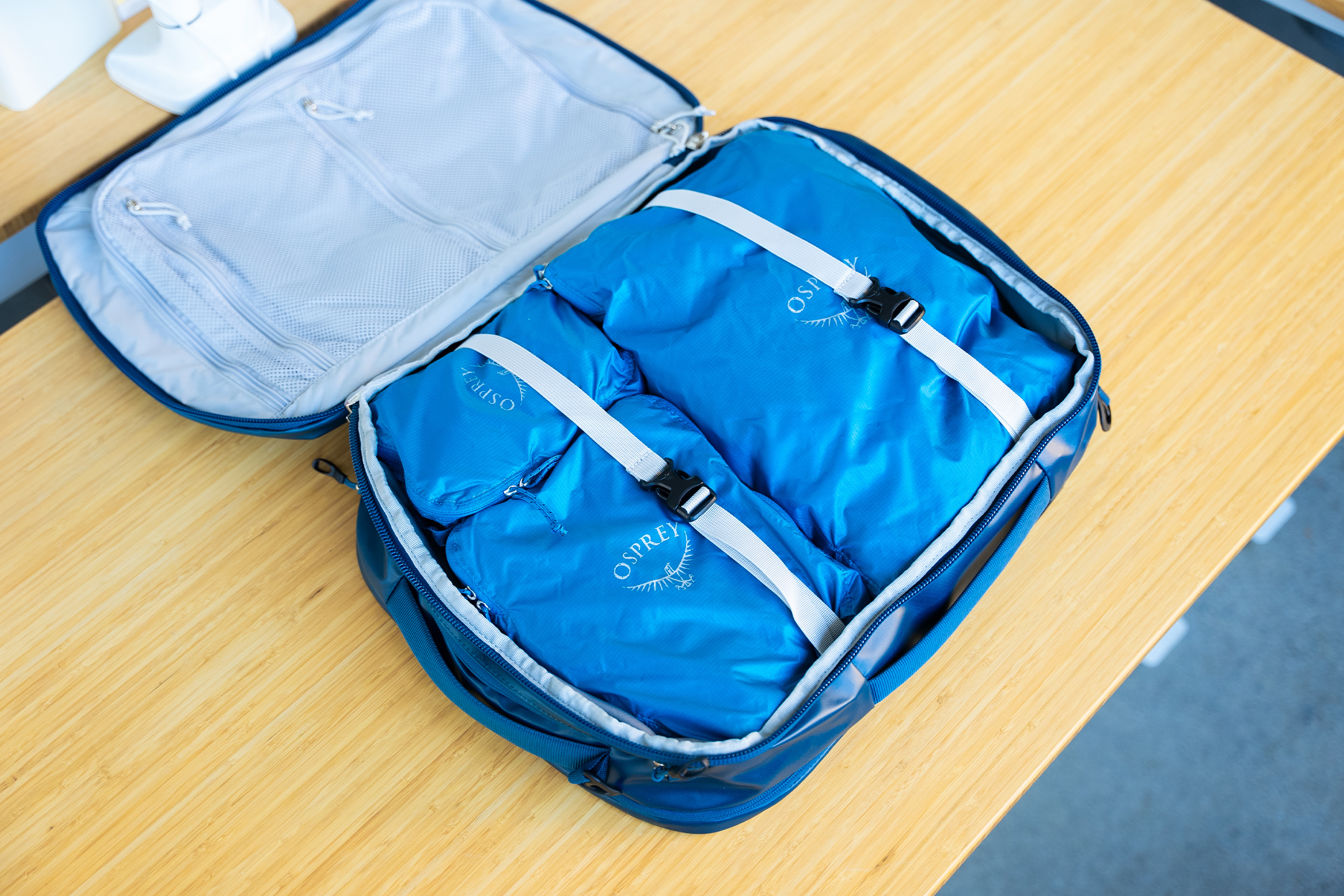
It’s also important to consider how much room you have to fill in your pack. The last thing you want is a large packing cube that’s wider than the pack itself. We’ve found multiple smaller cubes—as opposed to one large cube—can help maximize the space inside of just about any pack.
Finally, take note of what shape your backpack is. If it’s rectangular, try to find cubes with straight edges. If it’s rounded, try to find cubes with curved edges. This will help utilize all the space inside your pack.
Budget
We think the cost of packing cubes are reasonable considering the benefits they bring. Price is always a factor though, and luckily, there are cubes for every budget. It’s also important to note that the most expensive ones aren’t necessarily the best packing cubes for you.
First, you’ll want to consider how much and for how long you’re going to need packing cubes. If you’re going on a one month trip to Europe, and don’t plan on traveling much after, you may not want to splurge on expensive cubes, and that’s fine. Whereas if you’re planning on perpetually traveling the world, you’ll want to consider spending a bit more on top-notch cubes that are built to last.
Warranty
Make sure to check the warranty on your packing cubes, especially if they’ve set you back a fair amount. Take a look at what it covers—such as craftsmanship defects or general wear and tear—and how long it will cover you for. Even if a brand says they have a “lifetime guarantee,” it’s worth reading the fine print to see if that is relegated to just manufacturing defects or wear and tear. With brands like Patagonia or GORUCK, we’ve found their “lifetime guarantee” is actually just that.
A good warranty usually means that a brand stands behind its gear, and you can be assured of its quality and durability. We recommend skimming reviews on product pages to assess a brands warranty, as people who have had a really good or really bad warranty experience are likely to write a review about it.
Finally, be aware of where they will deliver your cube if you do have a successful claim. It’s no good getting a replacement delivered to your home address if your cube breaks halfway around the world.
Video Overview: How To Use & Choose The Best Packing Cubes for Travel
Feel free to watch this guide section in video format. We’ll keep the written content on this page up to date.
Be sure to subscribe to Pack Hacker on YouTube and never miss a video.
These cubes aren’t light…they’re Ultralight!
We’ve teamed up with CabinZero to give away a selection of top travel gear! Check it out →
Why Ultralight Packing Cubes?
These are the lightest and most minimal cubes around. They’re great for when you want to minimize weight as much as possible and save space within your pack.
Materials
Whether a packing cube is ultralight or not comes down to materials. And while there are no set rules on what constitutes an ultralight packing cube, there are some industry standards to look out for.
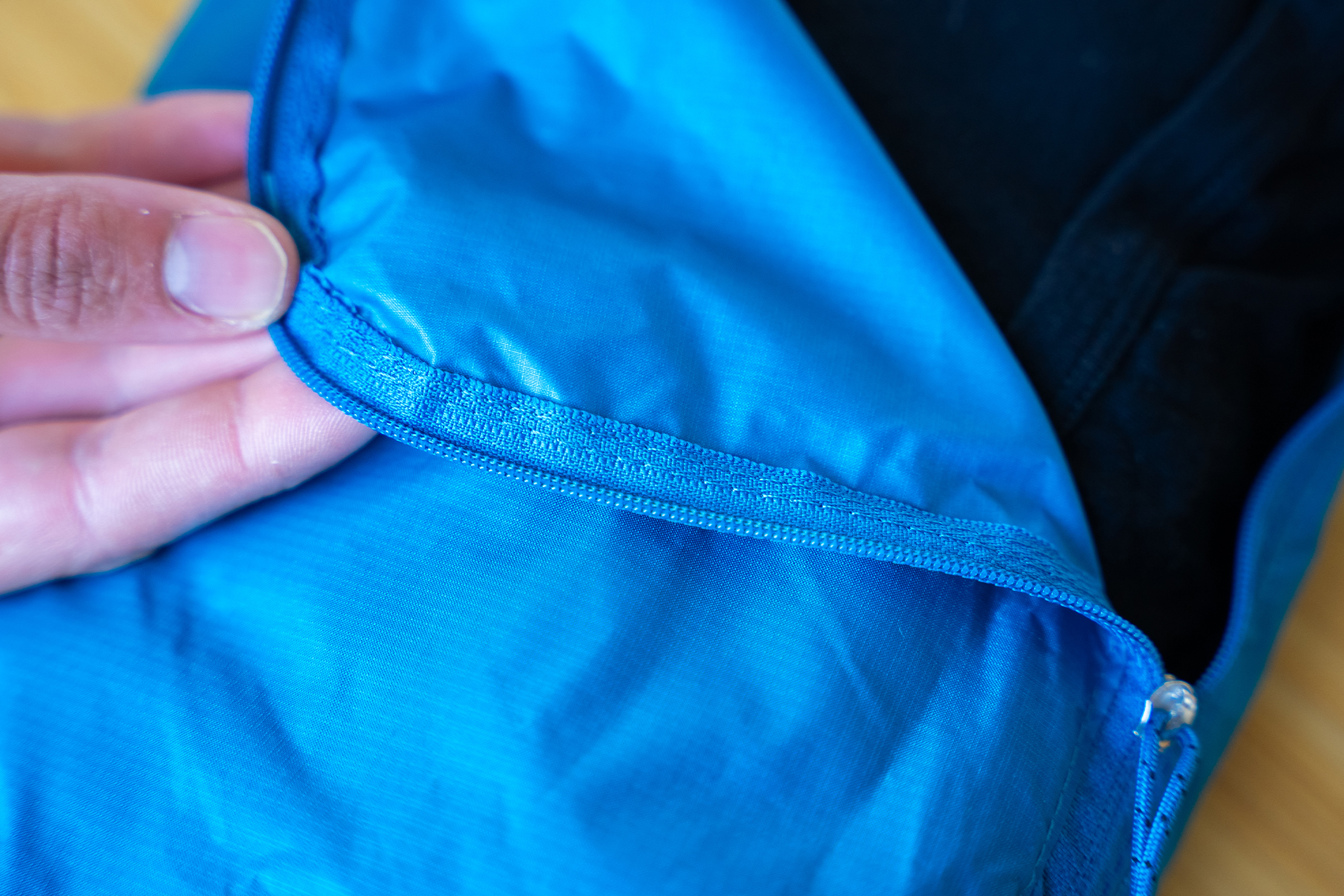
Ultralight packing cubes are almost exclusively a low denier. Usually, you’re looking at 30D or 40D nylon—which is a lightweight (obviously), durable, and tear-resistant fabric that has continued to perform well for us in testing. Some cubes may use a low denier polyester instead, but we’d stick with nylon if possible as it tends to be a stronger fabric and it’s softer to the touch.
Because ultralight packing cubes use such a thin fabric, it will likely be reinforced with ripstop, which increases its resistance to rips and tears. Additionally, if a hole does appear, the ripstop will stop it from getting any bigger, which is great. This is an essential feature for ultralight packing cubes because the materials are so thin, and we’d recommend making sure your cube has this incorporated within its materials.
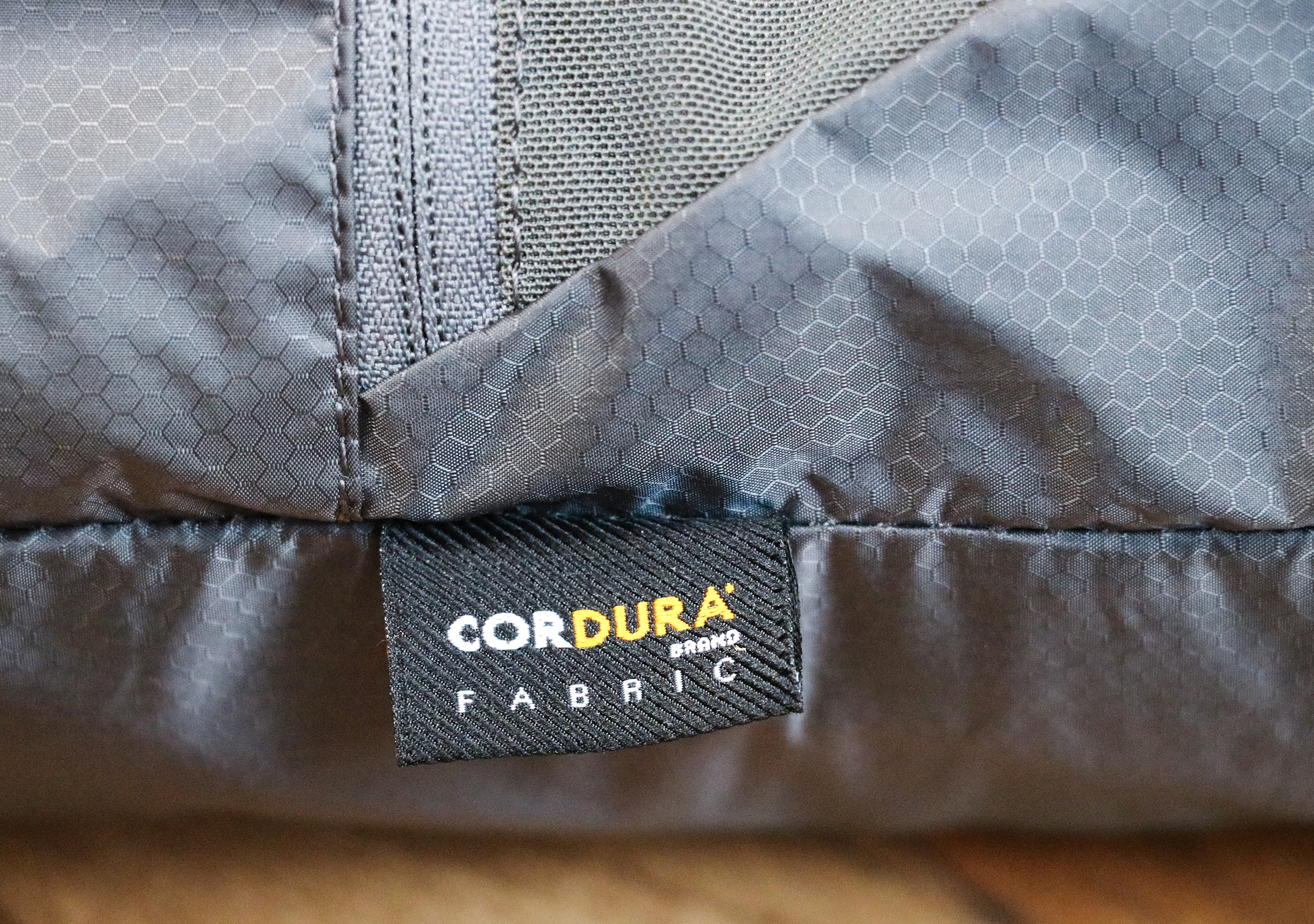
Some companies will use CORDURA® brand fabric for their cubes, which is highly regarded for their quality control and testing. While a 30D CORDURA® nylon isn’t necessarily better than another brand’s 30D nylon, it is a sign of quality and you can be assured of its durability.
Durability
Because of their thin materials, it would be easy to think that ultralight packing cubes aren’t that durable. Fortunately, this isn’t the case and they’ve proven themselves over years of testing.
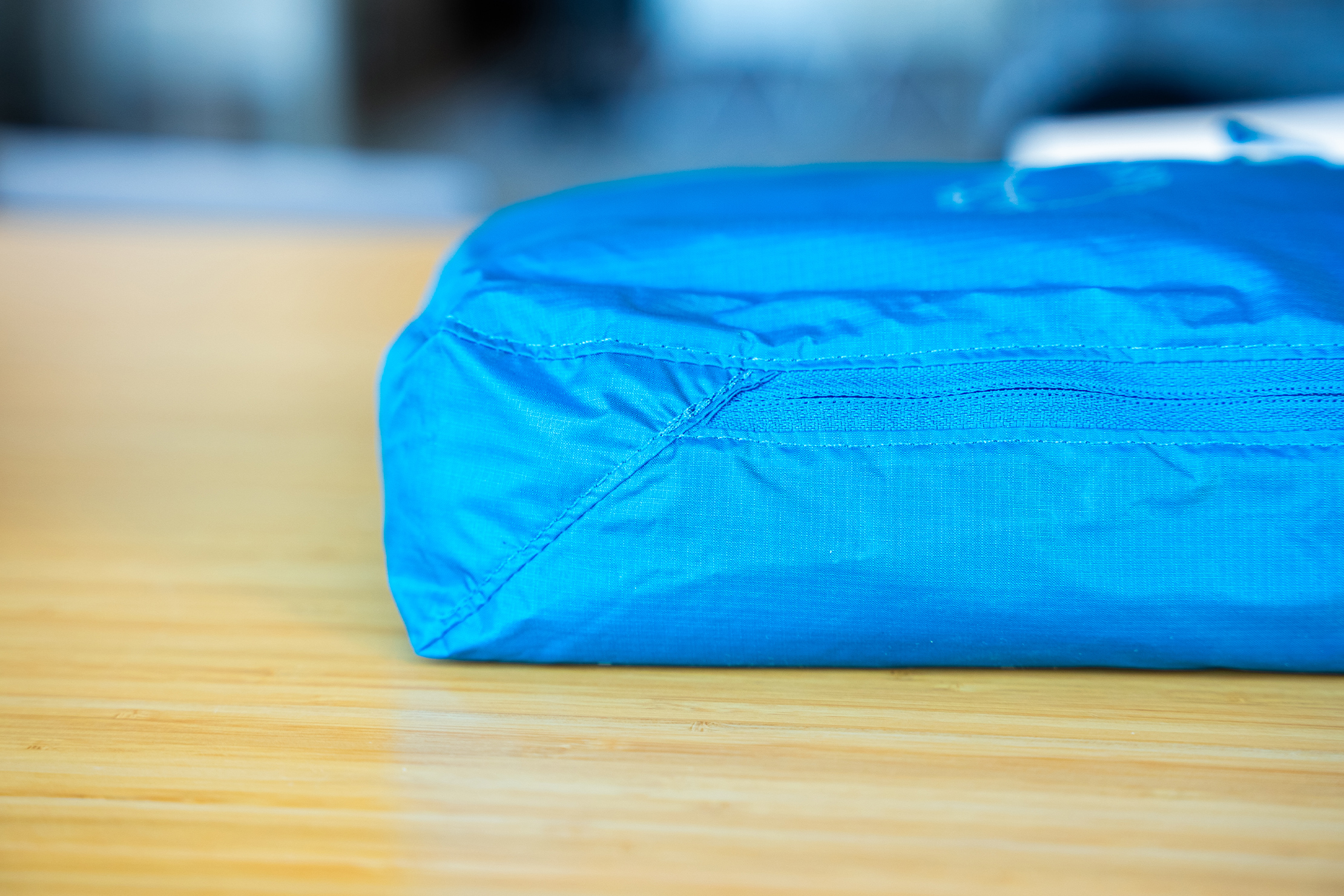
The most significant durability factor for ultralight packing cubes is the craftsmanship—and in particular, the stitching. No matter how high-tech the materials are, if the stitching holding a cube is shoddy, it’s not going to hold up. The best packing cubes have clean lines of stitching that hold the materials tightly together, no loose stitching or fraying ends. If the stitching is loose before you buy it, imagine what it will be like after a few months of use. It’s hard to see the level of craftsmanship if you’re buying online, but we’d recommend buying from a well-respected brand with solid reviews (like ours).
One small thing to note is that low denier nylon isn’t incredibly abrasion resistant. This is mostly a non-issue, since your packing cube will be protected inside your bag, but it’s something to be wary of.
Packability
Ultralight Packing Cubes won’t take up much room in your pack because of their minimalist style. Plus, they’re the lightest cubes around so that they won’t increase your overall load by much either.
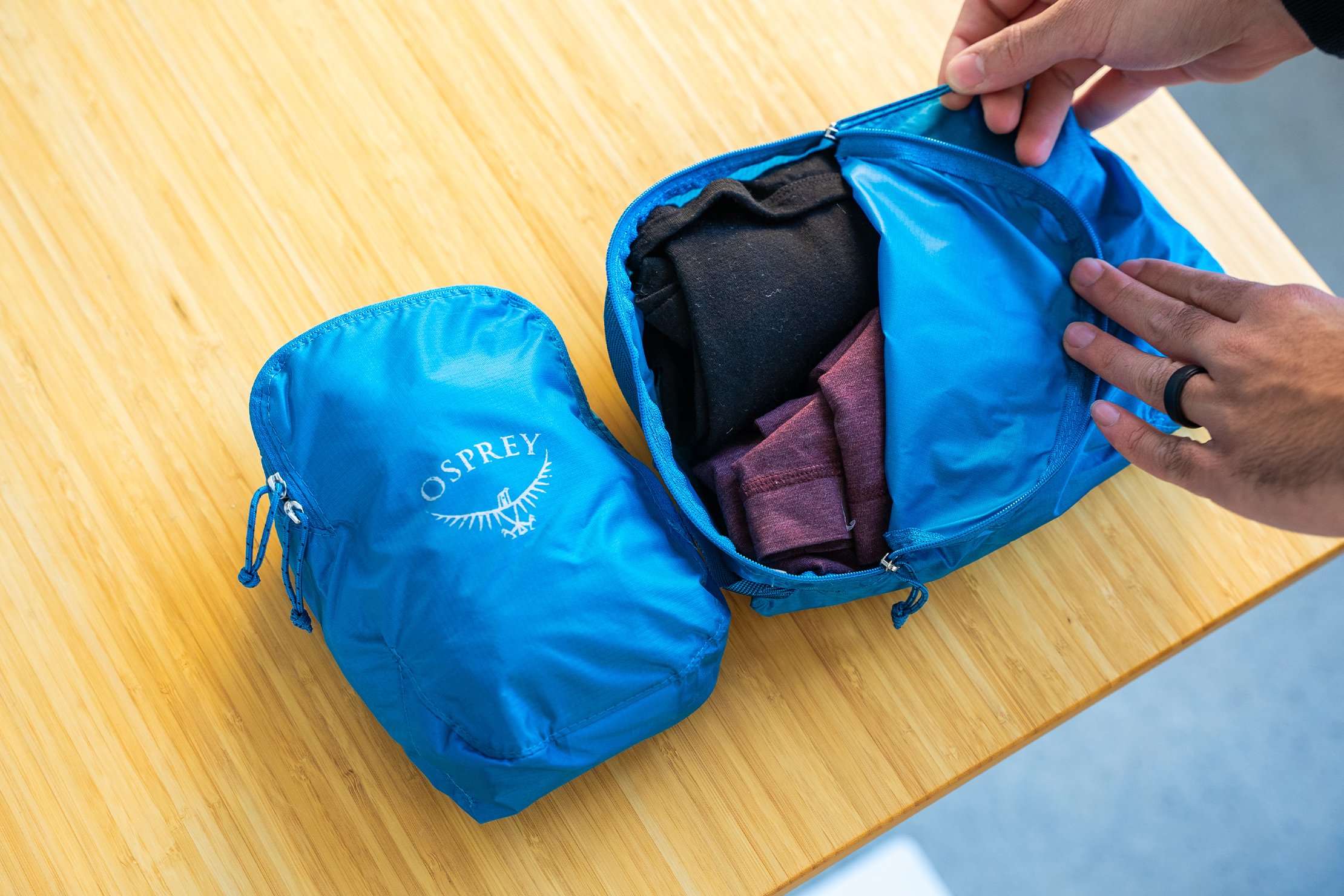
An important thing to note is that ultralight packing cubes don’t provide any structure since they’re usually just two pieces of fabric stitched together with a zip in the middle. This means that even if your clothes are rolled neatly, they will likely come out of an ultralight cube a bit creased. It’s a pain, but it’s the price you pay for ultralight-ness, and the severity of this issue largely depends on your use-case.
Recommendations
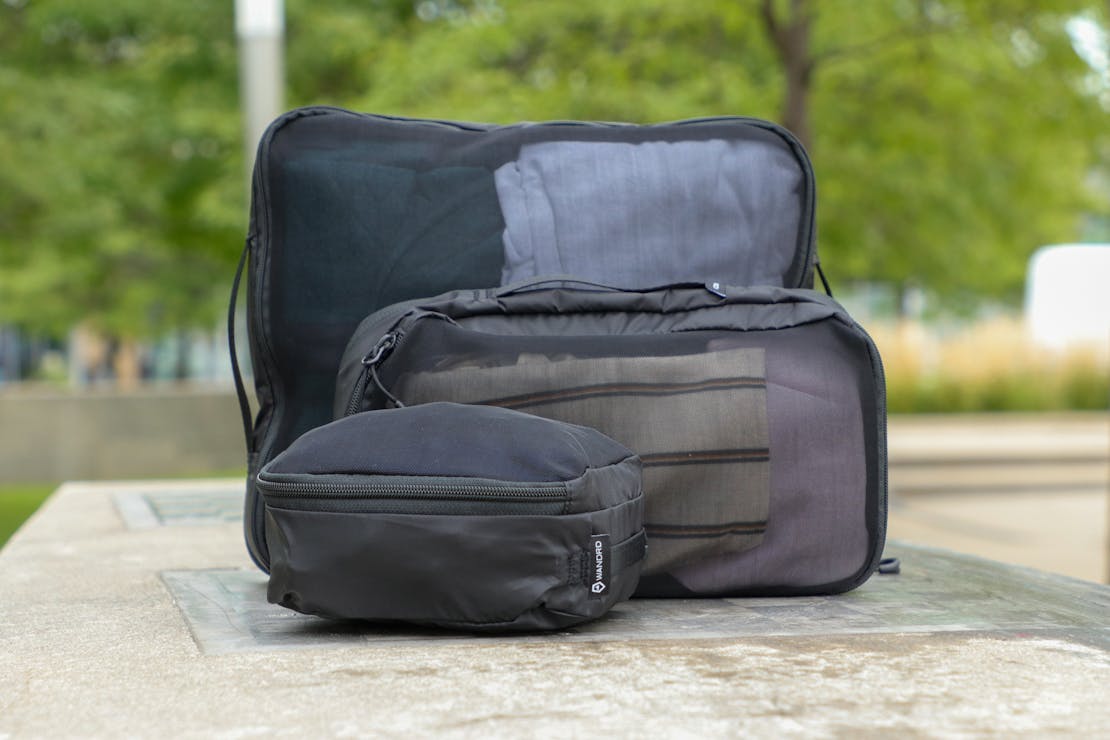
WANDRD Packing Cubes’ Perfect Fit System takes a lot of the guesswork out of mixing and matching differently sized cubes by scaling their cube’s size with one another, so the large is the size of two mediums, and so on. They feature a mesh top, so it’s easy to see what’s going on inside, YKK zippers, and a 70D nylon shell.
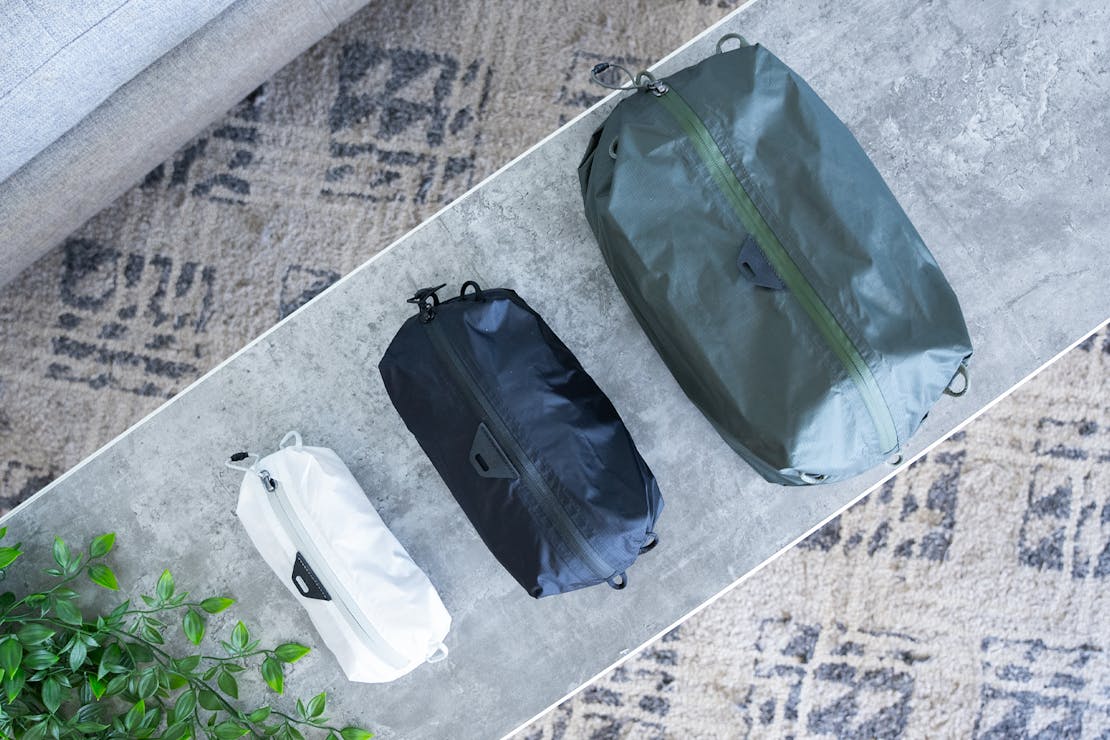
Lightness shouldn’t automatically mean flimsy, and the Peak Design Ultralight Packing Cubes are a testament to this. Its Terra Shell recycled nylon fabric feels very stiff, which makes it simultaneously robust and—unfortunately—hard to overpack. Great for those looking for tough but light cubes; not so much for packing efficiency.
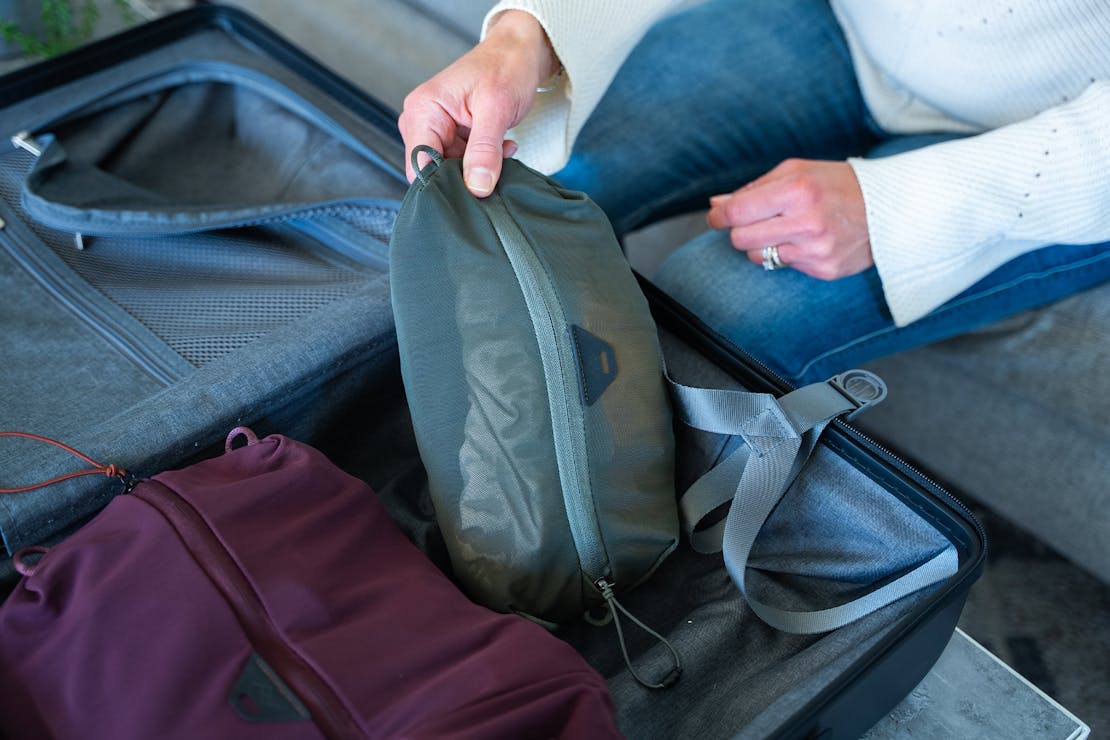
Unlike its regular non-mesh siblings, the Peak Ultralight Mesh Packing Cube stretching front cover allows users to pack just a tiny bit more when they’re trying to squeeze gear inside. The material is breathable, so it’s ideal for storing used clothing while on the go. Coincidentally, you can attach a carrying strap (sold separately) to the side loops and wear it as a sling, though we find it a bit too clunky to be functional.
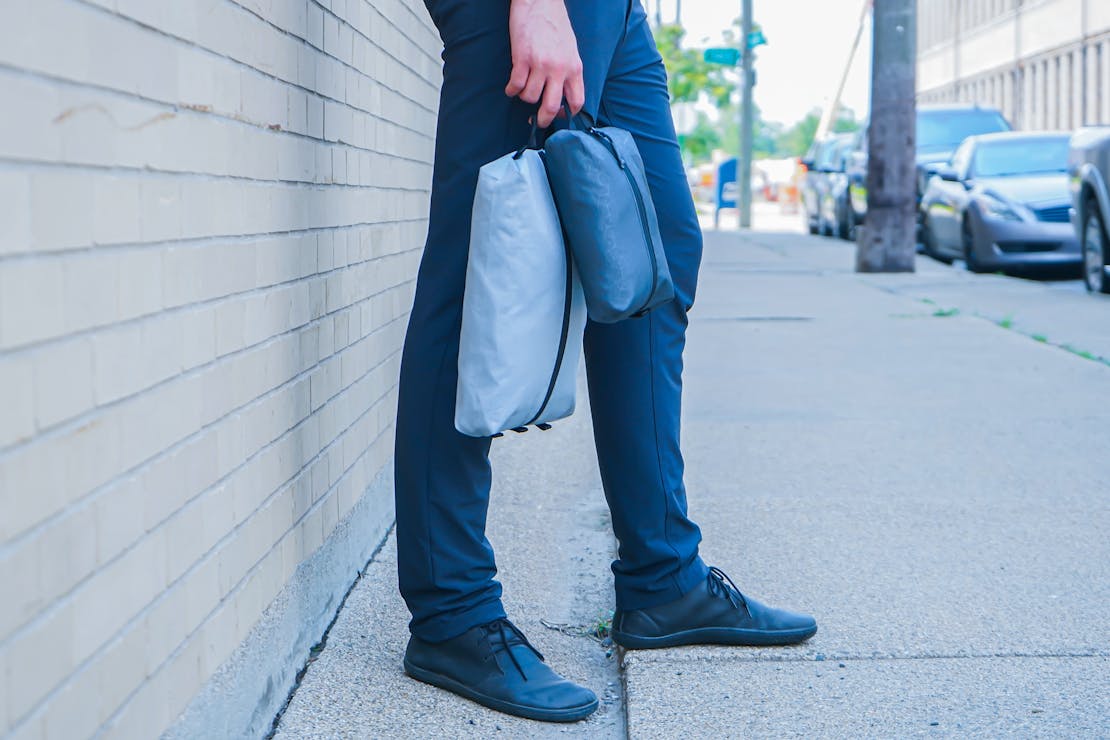
The Heimplanet Packing Cubes forgo the usually ripstop fabric other ultralight cubes use for 300Dx150D polyester. Featuring a neat geometric pattern and slick silver and black color scheme, this three-piece packing cube set offers both variety in size and distinguishable organization. The catch? The straight zippered openings mean lots of maneuvering when you’re trying to pack bulky clothing.
Ultralight Packing Cube Pros
- Incredibly lightweight
- Don’t take up much room
- Reasonable price-point
Ultralight Packing Cube Cons
- Hard to stack on top of one another
- Can move around inside your pack
- Don’t provide any structure
Packing cubes will help save space inside your pack, but compression cubes take it to the next level.
We’ve teamed up with CabinZero to give away a selection of top travel gear! Check it out →
Why Compression Packing Cubes?
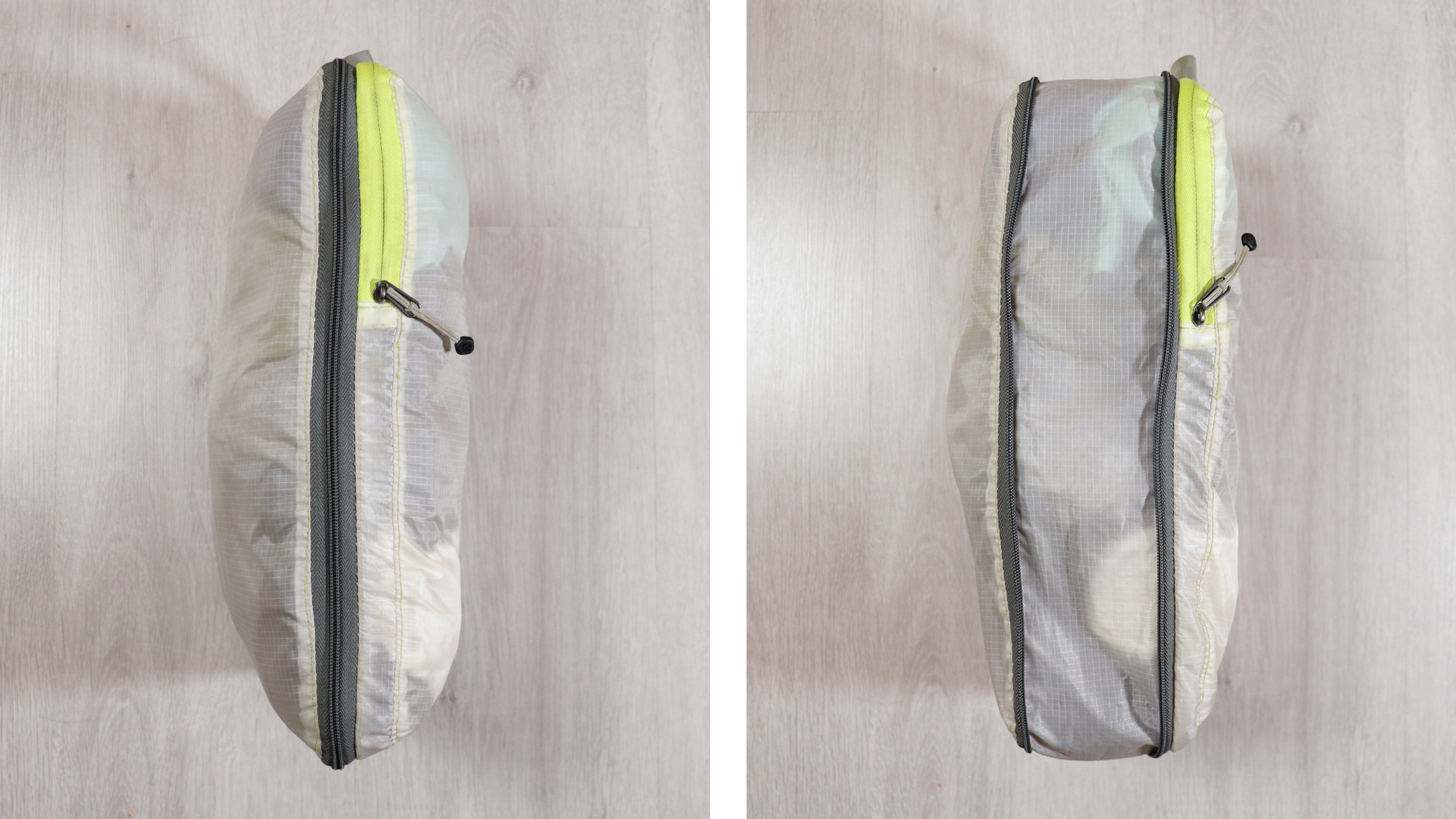
Compression packing cubes are for people who want to save as much room in their pack as possible. Every packing cube will compress your items to a certain extent, but a compression cube takes it to the next level. This is done by adding an extra zipper around the outside that can be zipped up to minimize the space inside—kind of like how a vacuum sealer works—and it’s remarkable how much of a difference they can make.
Materials
There is a bit of variety in this category since a compression packing cube isn’t determined by its materials. However, there are some reoccurring themes.
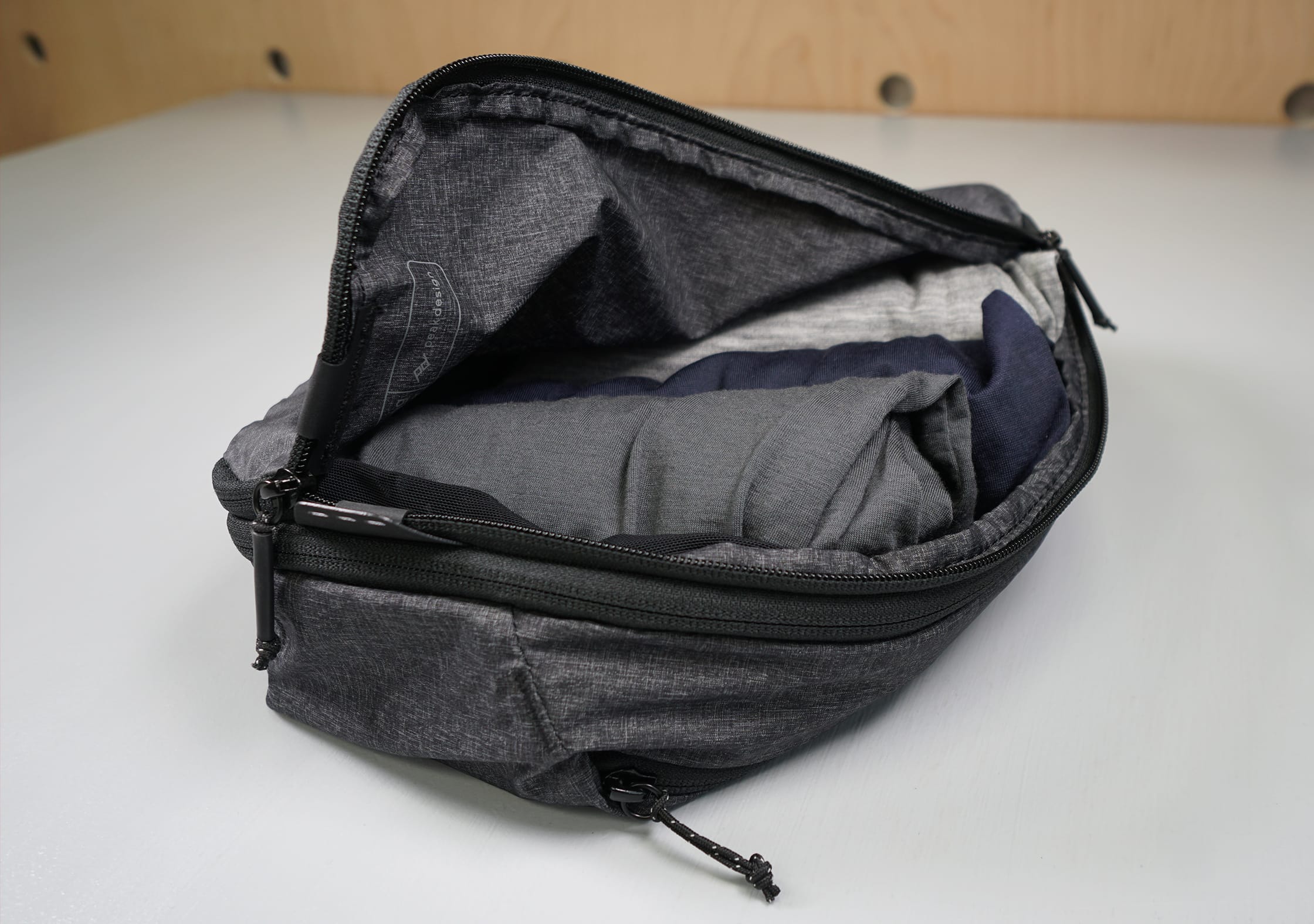
The materials have to be flexible, because these cubes stretch and compress—so most compression packing cubes will be made of a low denier nylon or polyester (under 100D) fabric. We tend to prefer nylon over polyester for compression cubes as you really need the added durability. That said, some compression cube fabrics will even go as low as ultralight cubes (30D or 40D), which makes them both an ultralight and compression cube. We’re big fans of these as you get two significant benefits in one.
Durability
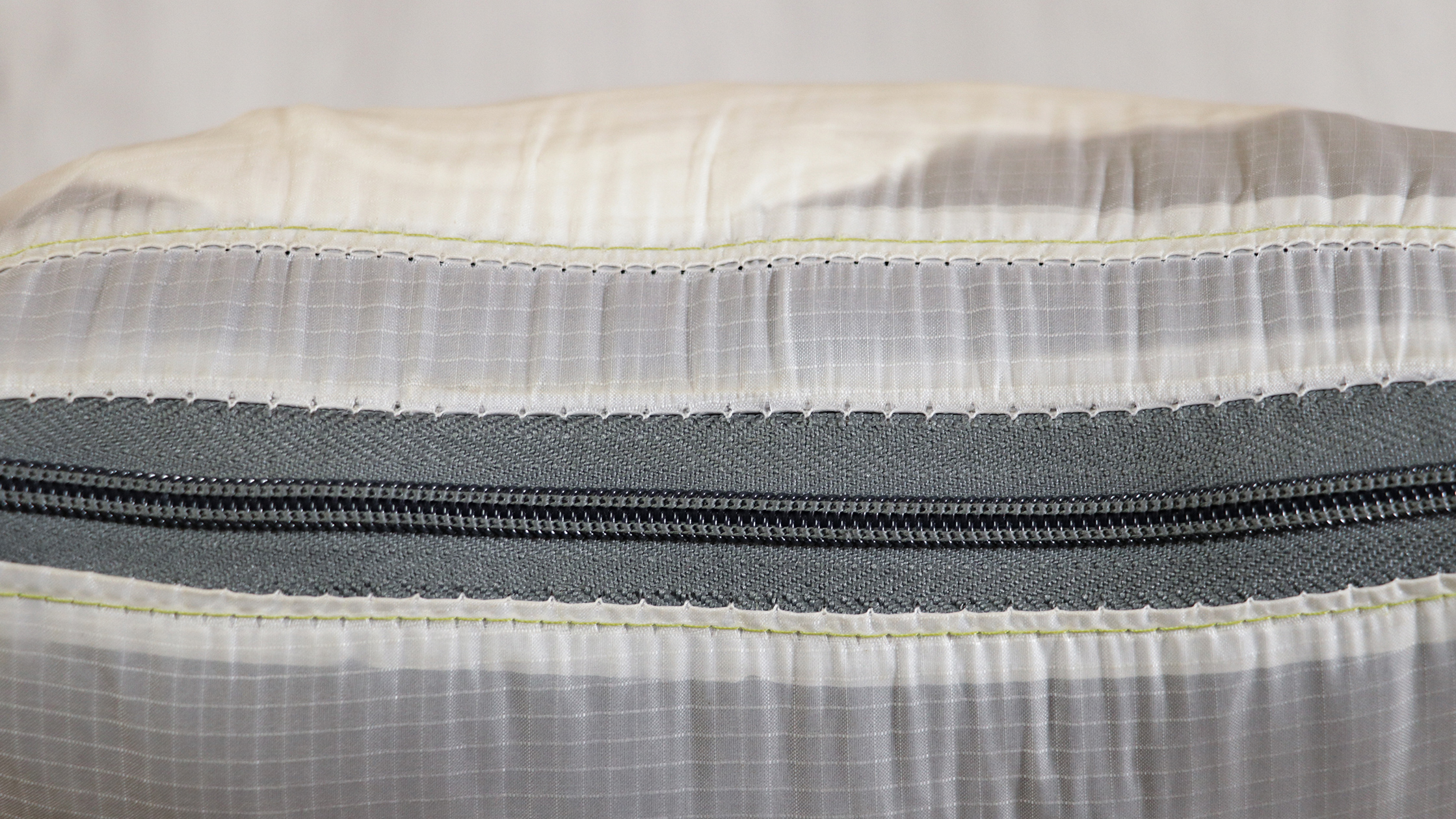
A compression packing cube is put under considerably more stress than other cubes, as the material stretches and the cube becomes tight when you compress it. Because of this, they can be more vulnerable to wear and tear. So you’ll want to make sure you get yourself a quality cube that won’t break within a few months.
Here are a few things to look out for:
- Make sure the fabric is nylon or at least a nylon-polyester blend. Some cubes will use 100% polyester, but it’s typically not as strong as nylon. While polyester can be a fine choice for other cubes, you’ll want the added strength of nylon for a compression cube.
- Ripstop technology increases a material’s resistance to rips and tears and dramatically enhances durability. Nearly all compression cubes will use some form of ripstop, but it’s important to double check. If you’re struggling to find information on whether it has ripstop or not, look for small hexagonal or cubed lines in the material.
- We discussed how vital craftsmanship is for ultralight packing cubes, and it’s even more so for compression cubes. The stitching is put under great strain when you compress a cube, so one loose thread can easily compromise its integrity.
- The zipper around the side that compresses the cube is put under a lot of stress, so make sure it’s a good zip from a quality brand. We go deep into zippers and what to look out for specifically at the beginning of the considerations section below.
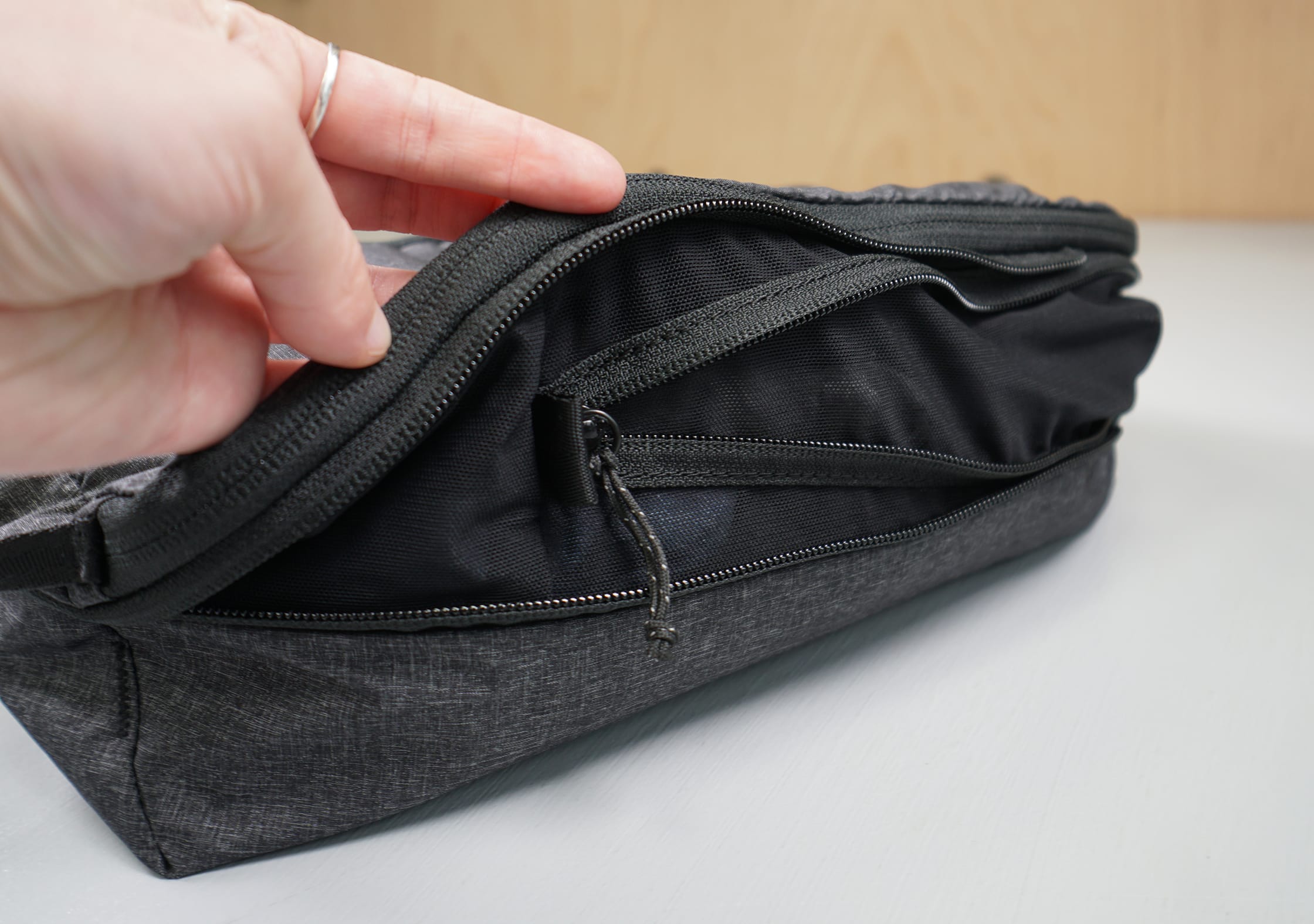
It may sound like compression packing cubes are a recipe for disaster, with all the added stress on the fabric and zippers…but that really isn’t the case. We’ve come across plenty of highly durable compression packing cubes in our day. And as long as you buy a quality cube made with top-notch materials from a reputable brand, durability shouldn’t be an issue.
Packability
There’s no getting around it, compression cubes take up the least amount of room inside your pack. (It’s kind of what they’re built do to.) This is a significant check in their packability score, but there are a couple things you should be aware of too.
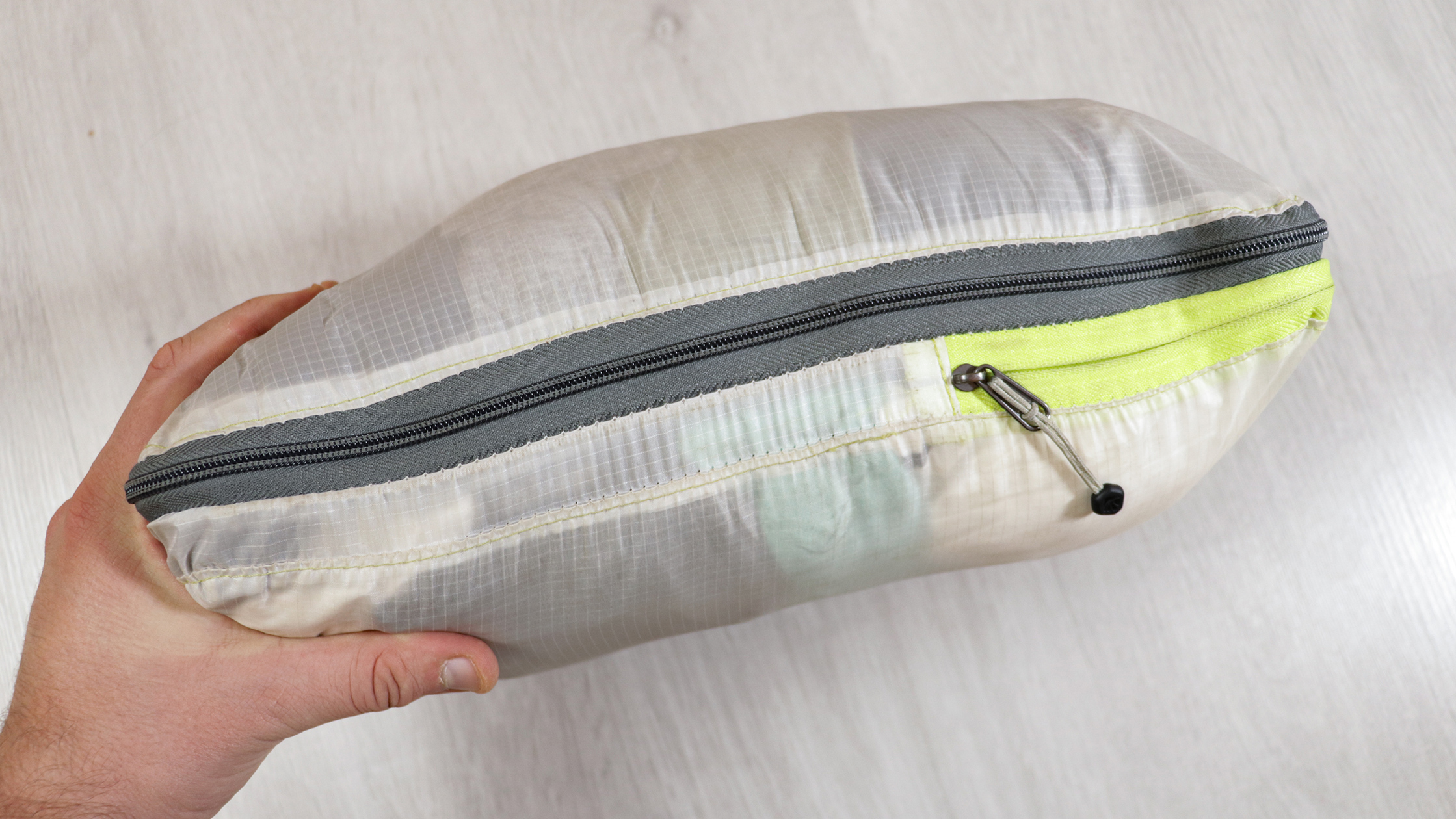
Compression cubes can become slightly rounded when you compress them. This means they can’t be easily stacked on one another, and you might lose space in your pack because of it. Plus, this increases their tendency to shift around in your pack.
A compression cube can also crease your clothes. This likely isn’t a concern if you’re hitting the beach with a pack full of tank-tops and shorts, but if you’ve packed a few shirts for fancier establishments then it can be a real pain. You can minimize creases by neatly rolling up each item of clothing, but at the end of the day, they are impossible to avoid entirely when you’re compressing your clothes tightly together.
Recommendations
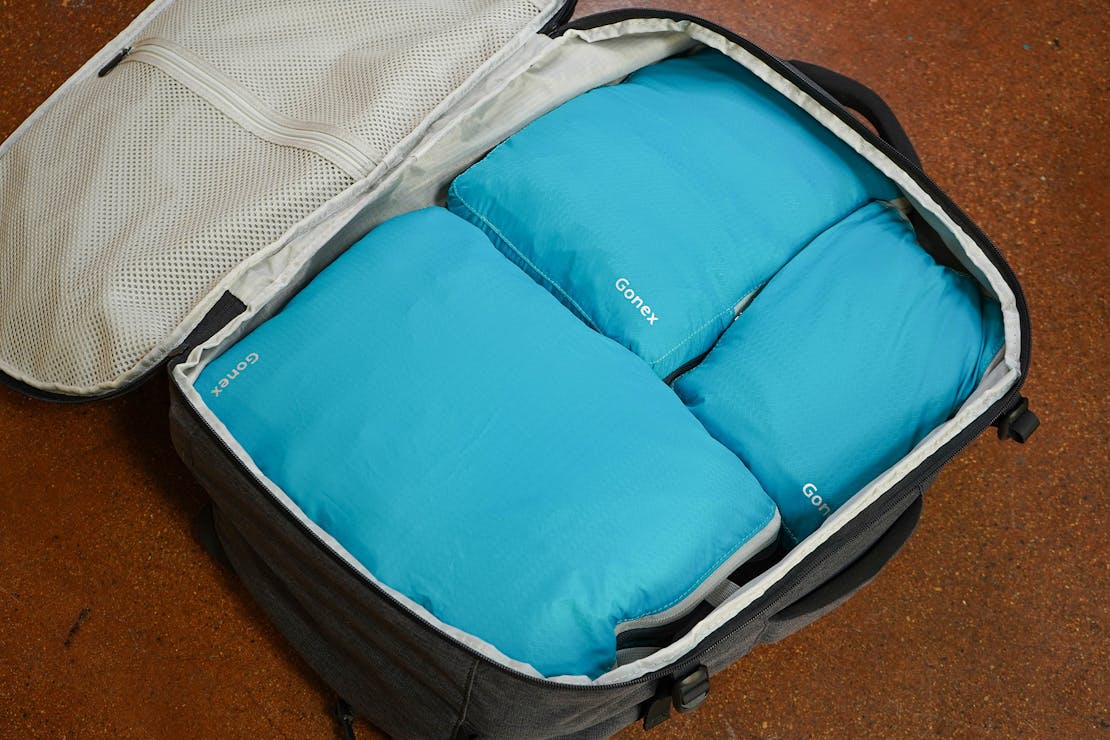
The Gonex Compression Packing Cubes are incredibly lightweight and have held up well throughout testing around the world! Made of nylon, with SBS zippers, they’re water-resistant to protect your stuff and are ideal for people looking to save as much space inside their pack as possible.
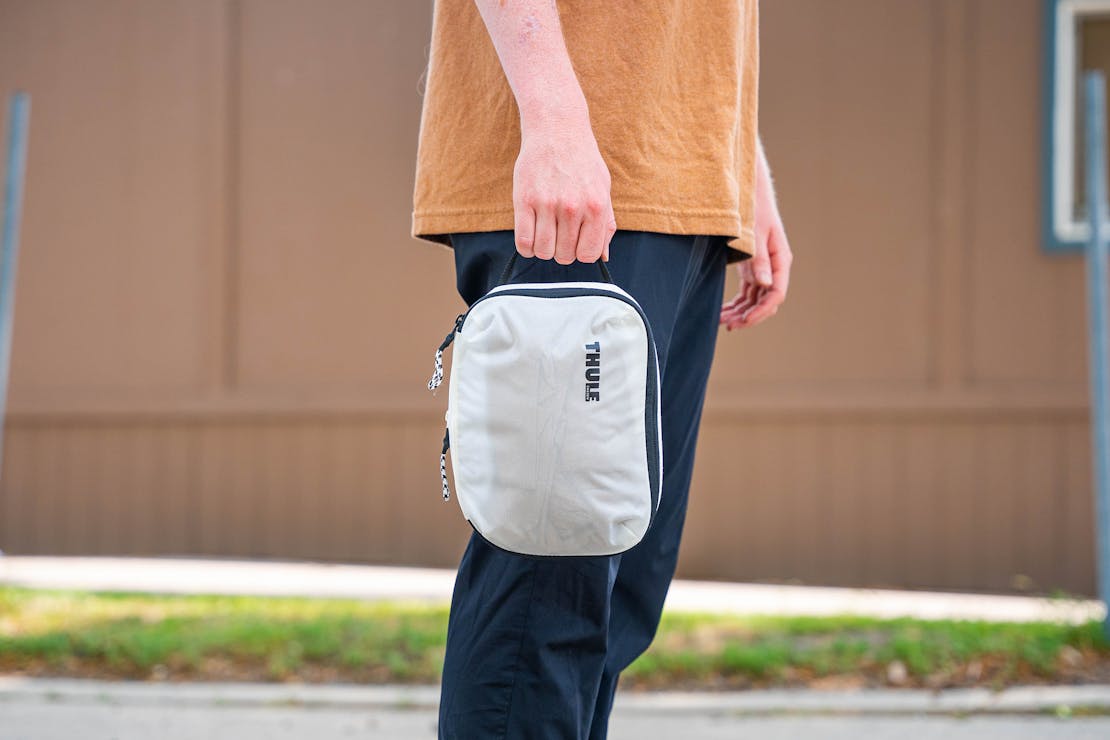
The Thule Compression Cube Set will help you save space in your pack—they compress from 4 inches deep down to just 1.25 inches! Thule uses YKK zippers to get the job done. They’re slightly see-through, too, so you can remember which cube contains your favorite T-shirt.
Compression Packing Cube Pros
- Compresses your clothes to save room inside your pack
- Lightweight
- Can be used in two different capacities (compressed and uncompressed)
Compression Packing Cube Cons
- Can crease your clothes (even if you roll them neatly)
- Pricier than non-compression packing cubes
- Hard to stack on top of one another
On a budget? Fear not! These packing cubes won’t break the bank.
We’ve teamed up with CabinZero to give away a selection of top travel gear! Check it out →
Why Budget Packing Cubes?
Why would you get budget packing cubes? Well, the clue is in the name. They’re cheap!
Here at Pack Hacker, we tend to focus on high-quality, good looking, and extremely functional gear. But there are instances where buying budget just makes sense. Perhaps you’re only traveling for a month and don’t need something that will last a lifetime. Maybe you’re working on a limited budget and picking up the best packing cubes is less of a priority than other, more expensive gear you need to buy. Or maybe you’re simply just not interested in all the bells and whistles of other packing cubes.
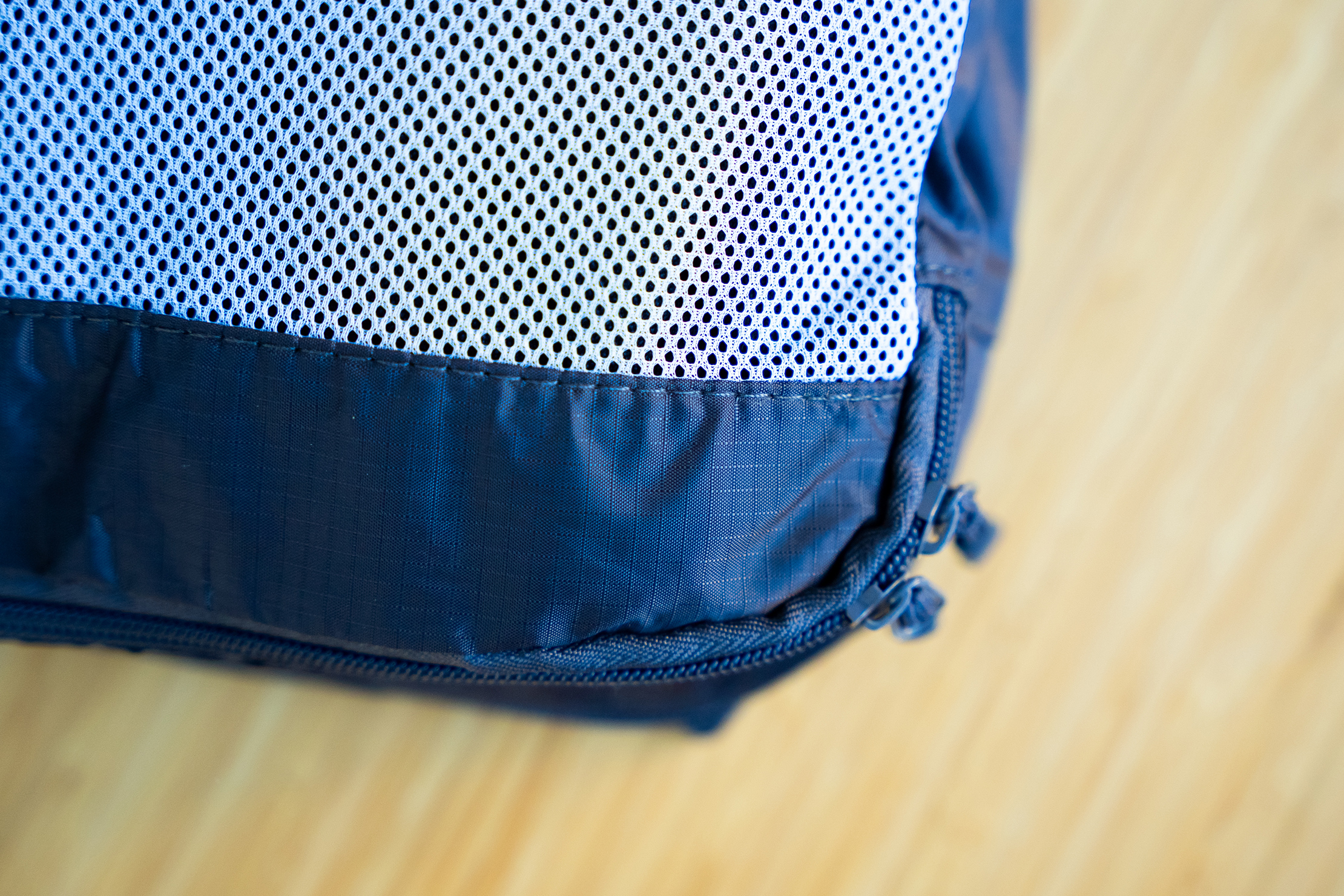
The bottom line is, depending on your use-case, budget packing cubes can be a great choice. And they’re also incredibly easy to get your hands on, with places like Walmart and Target now making their own. Not forgetting the gazillion packing cubes for travel available on Amazon. We’re all suckers for that free two-day delivery on Prime right?
Materials
Budget packing cubes are cheap because they use inexpensive materials. However, while the materials won’t be as high-quality or as high-tech as others on the market, they should still be up to the task at hand. After all, a packing cube is just a small container for your clothes, it doesn’t have to be be indestructible.
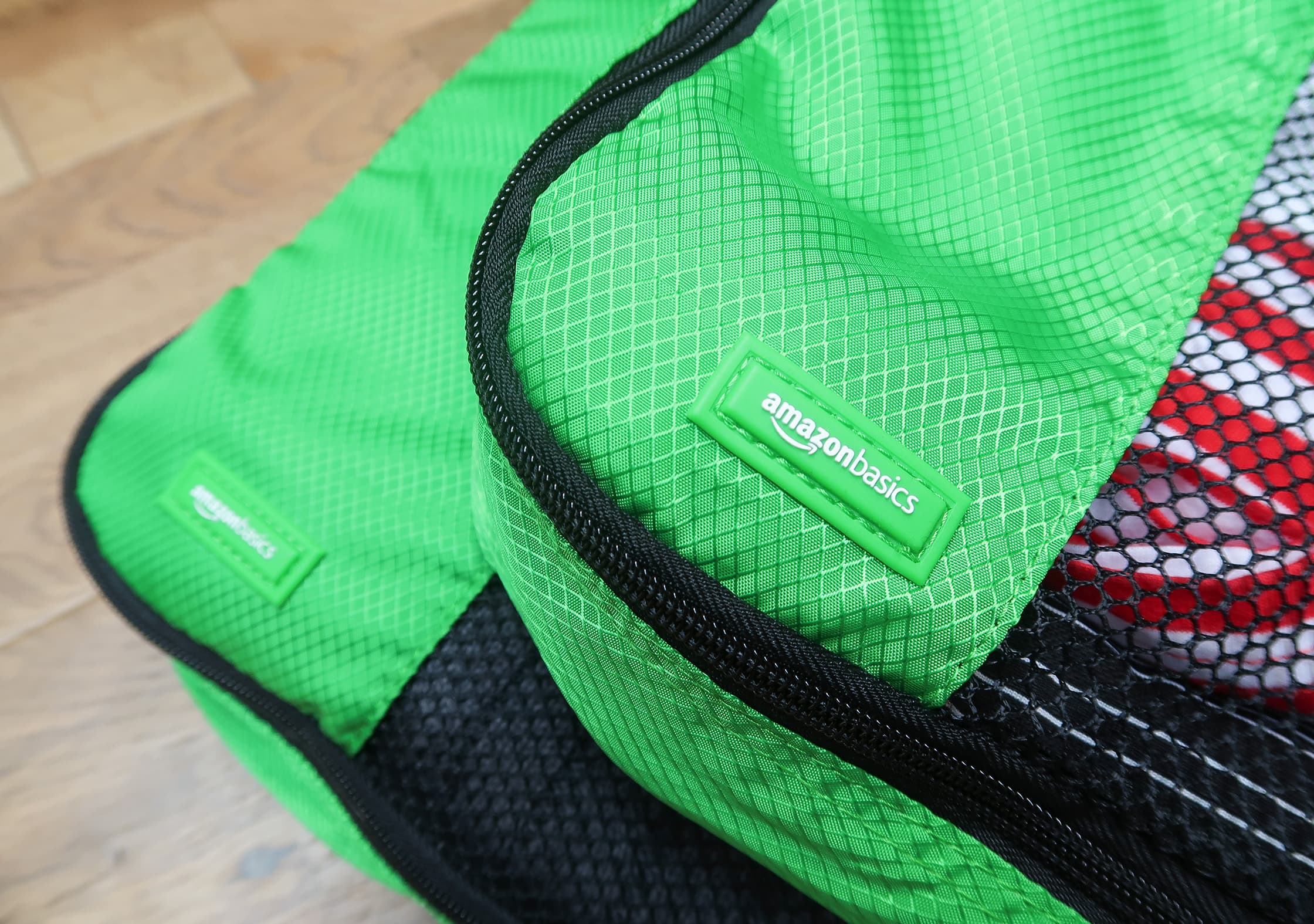
Budget packing cubes are typically polyester, and while we prefer nylon because it’s stronger and softer to the touch, it’s by no means a bad material. Polyester is still lightweight, wrinkle-resistant, and fairly durable. Plus, it’s even more abrasion resistant and quicker drying, so there are pros.
While ripstop technology isn’t overly common in budget cubes, it can be found. If your only concern is to find the cheapest cubes possible, you could forego it. But, if a rip does appear it will inevitably get larger and render your cube unusable over time. Ripstop can stop this from happening (it’s in the name after all). So, if you’re planning on using these cubes for longer than one trip, it could prove a vital addition.
Durability
It will come as no surprise that budget packing cubes aren’t heralded for their durability. However, this doesn’t mean they’ll all break one week into your trip around the world. In fact, we’ve tested a set of Amazon Basics Packing Cubes for over a year of perpetual travel, and they’re still going strong. While we can’t guarantee every budget packing cube will survive a year of everyday use, it is possible.
But we should clarify that budget packing cubes are, of course, less durable than higher-quality and more expensive cubes, and buying budget will always increase your chance of something going wrong at some point down the line.
Also, when something does go wrong with a budget cube, you’re most likely going to be out of luck in terms of warranty or repairs. While some of the higher-end brands—like Peak Design or GORUCK—will offer lifetime warranties or handle repairs for you, chances are you won’t find any of that with budget cubes.
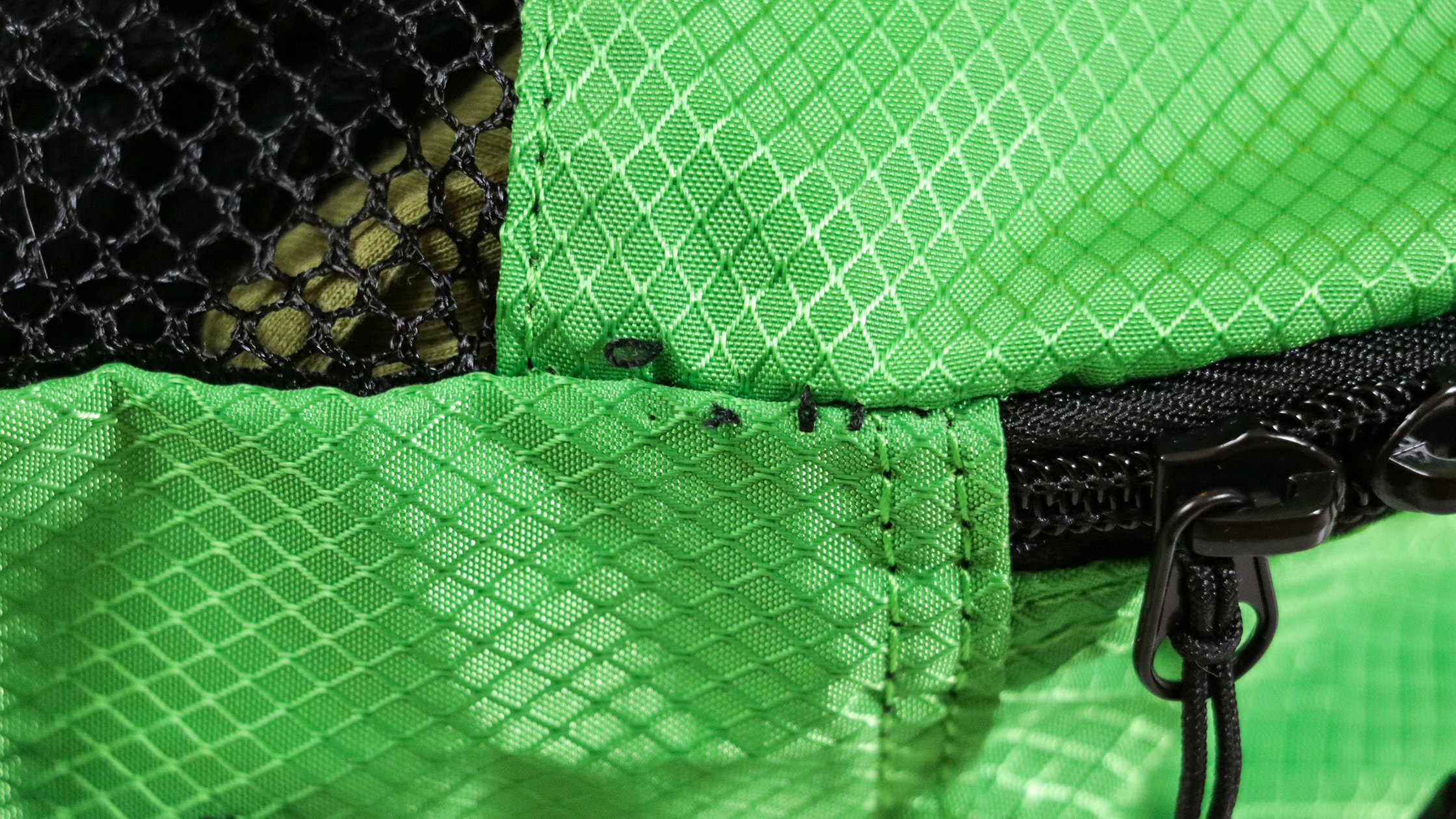
We’d recommend treating budget cubes with a bit of care, as they may not be able to handle everything you throw at them. The craftsmanship may not always be impeccable, and stitching may start to loosen if you continuously fill these things to the brim.
Packability
The majority of budget packing cubes for travel are surprisingly easy to stack on one another inside your bag. This is because they tend to be a basic rectangular cube shape that holds its form and structure well.
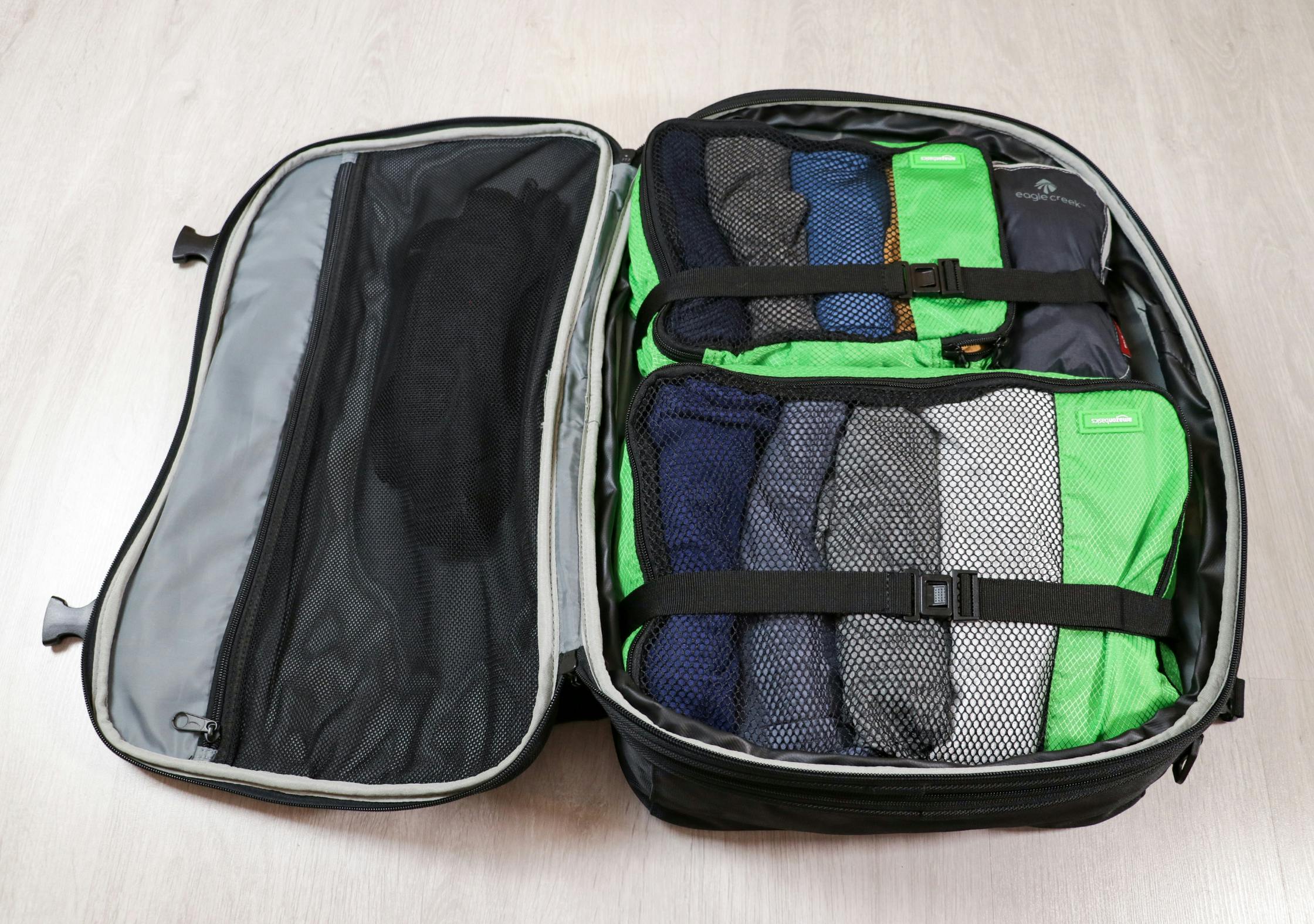
On the other hand, they will take up more space inside your pack than compression cubes, and they will be heavier than ultralight cubes. This is the trade-off for cheaper cubes, and it’s a decision you’ll have to make depending on your situation. If you’re looking to save as much space inside your pack as possible, then it may be worth spending a bit more on ultralight or compression packing cubes.
You don’t even have to buy specific packing cubes if you don’t want to, as you’ll likely have a Ziploc or plastic grocery bag laying around the house already. While we would advise packing cubes, these can work if you’re in a pinch.
Recommendations

These cubes are a tad bulky and they’re not great at compressing your clothes. But we’ve tested them for over a year of perpetual travel and they’re still going strong! That’s some awesome durability for a set of budget cubes. Plus, they’re rocking ripstop technology too.
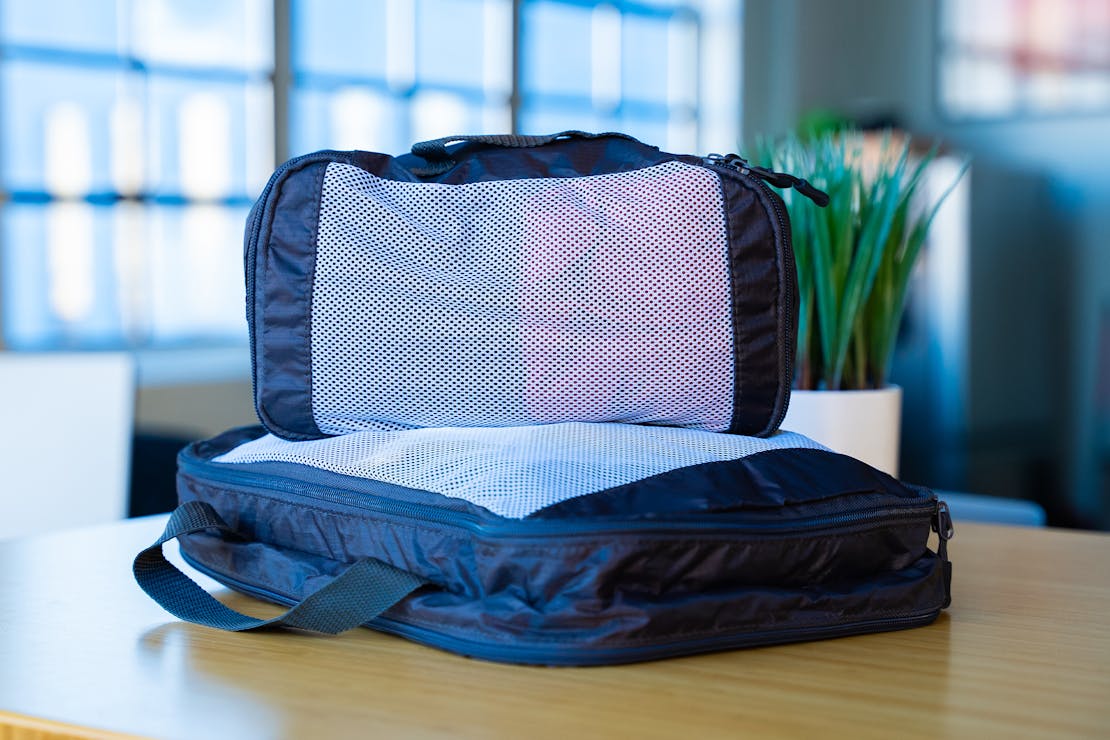
This set of packing cubes is one of the cheapest we’ve come across. While they’re 100% polyester and don’t have branded zippers, they are ideal for anyone looking to spend as little as possible.
Budget Packing Cube Pros
- Cheap
- Seriously, they’re really cheap
- Readily available
Budget Packing Cube Cons
- They can take up more room inside your pack
- Craftsmanship can be sloppy
- Not the most durable
Looking for something special?
We’ve teamed up with CabinZero to give away a selection of top travel gear! Check it out →
Why Specialist Packing Cubes?
While we’ve already covered the best packing cubes for most situations, there is a chance you may need something more unique for your use-case. Thankfully, there are a few brands that manufacture specialist packing cubes to fill specific niches in the market.
Shoe Pouch
Using a plastic bag to store extra shoes while traveling is very resourceful and eco-friendly. However, let us introduce to you shoe pouches, which are distinguishable from regular packing cubes in a few ways. Firstly, they usually have a single, straightforward opening like a drawstring or rolltop. They’re also often more irregularly shaped, taking the form of—as their name suggests—pouches rather than cubes. Lastly, since shoes are generally stiffer than clothing and come in a range of sizes, they’re often made with flexible and lightweight materials that can be molded around different shaped footwear.
The main perk is that, unlike a plastic bag, shoe pouches are much less likely to rip while you’re traveling. This means that you don’t risk dirt and grime from the soles getting into your bag, and you don’t have to find a replacement bag after a couple trips.
Recommendations
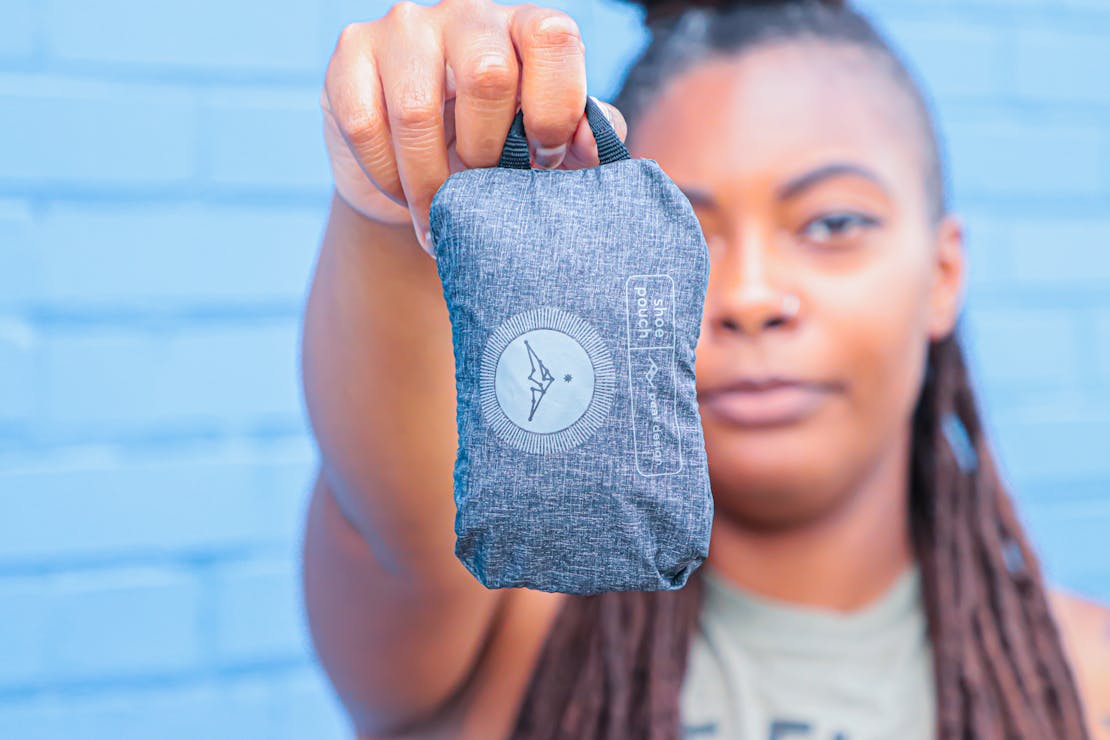
Shoes are some of the more harshly-shaped pieces of gear you can pack, which is why the Peak Design Shoe Pouch’s self-healing nylon is a blessing. Not only does it preserve the basics of being lightweight and flexible, but it also gets rid of snags like magic. The fabric is also quite water-resistant, and so are the zippers. We are a bit puzzled why Peak Design opted out of YKK, as they’re one of the best brands on the market, but they still get the job done. Also worth noting is that it packs into itself for easier storage when you’re done using it.
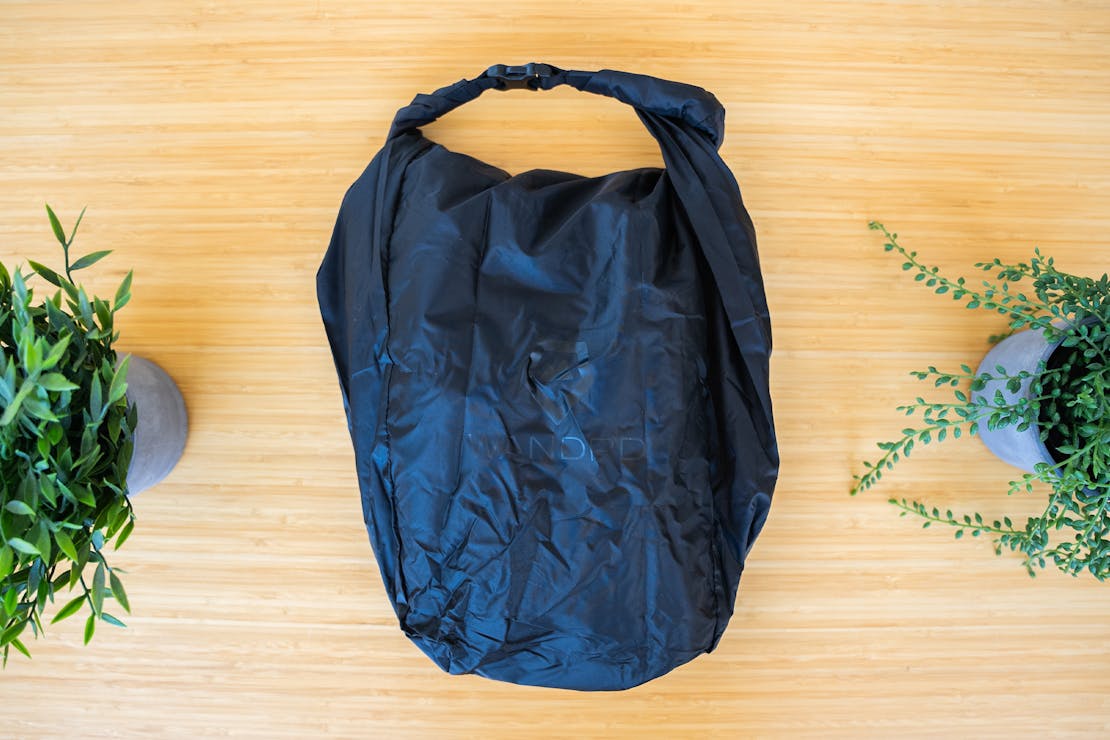
The WANDRD Shoe Pouch’s rolltop design just makes a ton of sense for a shoe pouch, making compression easy without us having to worry about breaking a zipper in the process. Simply roll the top opening until you can’t and cinch it shut with the clips—easy! We also like how there’s a partition in the middle. If nothing else, they keep each shoe from transferring dirt to and from one another during transit.
Shoe Pouch Pros
- More durable than a plastic grocery bag
- Saves space for when you absolutely have to travel with an extra pair of shoes
- No more dangling expensive footwear off your backpack’s bungees
Shoe Pouch Cons
- Locks in the moisture and dirt along with your shoes
- Compressed shape is still largely determined by the shoes inside
- Often sold separately from packing cube sets
Padded Packing Cubes
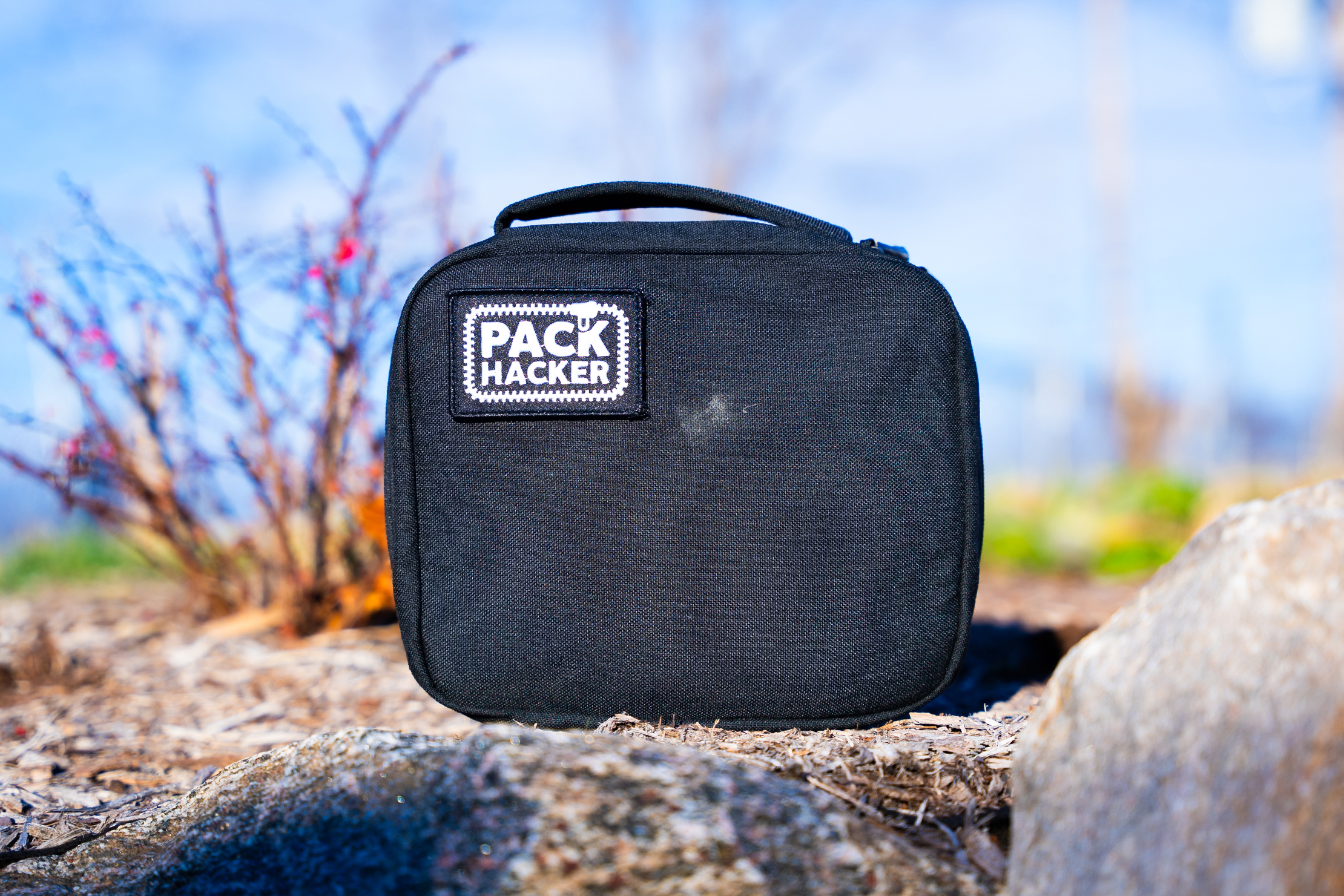
Padded packing cubes are like every other cube on the market, just padded for further protection. While you don’t necessarily need added protection for your clothes, these cubes do have a unique set of benefits that could come in handy depending on your use-case.
Versatility: A padded packing cube can be used solely for clothes, but because of the padding, you can also use it for your tech gear too. If you’re in a pinch, you could even put a combination of both inside, like t-shirts and a travel camera.
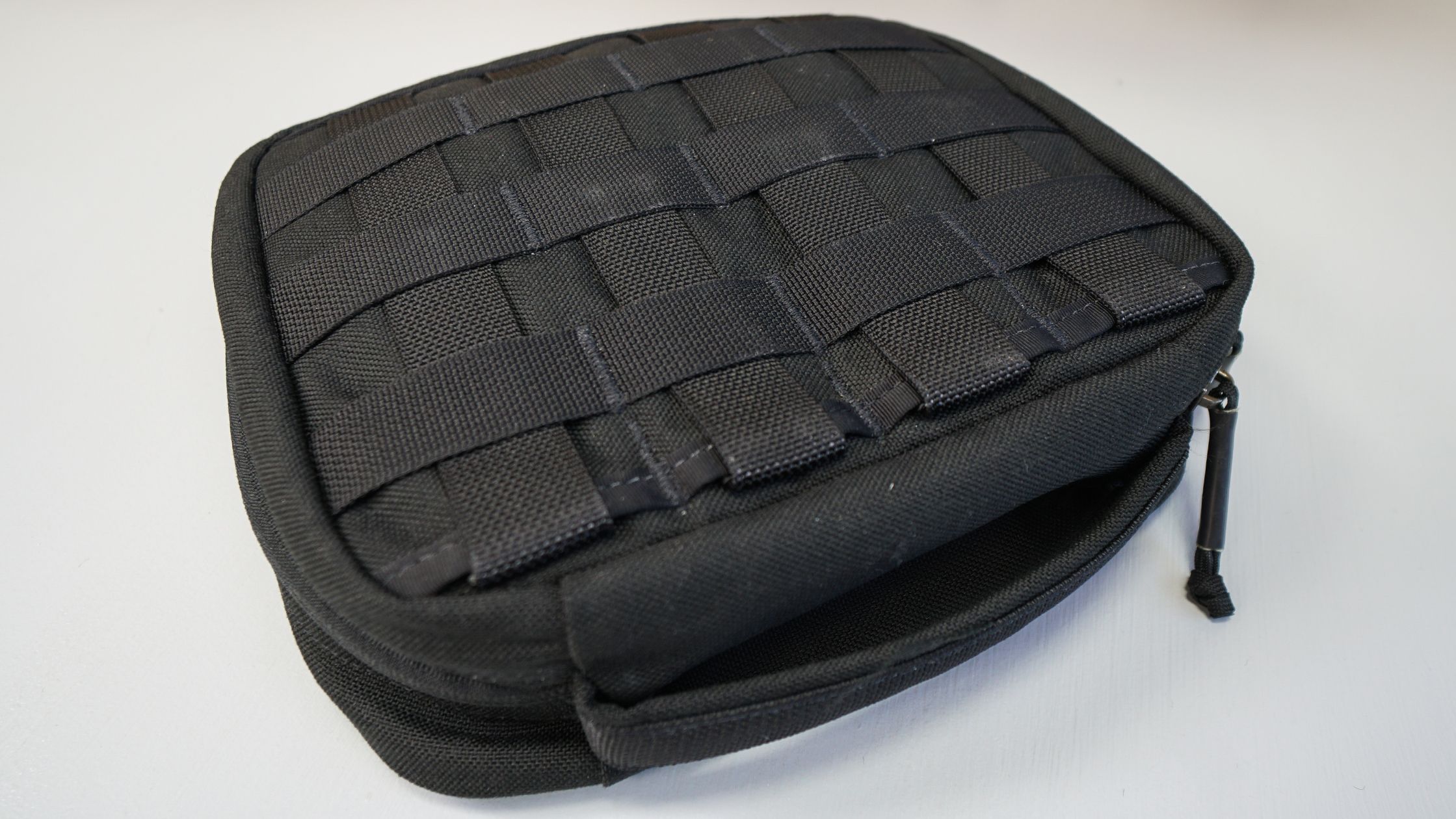
There are even some padded packing cubes that feature MOLLE webbing for PALS attachments, a modular system that enables you to attach items to a backpack. For instance, you could attach a padded packing cube to the outside of your pack for quick access or because the inside is full. While this won’t be beneficial to everyone, the versatility is pretty rad.
Structure: A padded packing cube is more structured than others on the market, which can be beneficial for a couple of reasons. First, they are easy to stack inside your pack, and it’s easy to utilize all available space when the main compartment of your backpack is rectangular. And clothes are least-likely to crease inside of a padded packing cube, because of the structure inside and padding on the exterior.
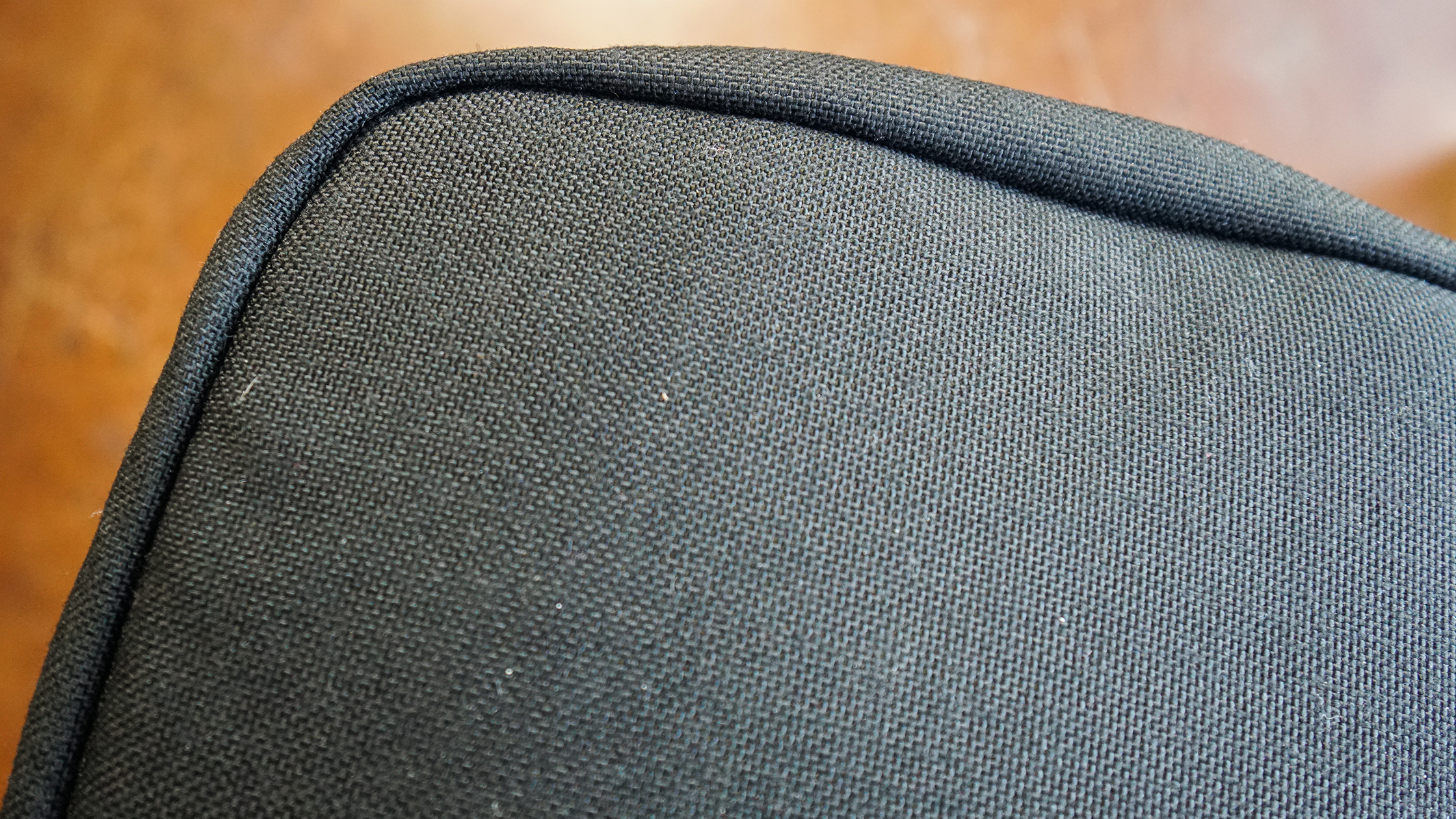
Durability: These are some of the most durable packing cubes you can buy. This is because they’re usually made from high-quality materials and high denier fabrics, similar to what you’d find on an actual backpack. If you’re all about durability and want your gear to last a lifetime, these could be the best packing cubes for you.
This all sounds great! BUT, there are a few significant trade-offs you’ll have to make.
Weight: Padded packing cubes weigh a fair bit more than others on the market, especially ultralight cubes. Because of this, it may not be a good idea to fill your pack up exclusively with padded cubes, but one or two are worth considering if they make sense for your use-case.
Size: Because they are padded, these cubes take up a lot more room than necessary. If space is at a premium and you’re solely picking up cubes to save space inside your pack, padded packing cubes may not be the best option for you.
Cost: The price of padded packing cubes can really creep up, and these certainly aren’t the most cost-effective on the market if you’re working on a budget.
Recommendations

The GORUCK GR2 Field Pocket is one of the most durable packing cubes on the market. It’s handmade in the USA with 1000D CORDURA® nylon and it comes with a lifetime warranty. There’s also MOLLE so you can attach it to the inside, or outside, of a compatible backpack.
Padded Packing Cube Pros
- Versatile and can be used to store more than just clothes
- Structured and easy to stack on one another
- Incredibly durable
Padded Packing Cube Cons
- Can be expensive
- Adds a lot of bulk inside your pack
- Heavy and will increase the weight of your bag
Weather Resistant Packing Cubes
If you’re traveling somewhere prone to a downpour, or you like to buy over-spec gear for all potential scenarios, you could consider weather-resistant packing cubes for travel. While not overly common because most people just don’t need them, they can be found, albeit with varying degrees of weather resistance.
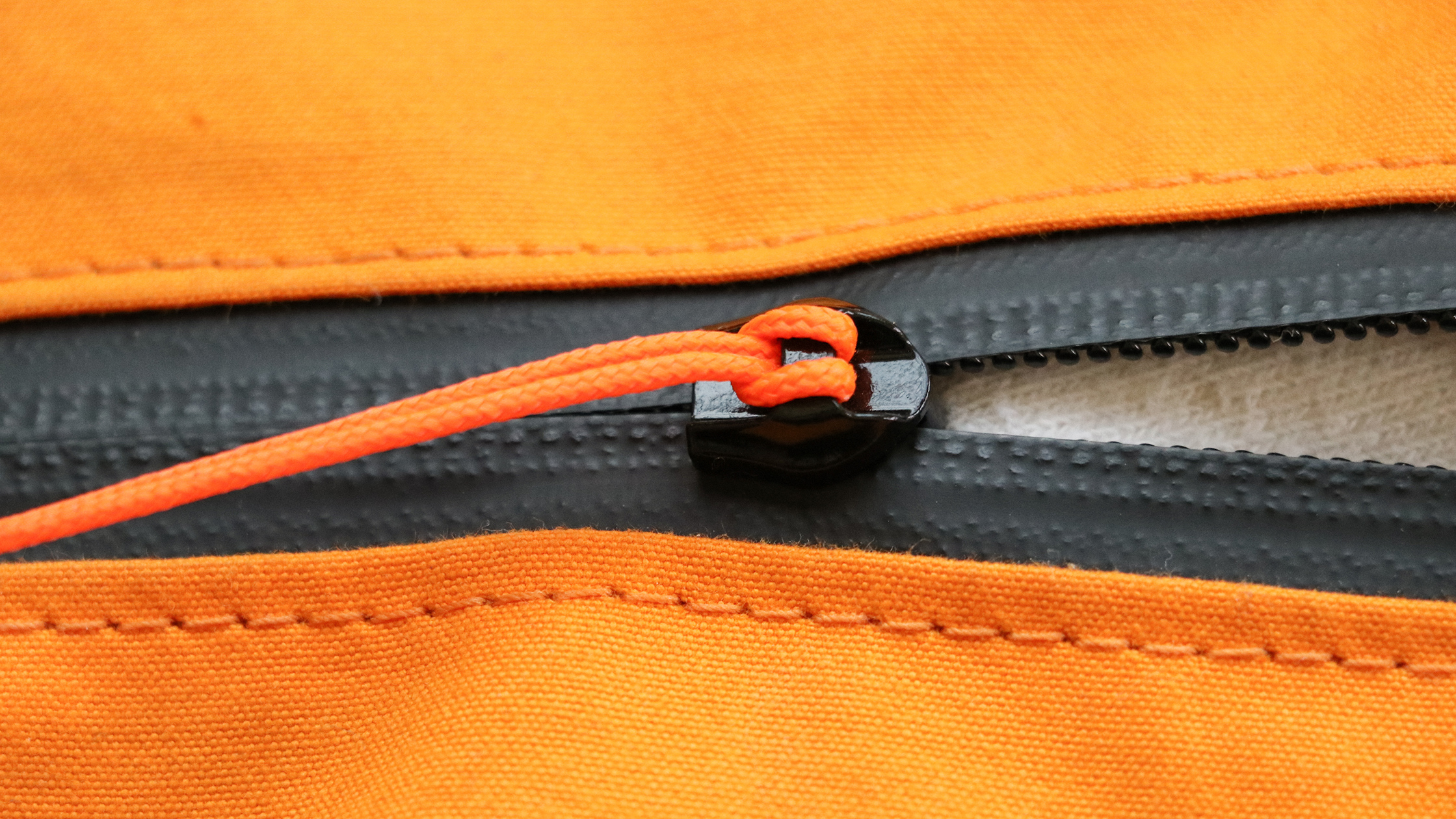
For a packing cube to be considered weather resistant, the material and zippers must be resistant to water. We say this because the latter is so often forgotten. It’s all well and good having a material that won’t let water through, but if the zippers offer no protection, water is going to get inside anyway.
However, weather-resistant materials and zippers don’t come cheap, so expect to pay a fair bit more for these cubes. And you’ll have to ask yourself, “do you really need weather resistant cubes?” Probably not.
Recommendations
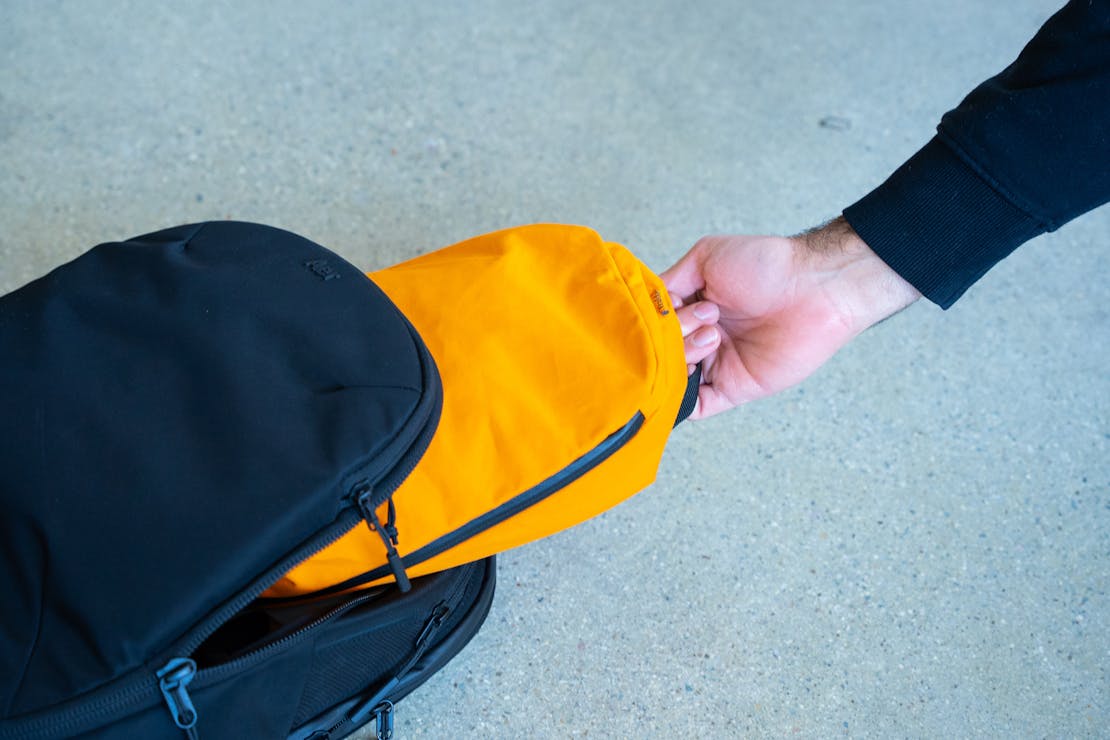
Some of the most weather resistant cubes we’ve across. They’re made from a dry-finish waxed canvas that won’t let any water through, and the #5 YKK AquaGuard® zipper is the perfect finishing touch. Plus, they’re bright orange so they’re easy to see inside your pack.
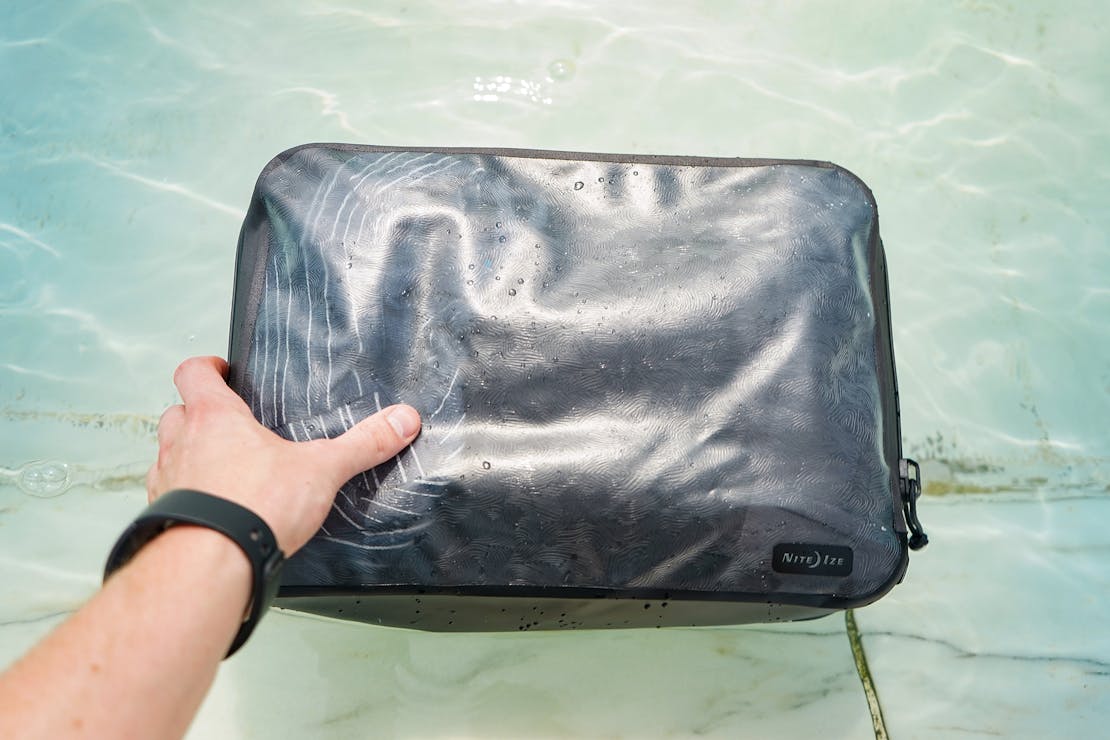
If your travels involve a lot of water, you’ll love these packing cubes since they’re waterproof with RF-welded seams and a toothless waterproof zipper. We’re huge fans of the toothless design, and they compress your clothing to help you save space. The sticky zipper and required maintenance make them best suited for those who really need waterproof packing cubes.
Weather Resistant Packing Cube Pros
- Highly weather resistant
- Tend to be durable and well-made
Weather Resistant Packing Cube Cons
- You probably don’t need weather resistant packing cubes
- Can be pricier than other packing cubes
Integrated Packing Cubes
Some brands will make packing cubes to fit and integrate specifically within their own backpacks. Plus, sometimes it’s just nice (and aesthetically pleasing) to have all your gear match.
Here are a few of our favorite brands that make integrated packing cubes;
Peak Design
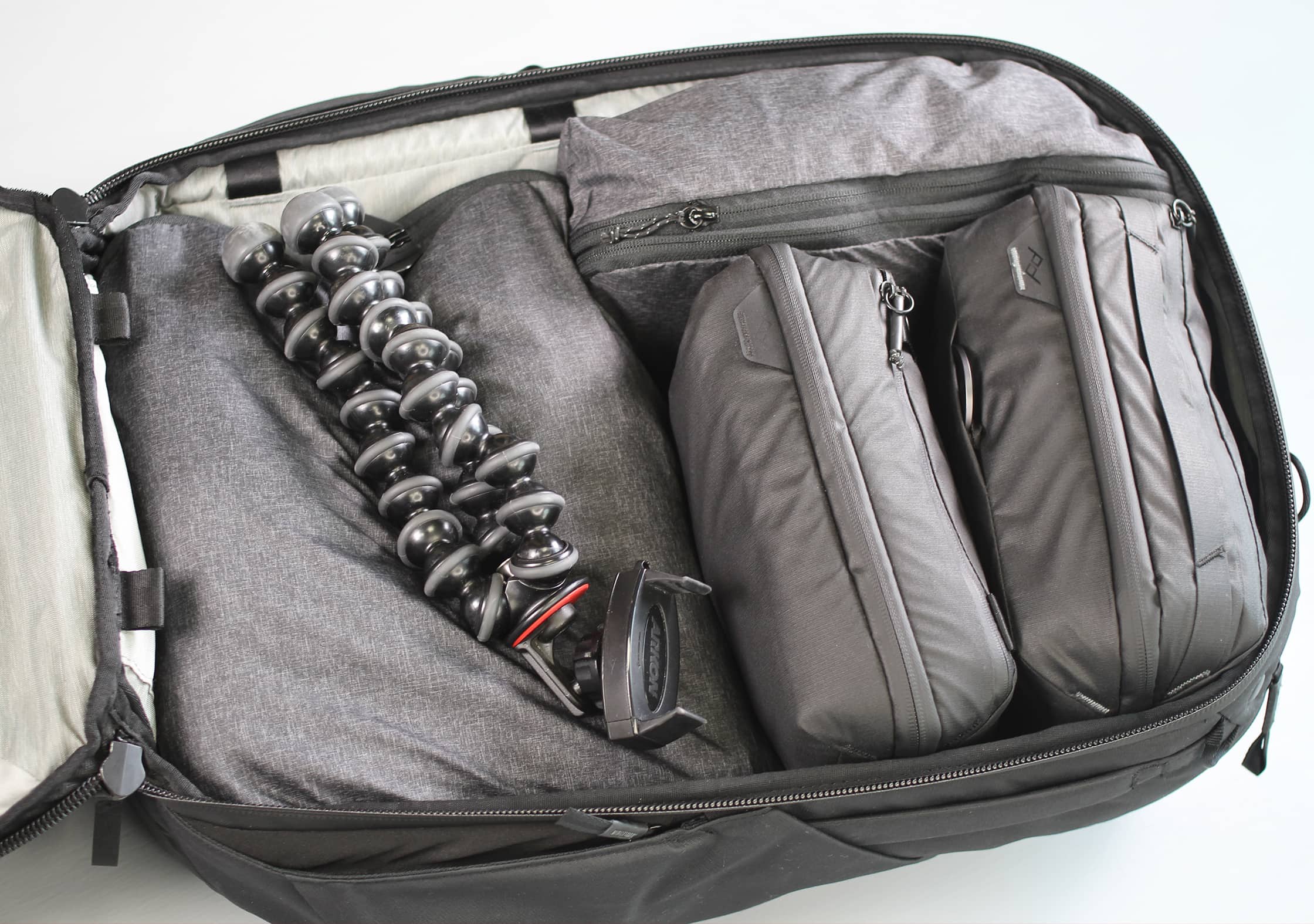
The Peak Design Packing Cubes are made specifically for the Peak Design Travel Backpack. While they’re only available in two sizes, they are compressible and feature a neat self-healing 70D nylon and polyester blend material.
TOM BIHN

TOM BIHN makes a wide range of packing tools that integrate perfectly with their backpacks. And we’re digging the Techonaut/Aeronaut 45 Packing Cubes that are designed specifically for the TOM BIHN Aeronaut 45. You can use this thing as a large packing cube for travel and take it out to use as a daypack when you’re at your destination.
Tortuga
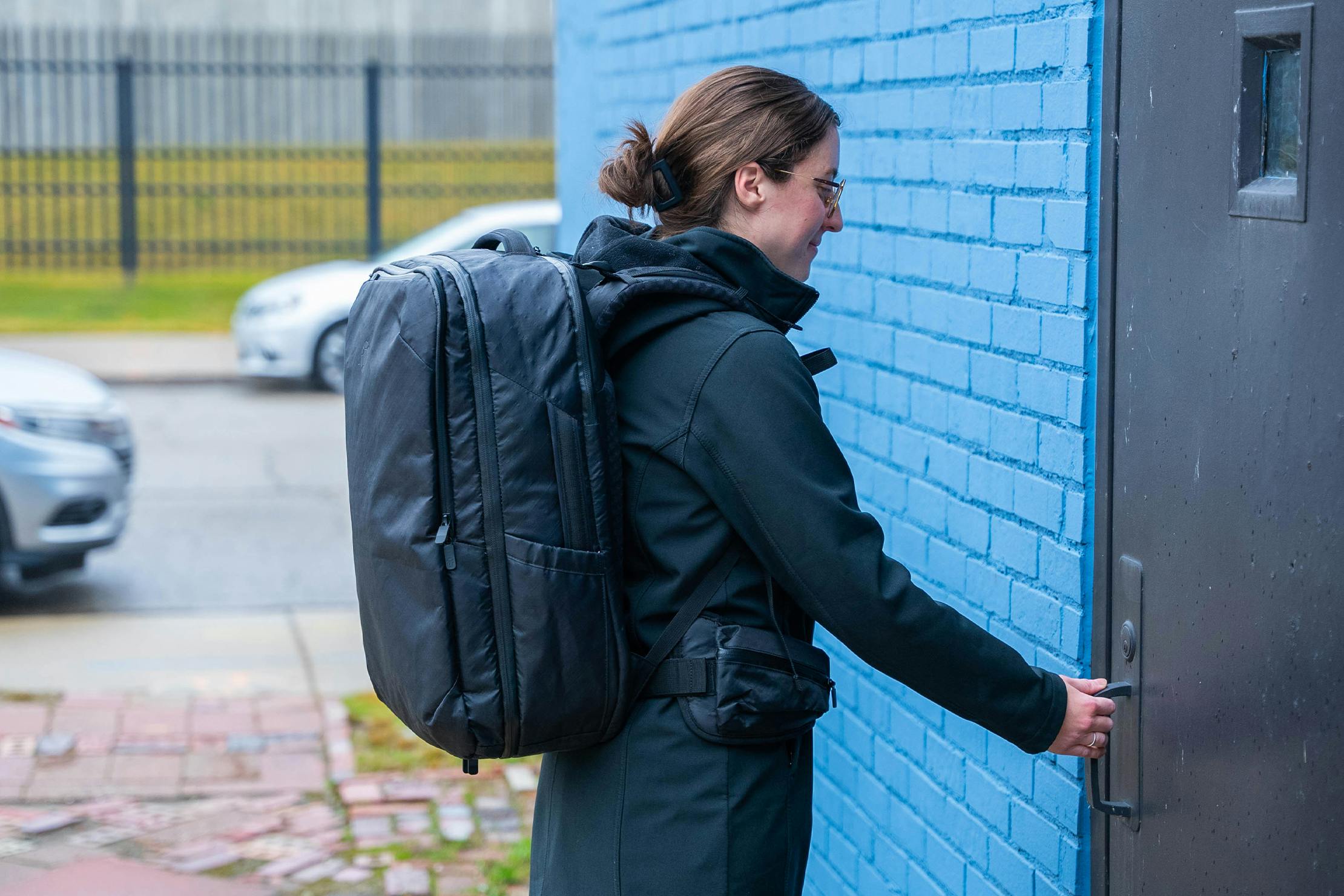
The Tortuga Packing Cubes come as a set of three and the curved corners utilize all the space in the Tortuga Travel Backpack 40L perfectly. They’re not the sleekest packing cubes available, but the 900D Polyester is plenty durable, and the mesh top makes identifying what’s inside nice and easy.
Aer

The Aer Packing Cubes (V3) are lightweight, durable, and pair perfectly with the Aer Travel Pack 3, both in size and aesthetics.
Integrated Packing Cube Pros
- Will fit your compartment perfectly
- You can save money if they’re sold in a bundle with the pack
Integrated Packing Cube Cons
- They may not always be the best packing cubes for you
- They may not be as interchangeable as other packing cubes
Luxury Packing Cubes
If you’re a fashionista looking to make a statement regardless of where you are in the world, luxury packing cubes from high-end fashion brands should be calling your name. While we can’t guarantee these will be the most functional, space-saving, or versatile cubes on the market, if you want to blow your pay check on a Gucci packing cube or pouch, then who are we to stop you?
Luxury Packing Cube Pros
- Stylish and fashionable
- Great way to spend money if you’ve got too much laying around
Luxury Packing Cube Cons
- Expensive
- Heavy
- The materials may feel nice but they’re likely not adventureproof
Conclusion

If you’ve made it this far, congratulations! You’re likely into packing cubes as much as we are, and can see just how brilliant they are at organizing and compartmentalizing your pack.
At the end of the day, there is no “best packing cube,” but hopefully this guide will help steer you in the right direction to pick up the best packing cube for you. It all comes down to personal preference, travel style, and personal use-case. You may not get it right the first time, and that’s okay! Sometimes you need to iterate.
And as always, if you have any questions or suggestions, feel free to drop us a line. We’d love to hear from you.
